20 passive income ideas in 2026 (+ real examples)
Explore the best passive income ideas - from digital products to investing -that can help you earn money on autopilot in 2026.

Passive income is truly a wonder of the 21st century.
In the US alone, roughly 20% of households earn about $4,200 per year in passive income.

Until the late 1900s, most hard-working people were only making active income. Only a few could earn passively through land, business, and stock ownership.
Today, all you need to do is put up an online course or e-book, add some initial work or investment, and you could start racking in the dollars.
And there are so many passive income ideas.
Over the past six months, I have read so much about these passive income ideas. I even tried a few to see how much I could earn.
So in this blog post, I will talk about 20 passive income ideas. I will also show you how you can choose the right passive income idea.
Keep reading.
20 passive income ideas
1. Write an e-book
One of the passive income ideas you should consider is writing an e-book.
In full, e-books stand for electronic books. They are books you can read on your smartphones, e-Readers (like Kindle Fire or Kobo), tablets, and computers.
That’s also the only real difference between them and an actual physical book.
E-books also come in many file formats so that most people can download and read them regardless of the devices they use. These file formats are PDF, e-PUB, MOBI, AZW3, IBA, TXT, RTF, and more.
There are numerous e-books that talk about history, religion, music, audio engineering, cooking, biking, and more. There are even e-books of classic fiction novels like The Count of Monte Cristo by Alexandre Dumas and The Godfather by Mario.
In the self-help genre, you can also find e-books like Charles Duhigg’s The Power of Habit, Robert Greene’s The Laws of Human Nature, and more.
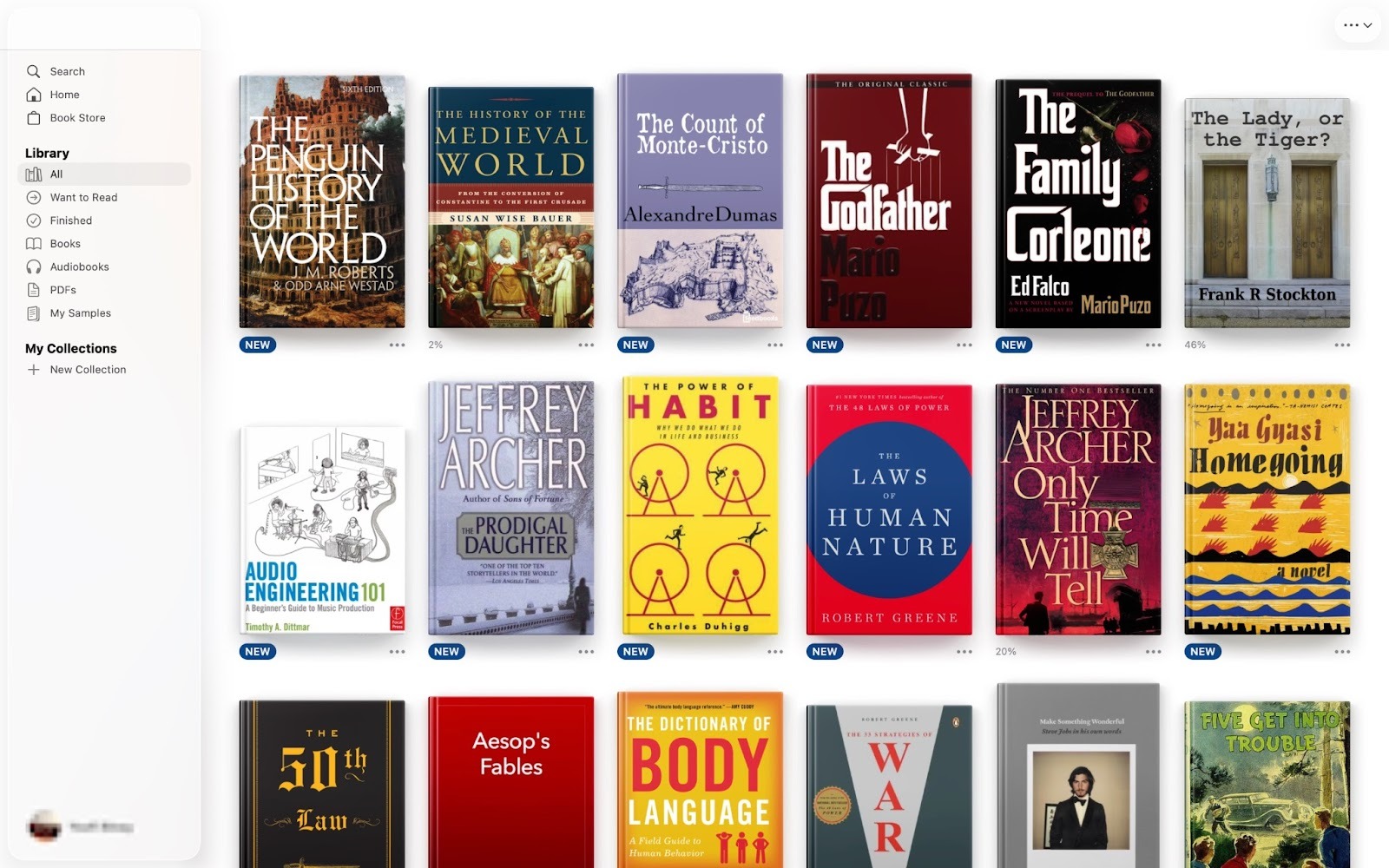
So e-books can be about any topic, genre, or length. And what’s even better is, you can write or create one.
How do you start?
Start with something you know very well. You don’t have to be a psychologist like Jordan Peterson. You just need to have working knowledge of anything your target audience cares deeply about.
For example, you may have excellent knowledge about fitness. So you could write an e-book titled “The 21-Day Home Workout Plan.”
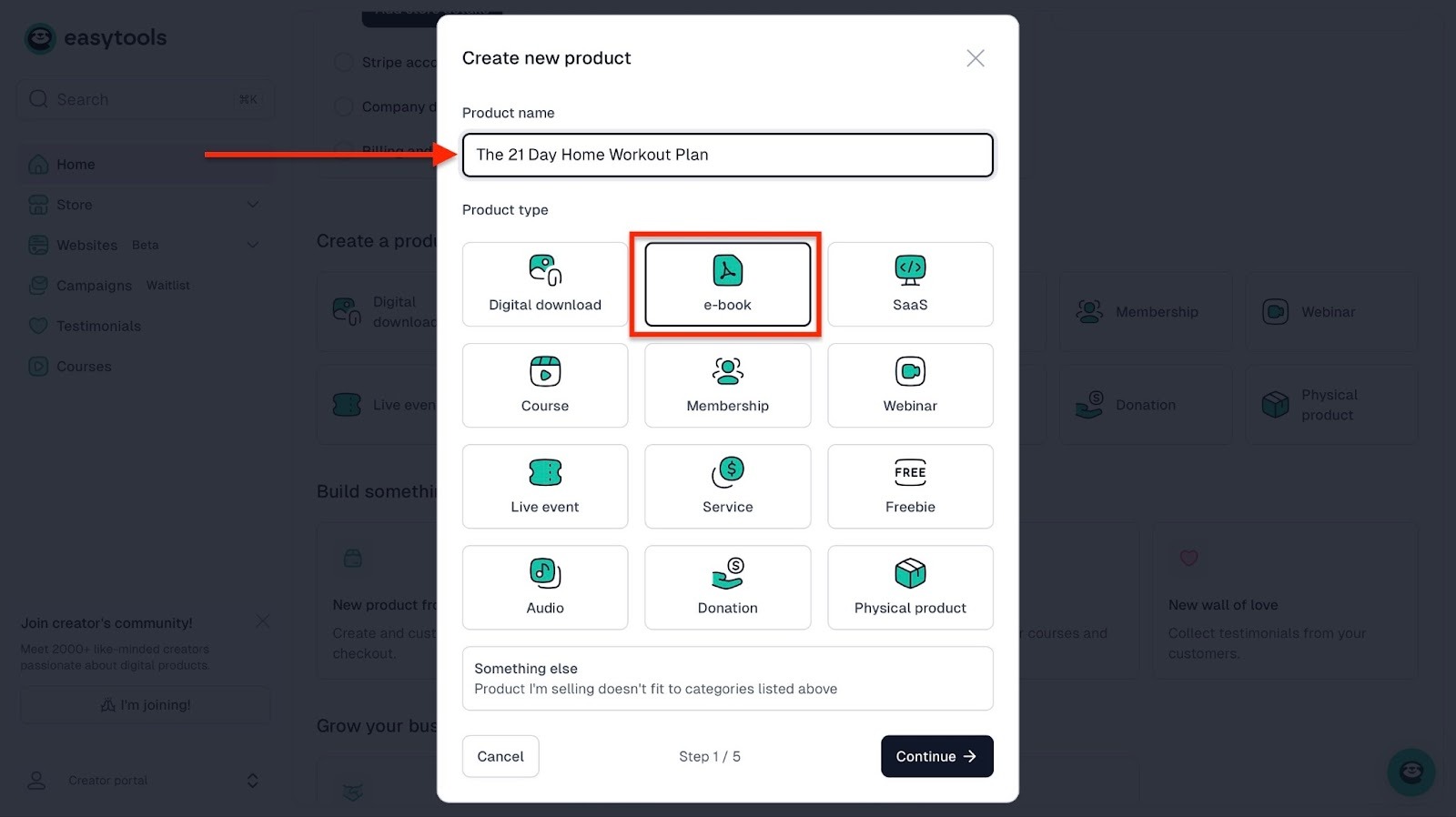
In your book, you could teach your readers how to develop a workout habit away from the gym, using just dumbbells or body weight.
Then create an outline. Break your e-book into sections like
- Introduction: where you talk about the problem
- Body: where you show the solution with examples
- Conclusion: where you show your readers the next steps
For a 21-day home workout plan, your solution could have sets of exercises for shoulders, legs, abs, arms, and chest.
It could also show them the technique for doing an overhead shoulder press with dumbbells. And you could talk about nutrition too.
After you have a detailed outline, start working on your book. You can use tools like
- Google Docs (for writing)
- Grammarly or the Hemingway app (for editing)
As for designing your e-book, you could use Canva, Visme, or Adobe Express. But with platforms like Easytools, where you can sell your e-books, you can use AI to design the cover page.
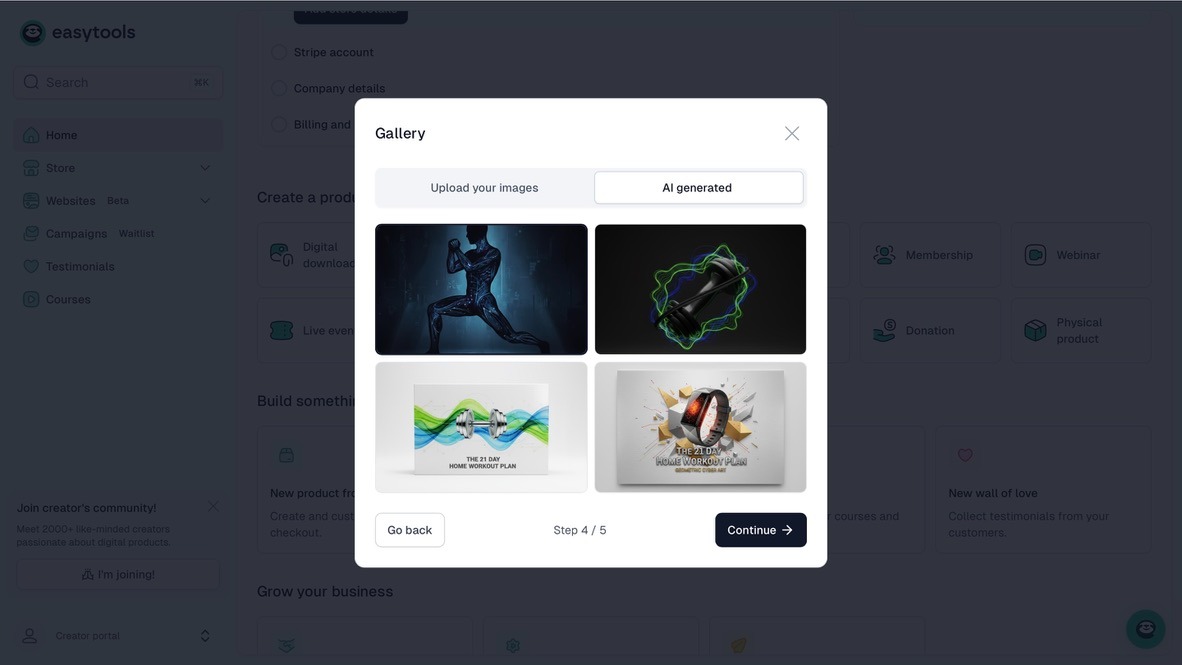
The last thing would be to publish, sell, and market your e-book online. You can sell your e-book on platforms like Gumroad, Kajabi, and ours, Easytools.
If you decide to sell your e-book with Easytools, we’ll make it smooth and reliable. You’ll get instant delivery, automatic invoicing, smart promos, and checkout recovery that help you sell more.
If you decide to sell your e-book with Easytools, we’ll make it smooth and reliable: from instant delivery and invoicing, to smart promos and checkout recovery that help you sell more.
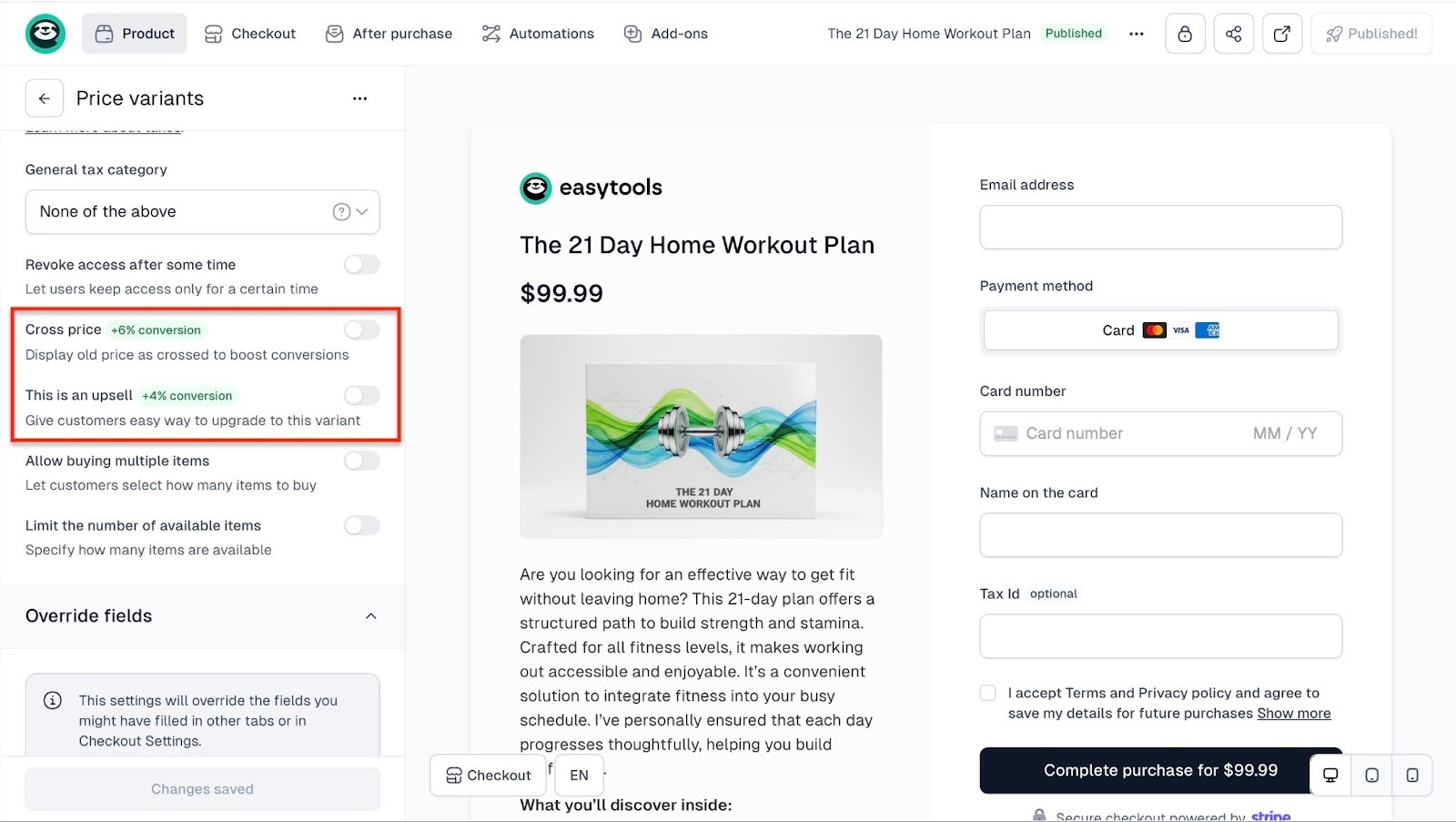
How much can you make per month?
You can earn between $1,000 to $25,000 per month selling e-books. How much you make depends on some factors. Like:
- The platform you sell on
- Your pricing
- The number of books you’re selling
- Your marketing and promotion
I had the opportunity to interview Aleksandra, one creator who sells here e-books using our Easycart. Her e-book titled “Bundle of eBooks: 248 Low-Carb Recipe Inspirations” goes for about $23.92.
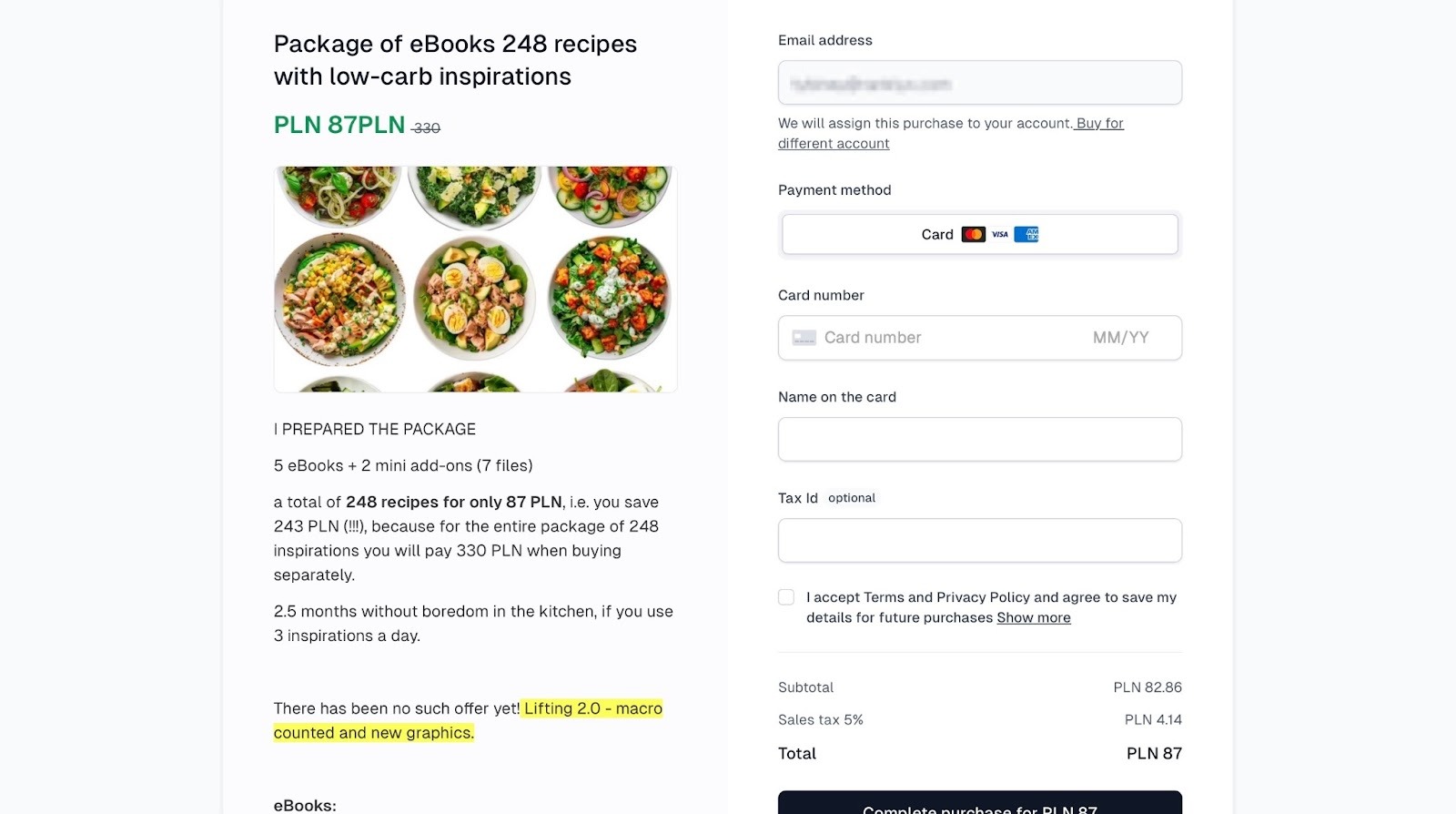
According to her, she made over $30,000 from e-book sales in the month of August alone.
[fs-toc-omit]What I l loved vs What I didn't l like
What I l loved 👍
✅ E-books can be used as a lead magnet for building an email list or membership community
✅ You don’t need a physical store to sell e-books. And you can start selling an e-book right after completing it.
✅ You don’t have to print or ship e-books so it’s cost-effective
What I didn’t l like 👎
❌ You must dedicate time to write it if you want to provide value for readers
❌ For your e-book to reach the intended audience, you may have to invest in costly paid ads and marketing campaigns
2. Create and sell templates
Creating and selling templates is another passive income idea I’ll recommend. Templates are ready-made files you create for others to customize and use.
You can create and sell them along with other digital tools. For example, you could create a workout tracker template to sell with your “The 21 Day Home Workout Plan” e-book.
The template could be a sheet that shows which workouts to do on what day and for how long. It could also be a structure for meal plans that guide customers when planning their meals.
Your customers could download that for free while they decide to buy your e-book too.
You could sell templates like invoice, websites, email marketing plans, and expense tracking templates to businesses.
There are also templates you could create for YouTubers. Which they can use for their video thumbnails.
There are a lot of templates on Canva for this very purpose.
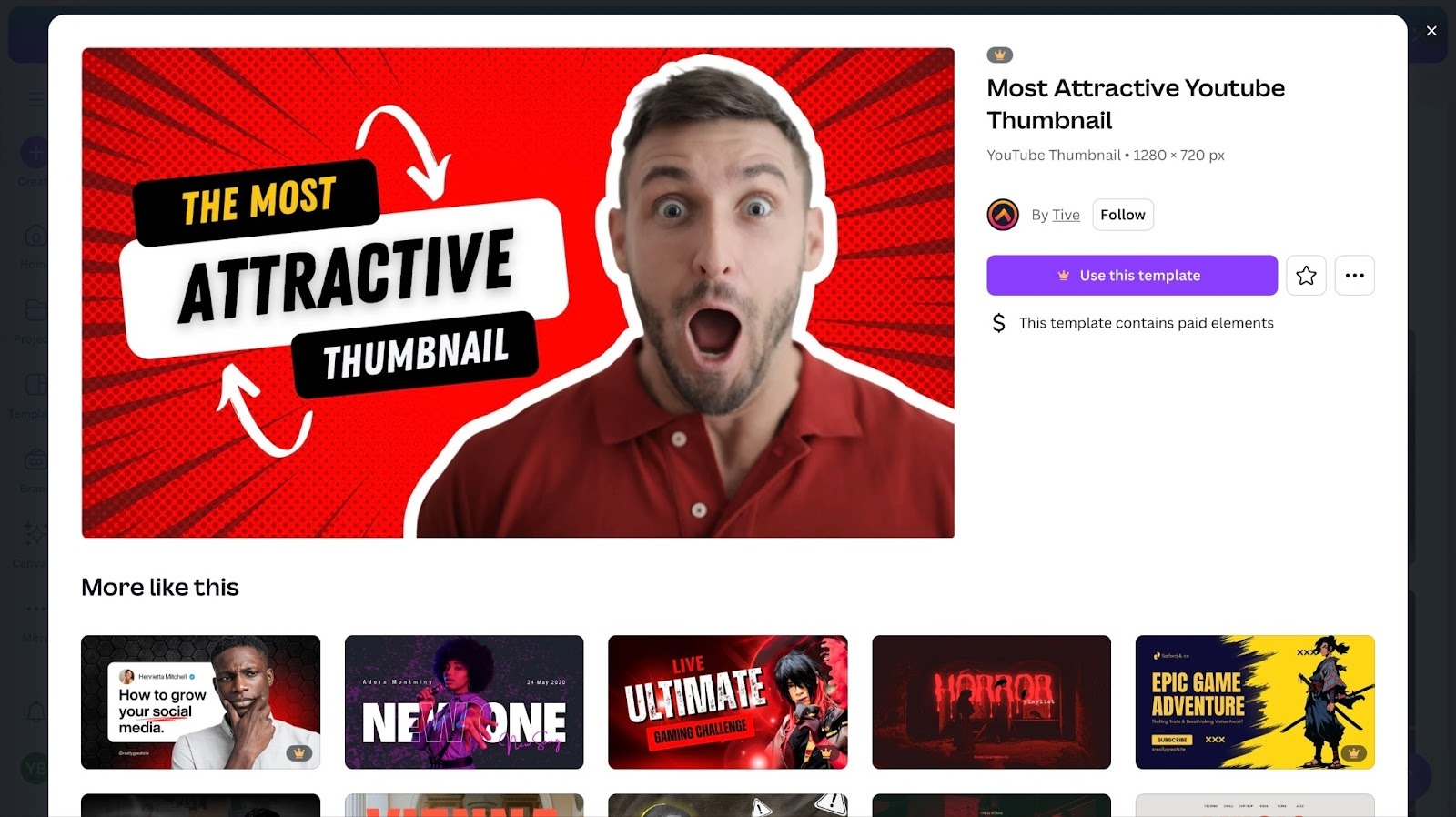
Templates save you time because you don't have to create your own from scratch. And that’s a convenience most people want.
How do you start?
You need a good computer and design software to start creating templates.
Software like Notion, Canva, Adobe Express, VistaCreate, and Snap. If you are already a pro, then you can use the likes of Figma, Adobe InDesign, Adobe Photoshop, and Adobe Illustrator.
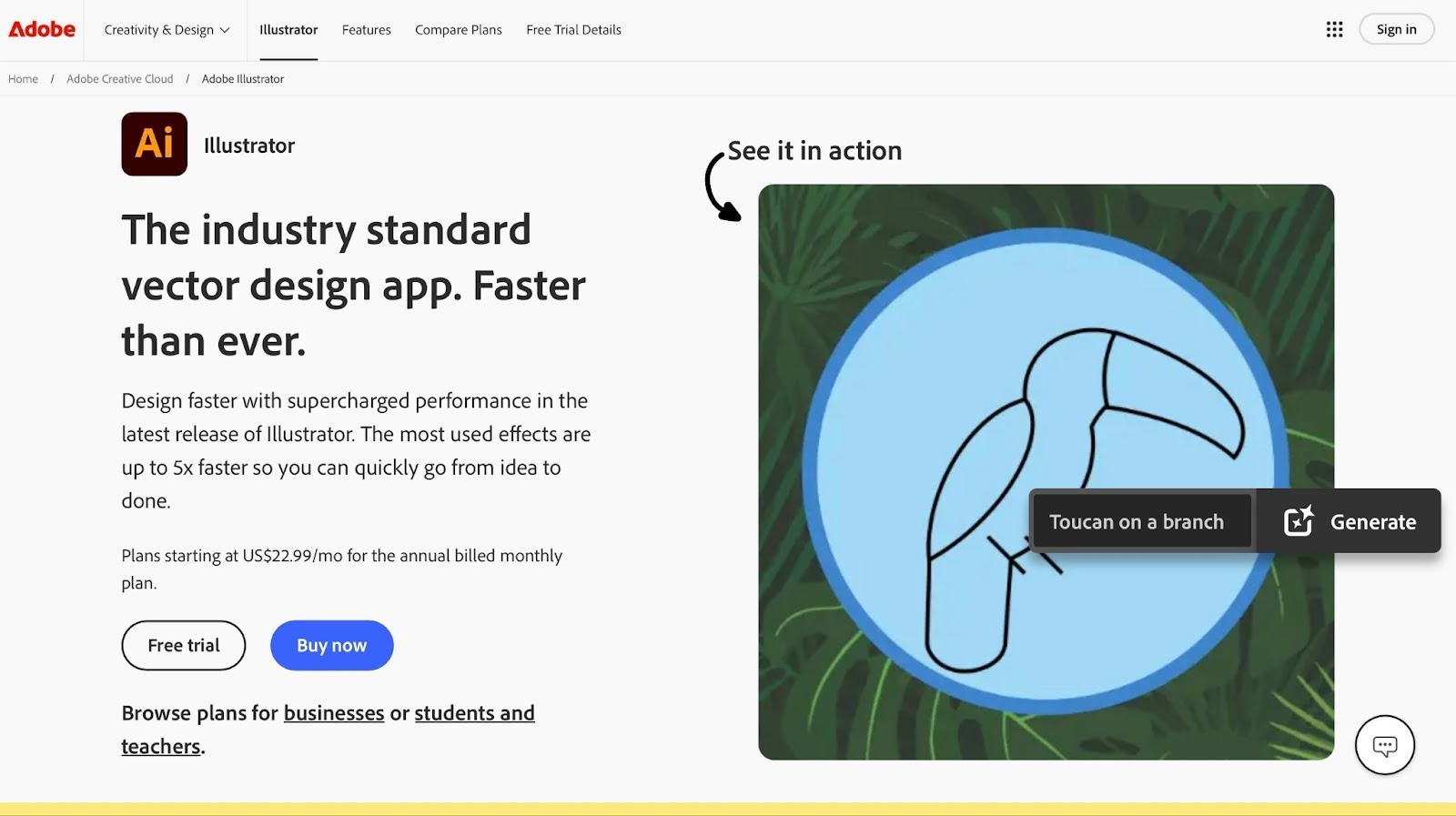
Now, say you use Notion and have created some templates you’d like to sell. Easytools has a step-by-step guide to help you sell them.
Easy also has tools like 1-click checkouts, customizable storefront, automated digital delivery, and more to help you sell templates.
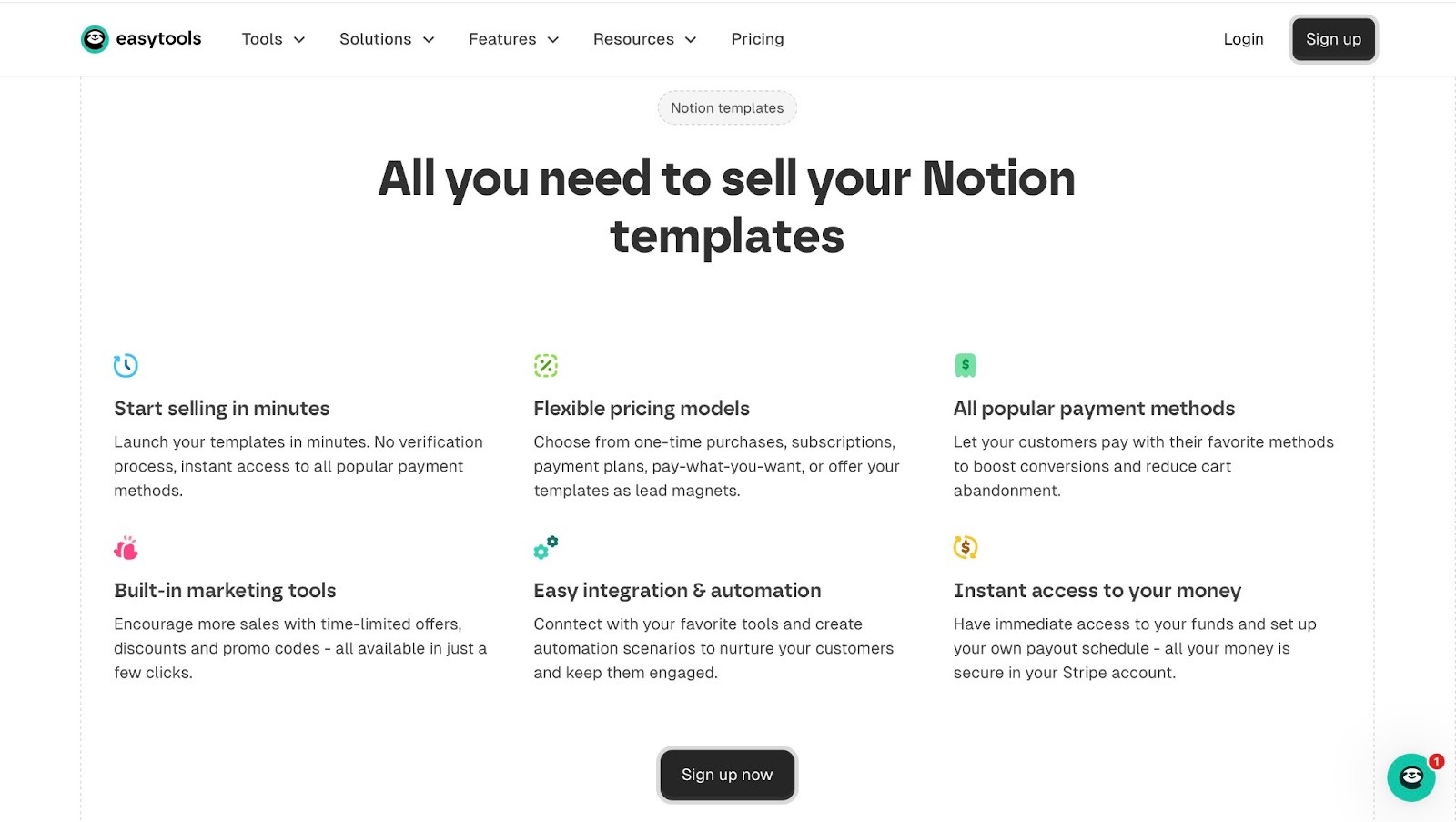
For presentations and productivity templates, simple software like Google Docs, Microsoft Word, and PowerPoint should be okay.
If you're more into data and infographics, then you should consider Piktochart.
Now, once you've done the hard part of creating your templates, you have to sell them. You could sell them on Easytools, Etsy, Payhip, Canva, etc.
On Easytools, for example, you could copy the link of your product on Canva and add it to Easycart (Easy’s checkout).
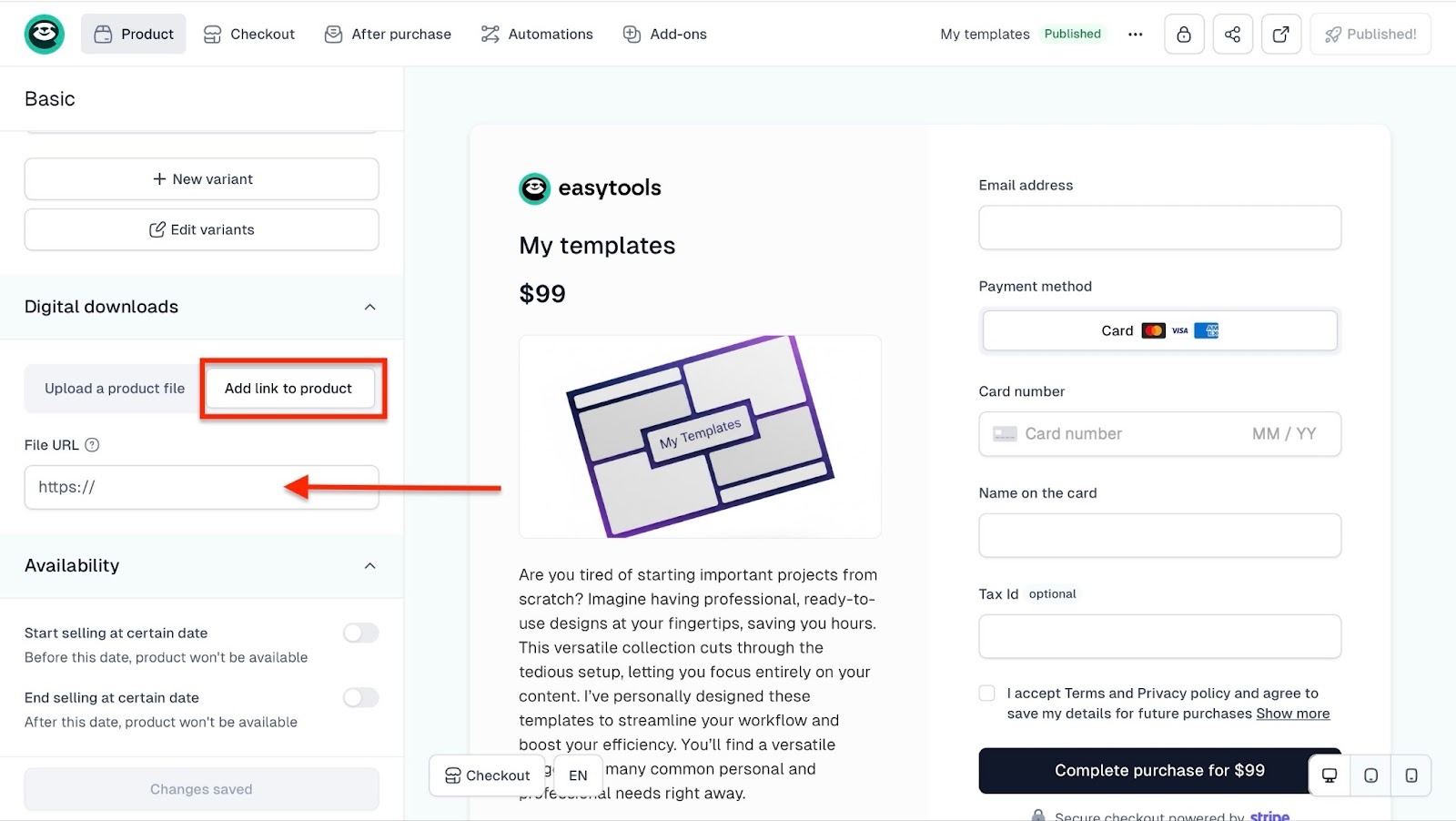
Pascio, a content creator and entrepreneur known for sharing productivity and Notion insights on X recommends Easytools.
Here’s what he had to say:
“Looking for a Gumroad alternative?
- Great, custom UI and high conversions
- Upsells, cross-sells, affiliates
- 1-click checkout & recovery
- 70% lower fees”
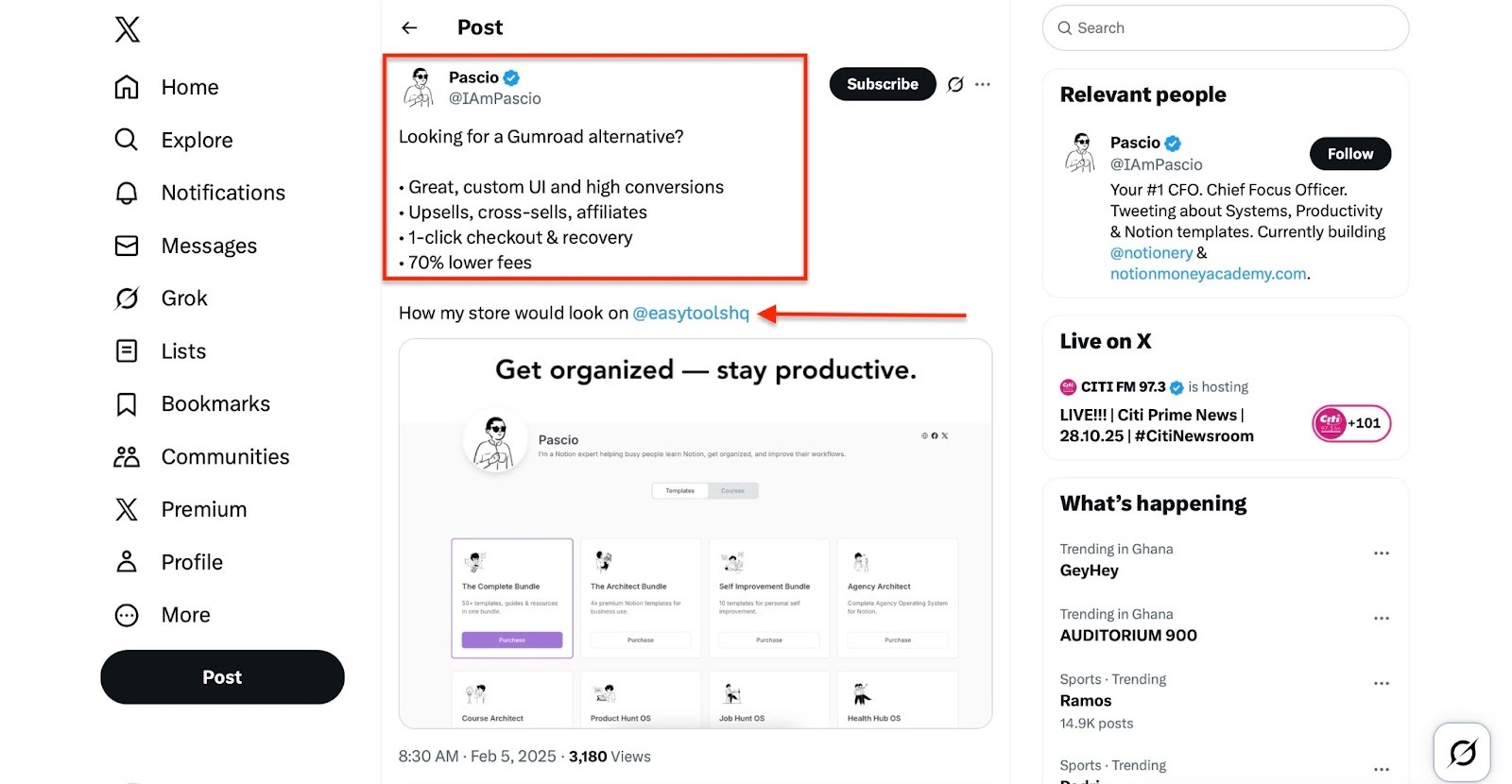
How much can you make per month?
You can make $100 to $10,000+ selling templates online.
Again, you need to remember that there are some key factors that influence your earnings. Your pricing, for example, could affect how much you earn.
If your templates are high quality, you could sell them at top dollar, but that could bring in fewer sales.
Factors like the platform you sell on, your niche, and your advertisements and marketing all matter.
[fs-toc-omit]What I loved vs. What I didn’t like
What I loved 👍
✅ You can bundle up templates with other digital products like online courses to deliver more value
✅ You can start earning passive income quickly by creating templates because they are easy to market
✅ With the right marketing, it can scale very fast, increasing your potential to earn more
What I didn’t like 👎
❌ It can require effort and creativity to make attention-grabbing templates, and sometimes it may not feel passive
❌ They can be low-priced, so you need a huge number of customers to start earning decent passive income
{{cta-banner-1}}
3. Create a simple AI SaaS tool
The next item in my list of passive income ideas is creating a simple AI Software-as-a-Service (SaaS) tool.
A simple AI SaaS tool is a cloud-based app that uses artificial intelligence to help end users do specific tasks automatically and easily.
Examples are ChatGPT, Jasper AI, Instantly AI, and Fred (Fireflies).
Each of these tools focuses on a particular task. ChatGPT, for example, is for researching and writing.
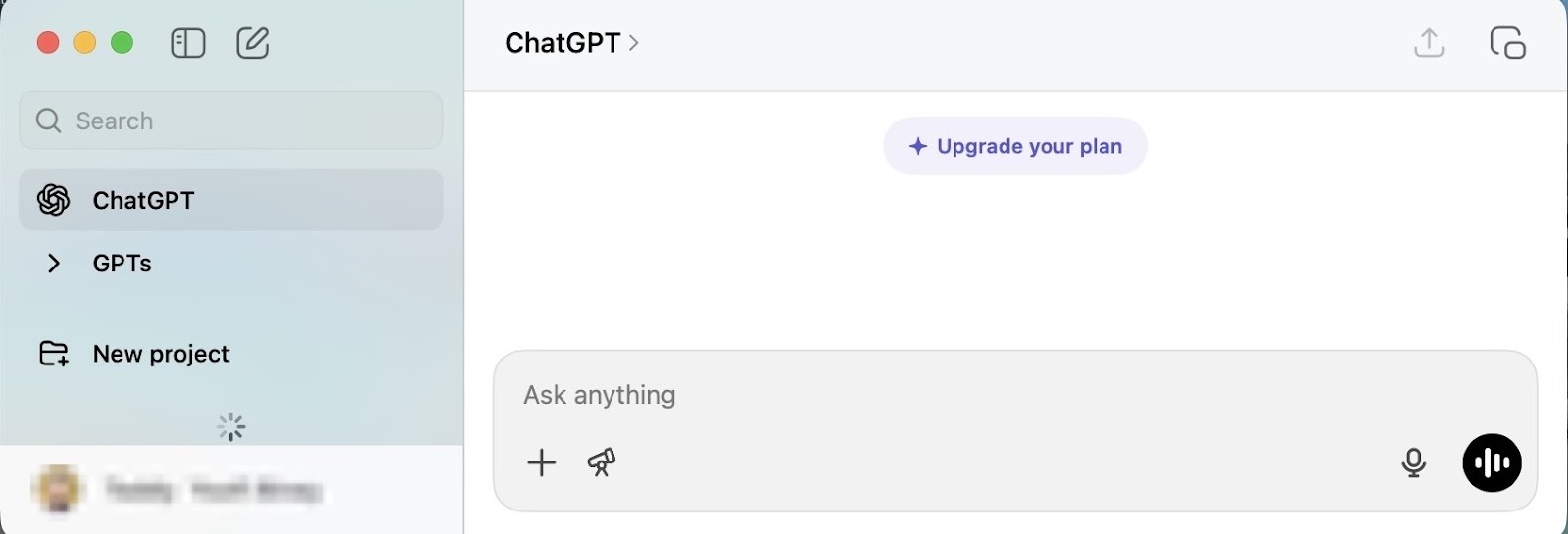
Jasper AI for copywriting, Instantly AI is for email outreach automation, while Fred is for meeting recording, summarization, and note-taking.
Creating such tools isn’t just for tech-savvy guys. It’s for anyone who’s willing to learn. However, it’s not a walk in the park.
You have to realize a problem in your niche, then create a tool with AI that can solve this issue.
Imagine you’re a guitarist and you realize that most music producers have a hard time creating guitar riffs. And that there aren’t a lot of seasoned guitarists to pull that off.
So, with a music producer friend of yours, you could use AI to create a SaaS tool that generates guitar riffs based on the song’s chord progression.
That could be the start of the creation of a simple AI SaaS tool you could sell online.
How do you start?
To create a simple AI SaaS tool, you would have to:
- Identify a problem
- Think of a practical AI solution
- Build something small that solves the problem
So basically, to identify a problem, you want to find out what challenges people face in a niche. You want to know whether it’s repetitive or time-consuming.
Then finally, you want to see if AI can make that process faster and better.
After that, you don’t have to build an AI from scratch. You can integrate with existing models like OpenAI API (ChatGPT), Hugging Face APIs, Replicate, Google Vertex AI, and others.
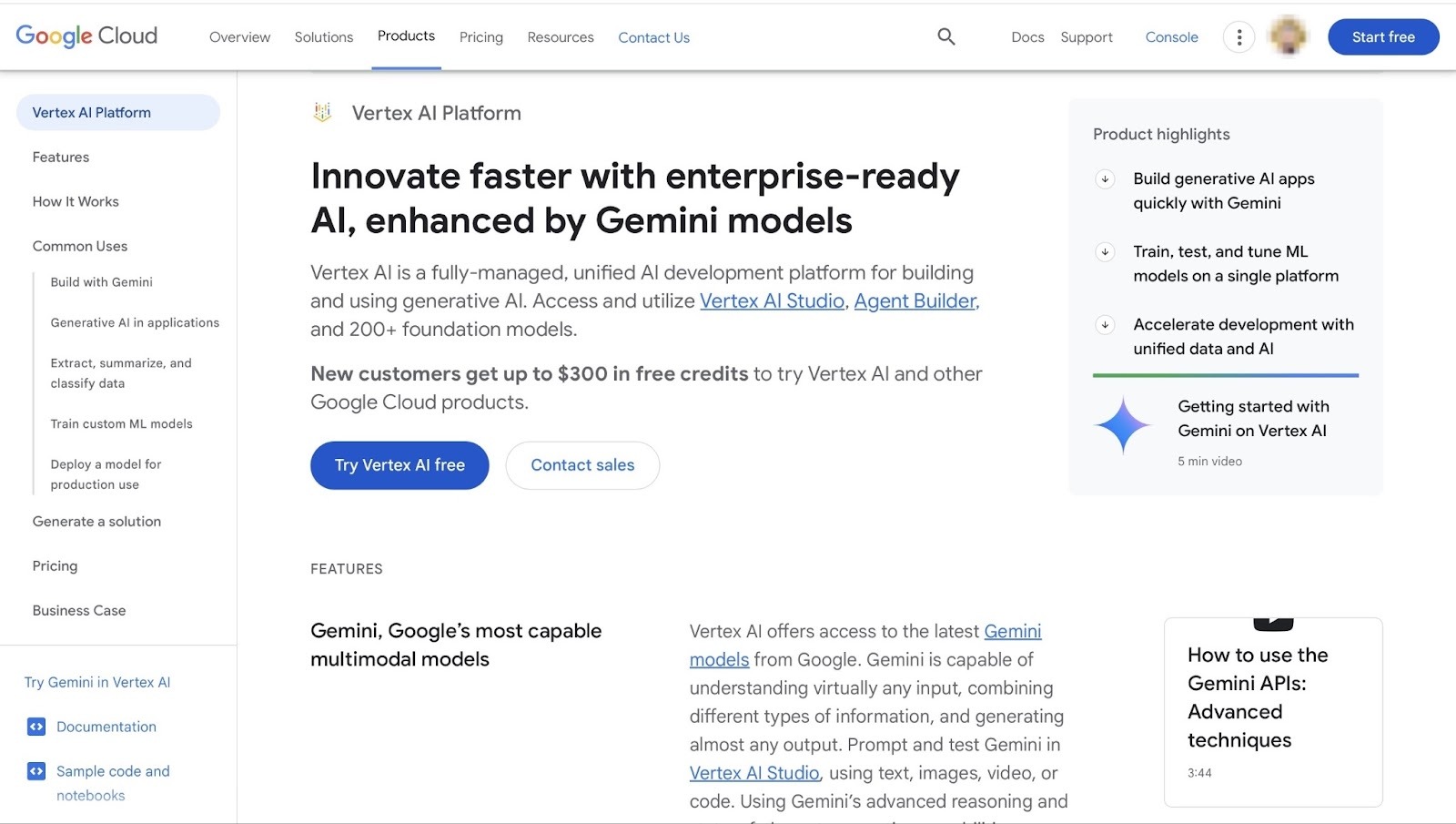
Then, you’ll need a simple web app. You can hire a developer through Upwork or Fiverr. Or you could use no-code platforms like Bubble, Soft, and Glide. You could also use Zapier for simple automations.
Once your tool works, add payment gateways like Stripe or Easycart for subscriptions.
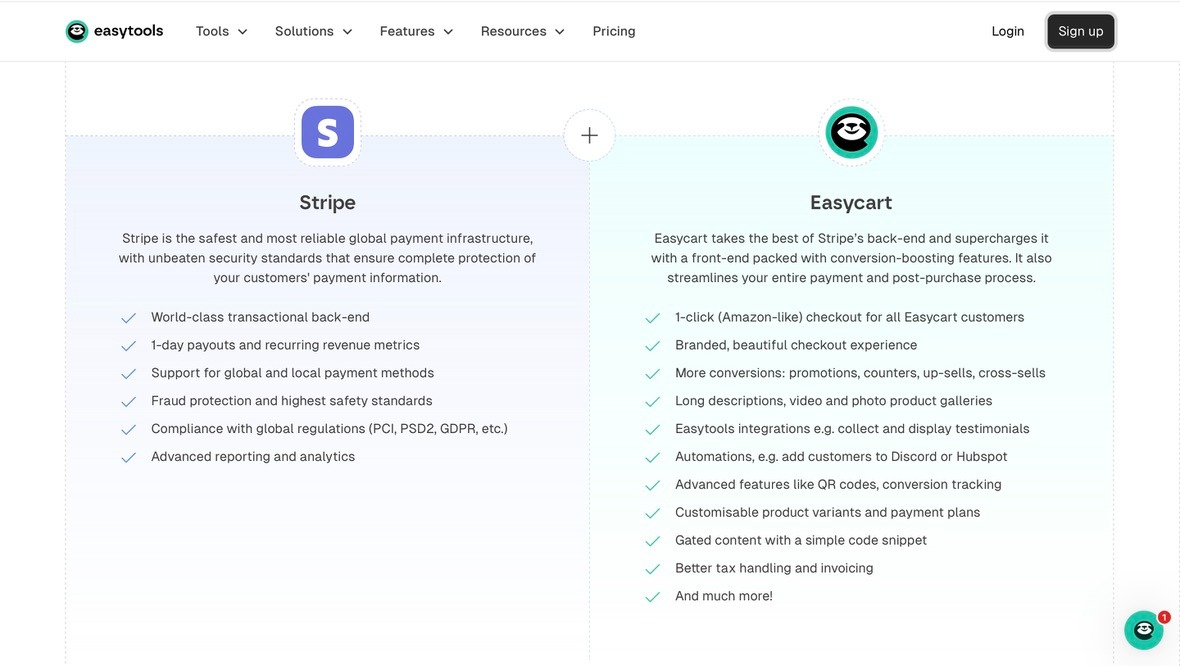
How much can you make per month?
You can make $500 to $40,000+ per month. Imagine your simple AI SaaS has a basic subscription fee of $50 per month. That could easily make you $5,000 if you have 100 subscribers.
And if you sell on a platform that takes only a 2% transaction fee for its Creator plan at $59, then you could end up making some good profit.
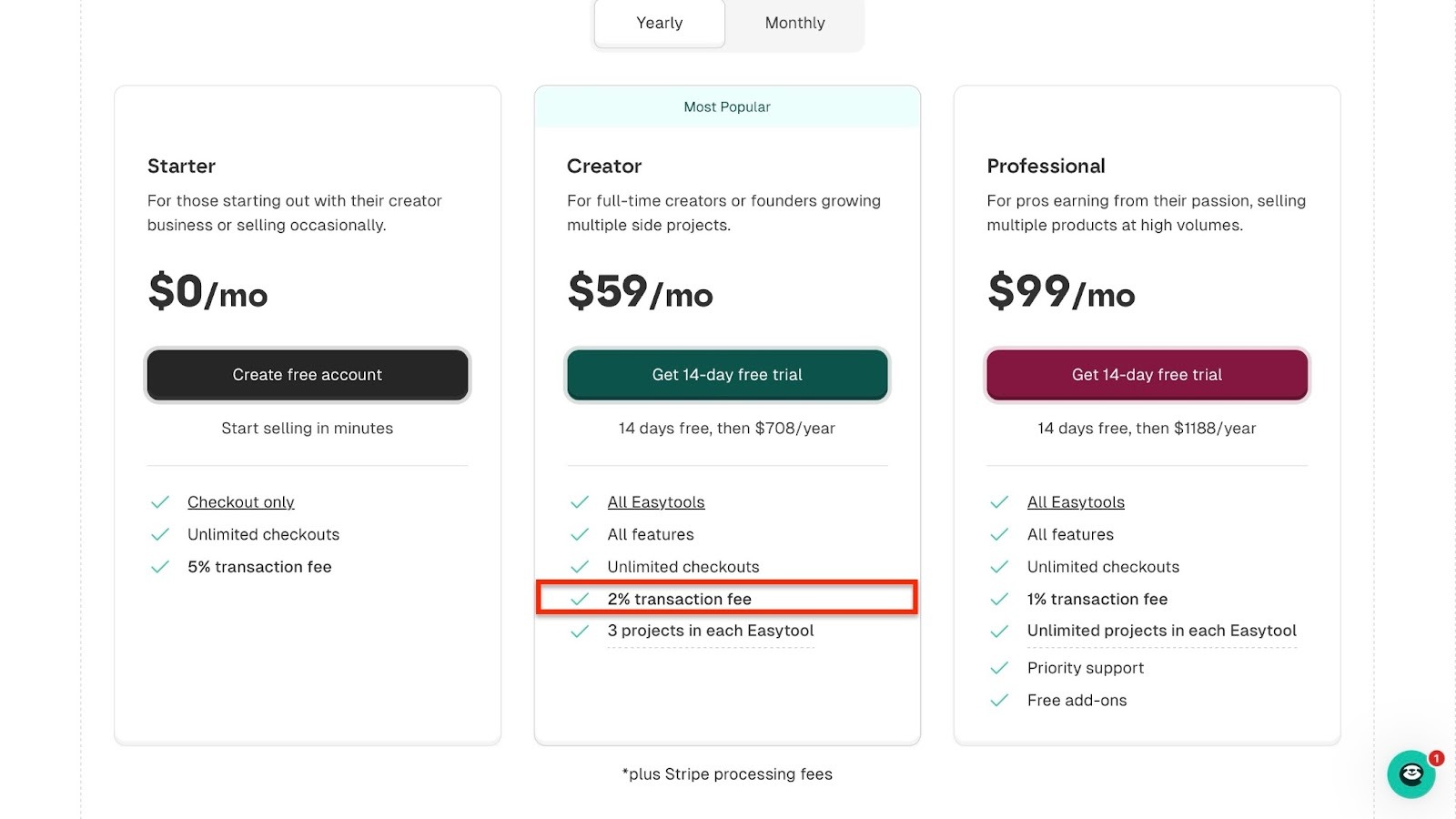
[fs-toc-omit]What I loved vs. What I didn’t like
What I loved 👍
✅ You can earn so much passive income if your tool solves a major pain point of customers
✅ You can charge your customers a recurring subscription fee to make steady passive income
✅ There are many educational resources online for creating a simple AI SaaS tool, so you can learn more and improve your product
What I didn’t like 👎
❌ It can cost about $5,000 to $10,000+ in total to create a simple AI SaaS tool
❌ You need to continuously improve your product, and this can make it feel like a full time job
4. Host a membership community
Hosting a membership community is the next passive income idea we’ll discuss.
You can earn recurring income from members who pay to access exclusive content, discussions, and resources. You may earn this income monthly or yearly.
Grzegorz Piekarczyk, marketer and creator of AI Sphera, for example, earns income by selling paid access to his community.

Grzegorz sells his subscriptions through Easytools, so he uses three price variants. He offers a monthly subscription for $27.16.
He charges $153.41 for an annual subscription and $483 for lifetime access to his community.
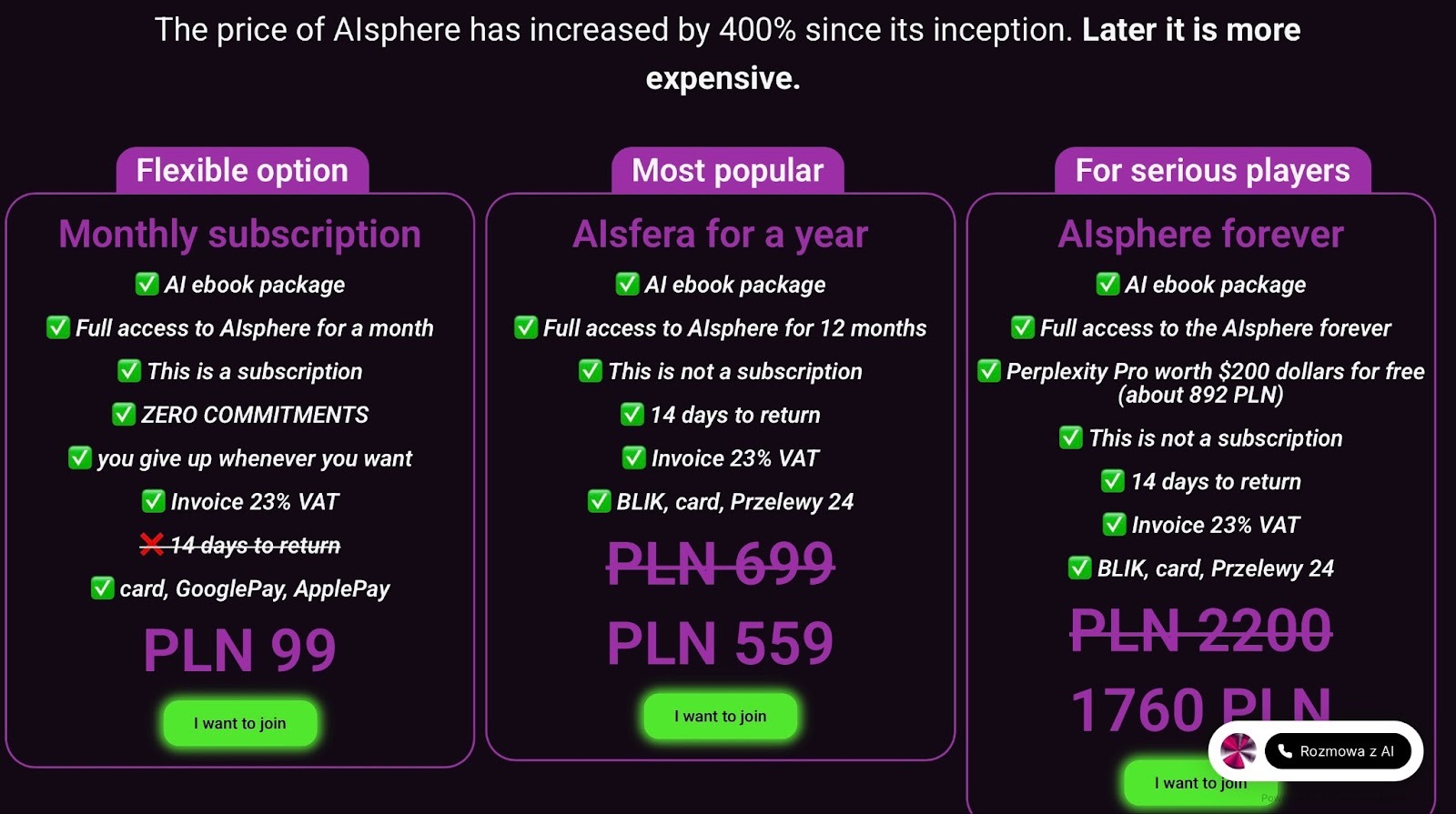
His checkout conversion rate sits between 50% and 65%, and he credits Easycart for that.
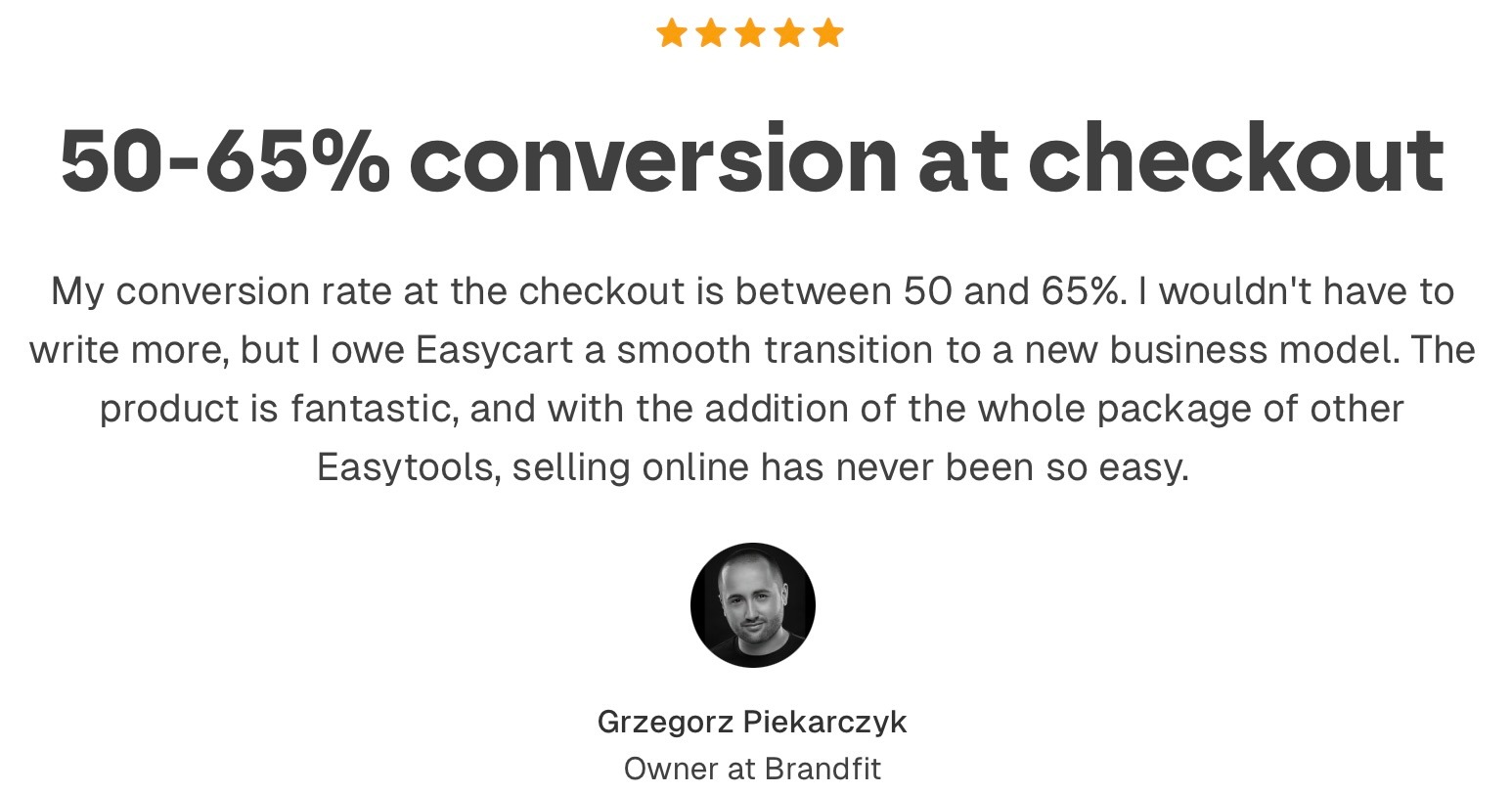
Now, as a creator you can host your communities on platforms like Circle, Discord, Patreon, Kajabi, and Skool.
Creators (like Grzegorz) can also host their website on Easytools and provide a link to their integrated community on either Circle or Discord.
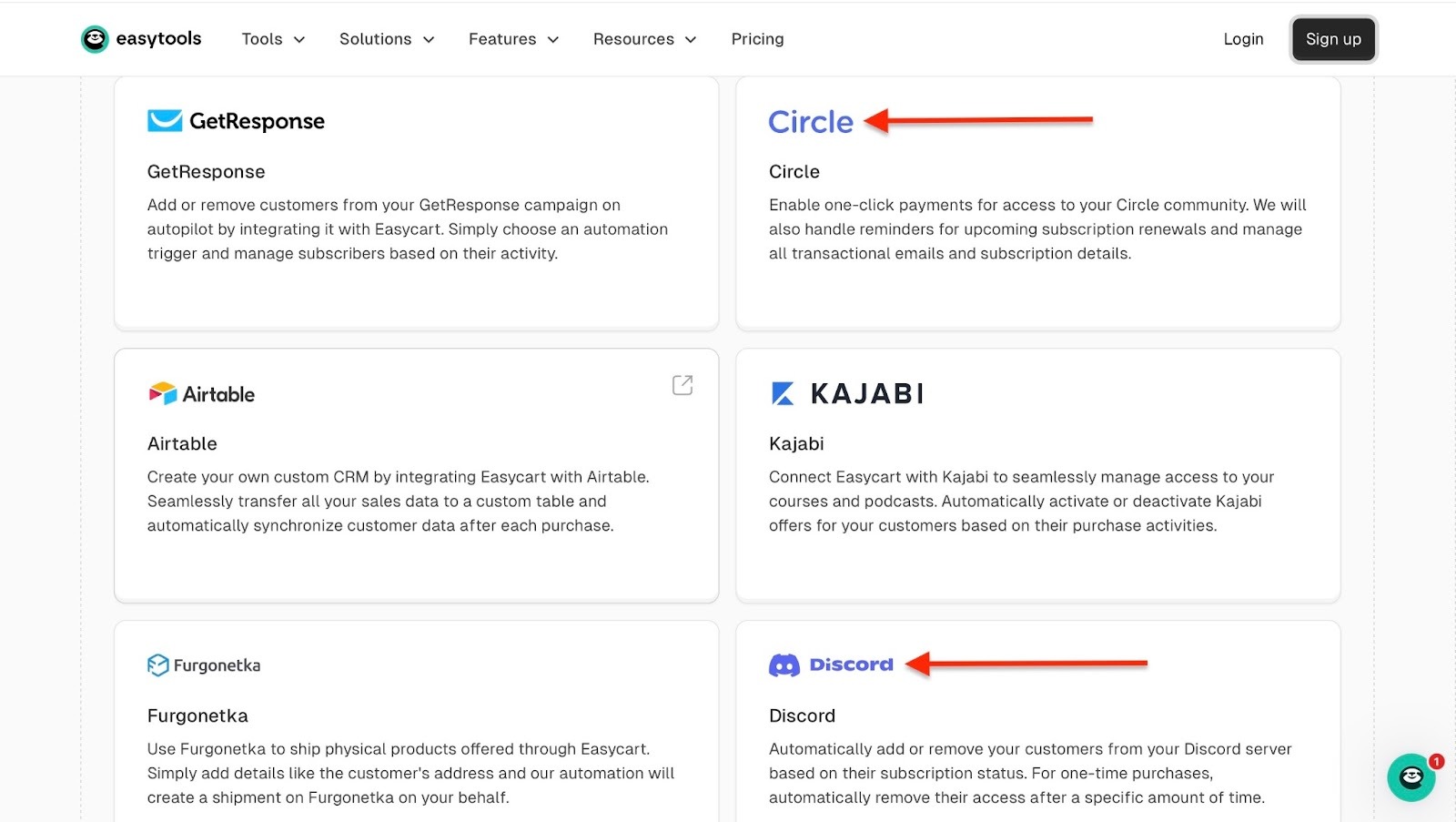
Once the community is set up, onboarding is automated. Members can then start engaging with each other.
Hosting an online membership community creates passive income by:
- Making it easy to generate income from other digital products
- Building trust and confidence among members about the value you provide
How do you start?
You can start hosting a membership community even if you're a beginner.
There are questions you must ask yourself, though. Like,
- What problems will my community solve?
- Who would pay to be part of it?
- What value will members get?
For example, you could be a professional content marketer. You may want to start a community to teach about SEO, GEO, and how to write content that converts.
There will be aspiring writers who may want to be part of your community. Also, you could give your members value by sharing SEO updates and jobs that they could apply to.
You can also create online courses and pair them with community memberships. You could even create tiered membership plans.
So that when students buy a high tier, they will have access to your community and perhaps private sessions with you.
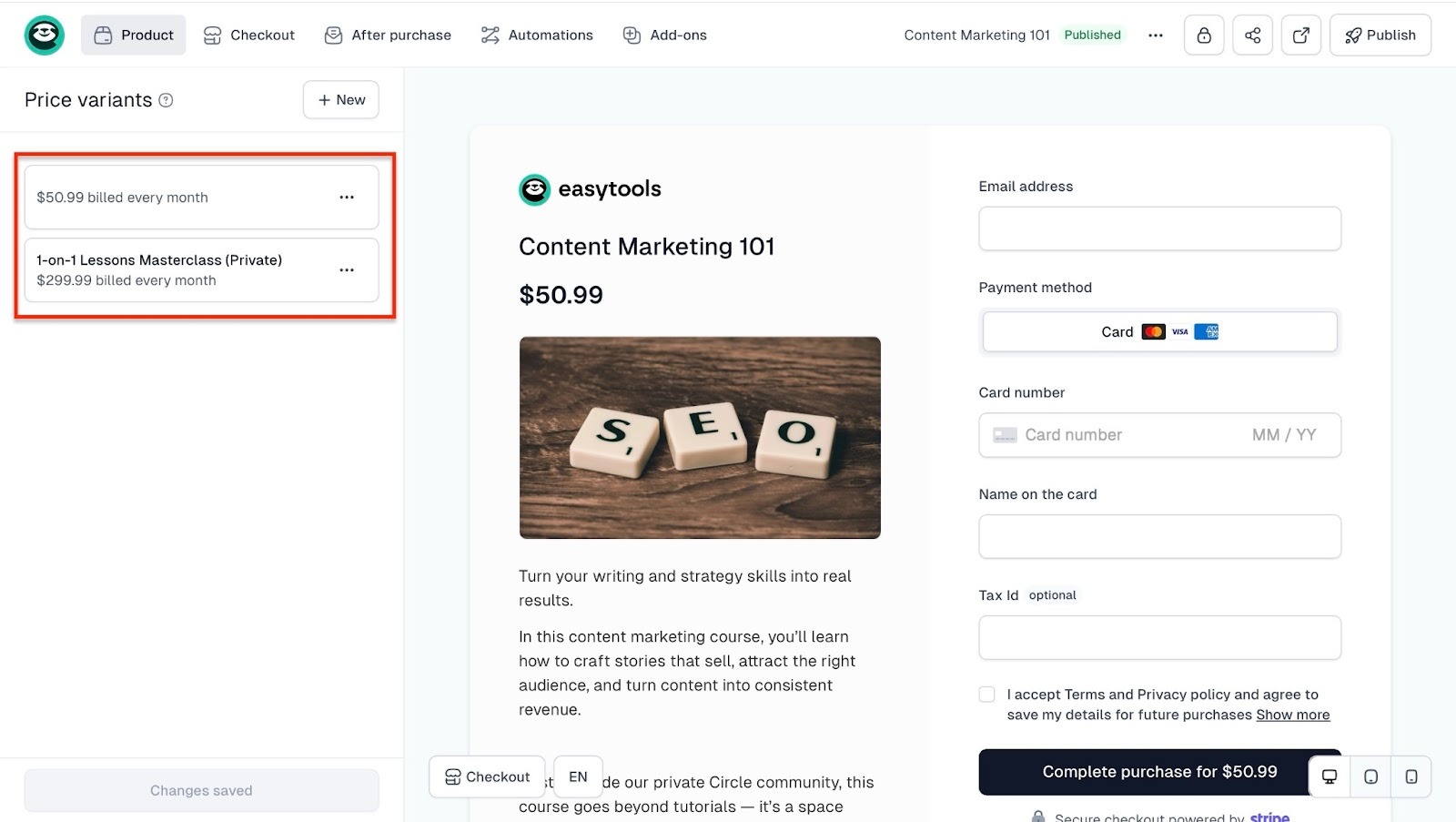
To make community hosting passive, you must automate tasks like:
- Welcoming new members
- Sending onboarding emails
- Scheduling content releases
- Renewing subscriptions
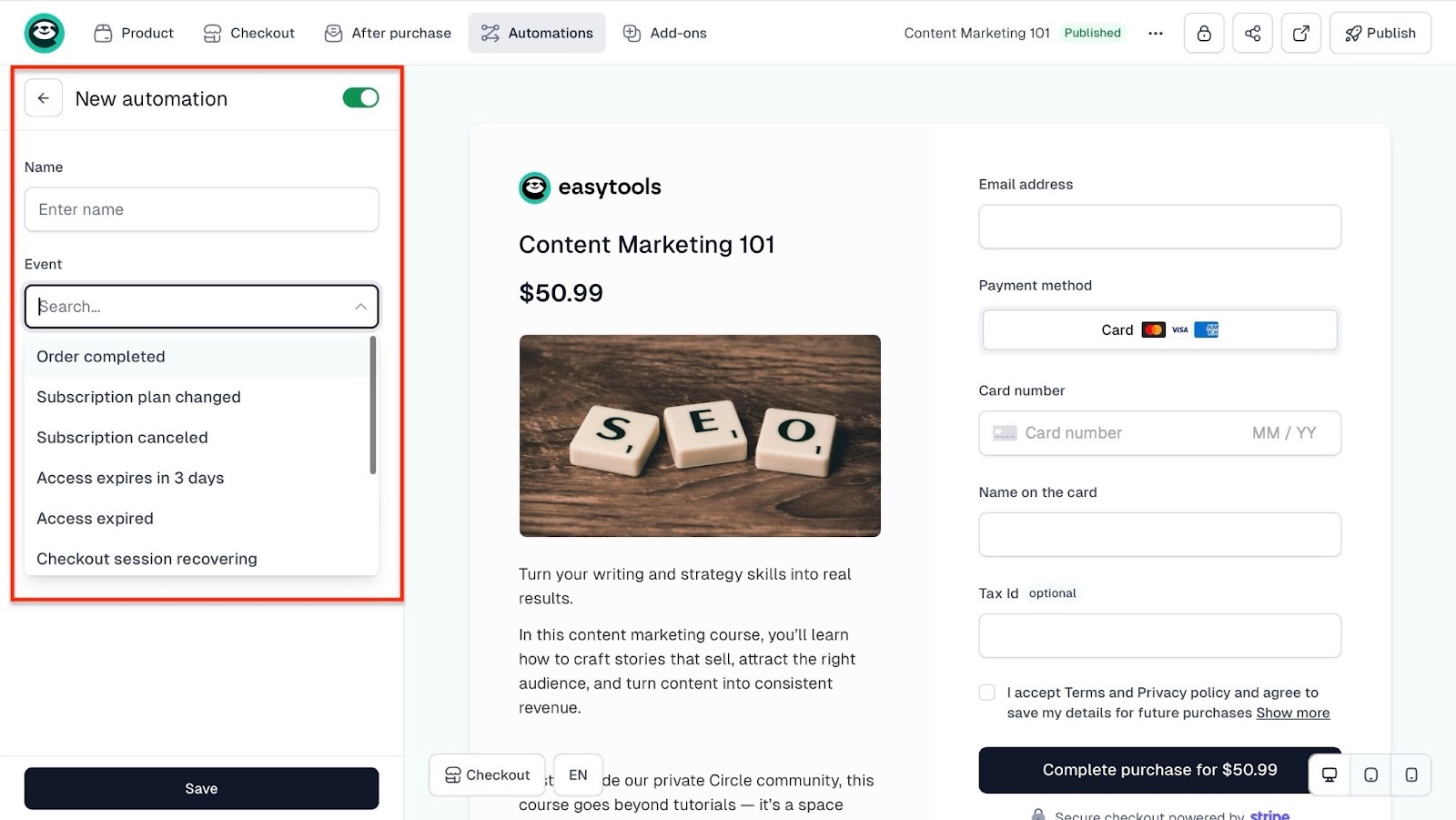
How much can you make per month?
You can make about $100 to $1,000 with a small community. Let’s say 50 members paying $20 per month.
A growing community of about 300 members can make about $6,000 to $8,000 per month in passive income.
That’s roughly $72,000 to $90,000+ per year.
For proof, I used Circle’s online ROI calculator. If I had 10,000 email subscribers who paid $30 as a monthly membership fee, I’d make $203,477 per year in five years.

[fs-toc-omit]What I loved vs. What I didn’t like
What I loved 👍
✅ You will earn a predictable passive income because of member loyalty
✅ You also have a real opportunity to scale because you can bring in new paying members
What I didn’t like 👎
❌ You need fresh ideas and constant engagement to retain members, and that can feel like active work
❌ It can take years before you start earning a decent income from selling memberships
5. Affiliate marketing and referrals
Next on this list of passive income ideas is Affiliate marketing.
Affiliate marketing is promoting products and services of a company or another creator, and earning a commission for every sale made through a unique link.
You don’t have to create the product or handle customer service. All you have to do is promote it.
You’ve probably watched thousands of YouTube videos where the creators have asked their viewers to use “the link in the description.”
Yes. That’s an affiliate link.
YouTuber Mat Armstrong always shares his Car Vertical affiliate link.

Once one of his viewers or subscribers pays for Car Vertical’s service through his link, he earns a commission.
That isn't difficult.
Plus, there are notable big tech companies like Apple, Amazon, Microsoft, Shopify, and Adobe that offer affiliate marketing opportunities.
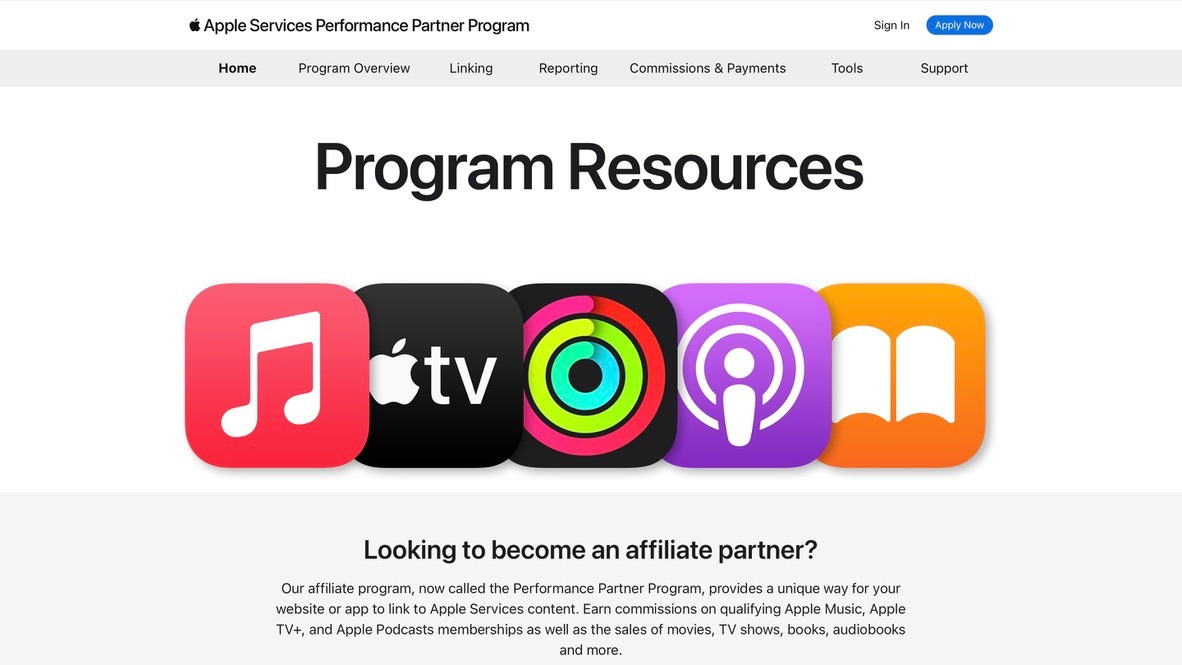
For example, Apple lets you earn commissions on Apple Music, TV+, Books, and other digital services (not hardware like iPhones and Macs).
Companies like Amazon will withdraw your application as an affiliate if you're unable to make enough “qualifying sales for 180 days," or six months.

The good news is you can apply for another one.
How do you start?
To start affiliate marketing, you must first pick a niche. It could be tech gadgets, music and audio gear, fitness, online courses, or software.
After picking a niche, you can then decide which affiliate programs to join.
You must promote the services and products you trust. It’s easier to appeal to buyers if you genuinely believe in what you're promoting.
The next thing would be to create content that promotes those products and services. Also, to build trust, you always have to disclose that your posts include affiliate links.
For example, if you want to help other creators find Easytools and start selling their online courses and other digital products, you just need to copy your referral code.
You can do that right from the homepage of Easy’s customer portal. After a creator who registered through your referral code makes $1,000+ in sales, you will receive $100.
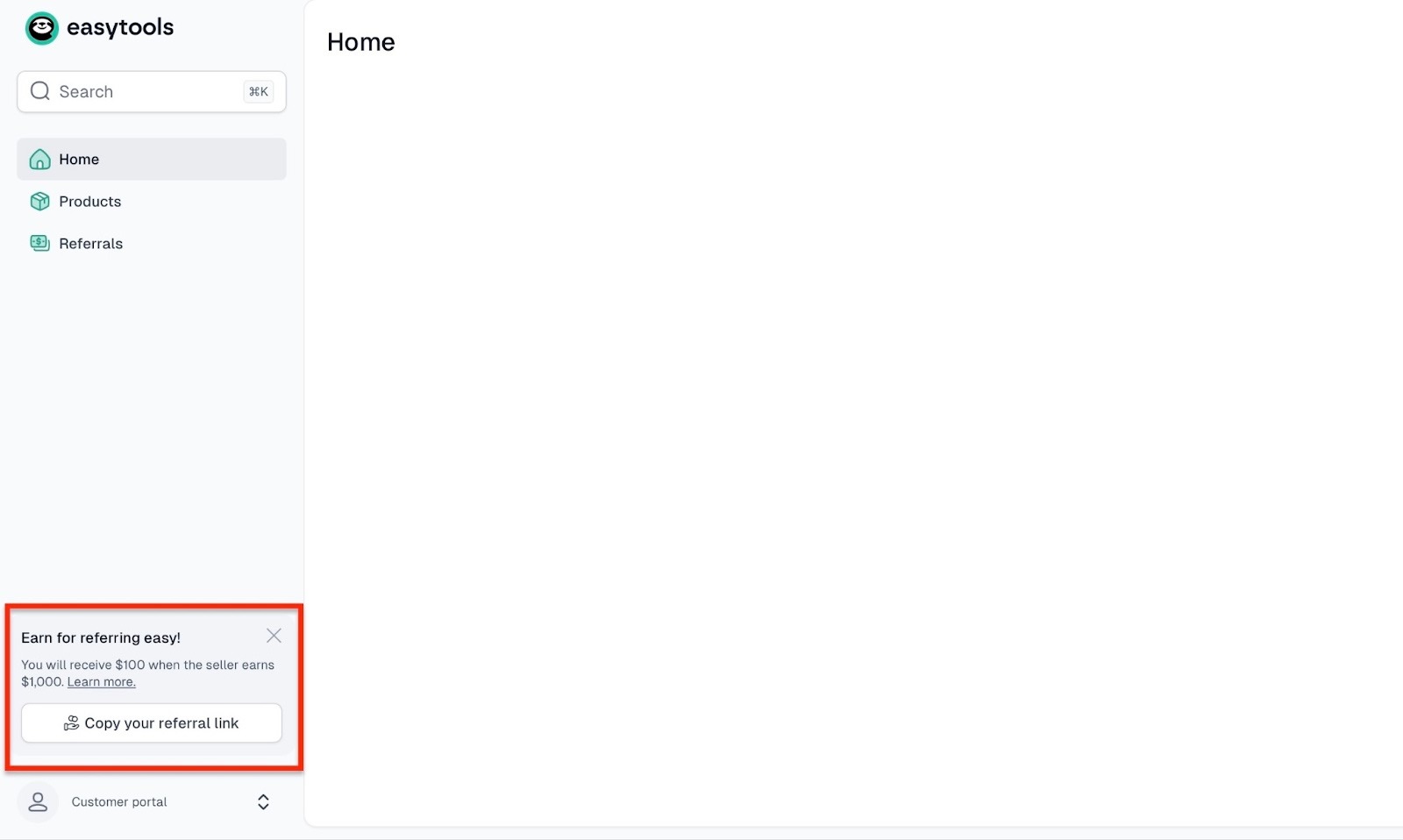
You can view all your affiliate links for products and services with the referrals feature on Easytools’ customer portal.

You could also enroll in the program and make 20% of the fees that we earn from the creator for three years.
How much can you make per month?
Starting out as a beginner, you can make between $0 to $100 per month. That’s because you're still learning how to drive traffic and convert sales.
After 6 to 18 months, once you have built some authority, you can earn from $300 to $3,000 per month.
In 2 to 3 years, you could earn $5,000 to $20,000 per month. Top affiliates actually make between $50,000 and $100,000+ a month.
In fact, in 2024, a survey by Authority Hacker found that the average affiliate marketer earns $8,038 per month.

Another thing that influences earnings is the niche you’re in. Some niches like e-learning, software, finance, travel, skincare, beauty, and hosting pay higher commissions.
Also, the amount of traffic your content generates can boost your earnings.
Say you promote a product or service that costs $100. You're bringing in 2,000 visitors per month and earning 10% commission from just 2% of those visitors.
So 2,000 x 2% = 40, then 40 x $100 = $4,000. Now $4000 x 10% (your commission).
That’s $400 per month in passive income.
[fs-toc-omit]What I loved vs. What I didn’t like
What I loved 👍
✅ You don’t need to create a product to start so the startup costs are really low
✅ You can work from anywhere and at your own pace
✅ Once your content is published, you can keep earning commissions every time people buy through your affiliate link
What I didn’t like 👎
❌ Income is not guaranteed because it depends on traffic, conversions, and commission rates
❌ Affiliate marketing can be very competitive. It can take months before you start making decent passive income
6. Print-on-Demand
Print-on-demand (POD) is a type of drop-shipping model where you create and sell custom products without keeping any inventory.
For example, you design a t-shirt with a logo, artwork, a pun, or a quote. You then list it on Shopify, Etsy, or Amazon Merch on Demand.
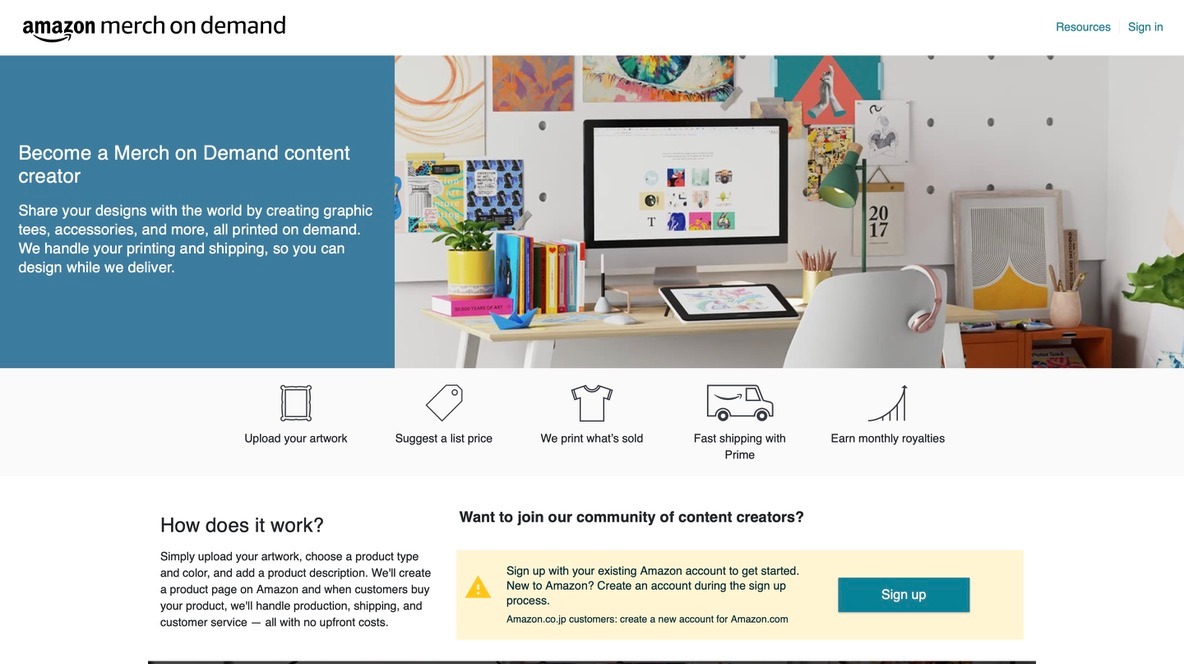
When a customer buys your product, the order is automatically sent to your POD supplier. The supplier handles printing and packaging and ships it directly to the customer.
You pay the supplier’s asking price and keep the rest as profit.
Let's say the supplier may charge $20 for both the T-shirt and the printing. So you make a profit of $30. Now, imagine you get 1,000 orders. That’s $30,000 in profit.
When it comes to POD, you don’t need to pay for inventory costs, packaging, or shipping.
Maybe you’d have to pay to sell and market your products. But apart from that, there's very little heavy lifting.
That’s why POD is one of the passive income ideas on my list.
How do you start?
You can start by choosing a niche. You could make funny t-shirts for dog lovers or motivational mugs for entrepreneurs.
Picking a niche makes it easier to stand out. Plus, you would also have a clear idea of how to find your target audience.
The next thing to do would be to pick the product you want to sell. It has to be a product you can feature your designs on.
These products can be mugs, t-shirts, jeans, hoodies, phone cases, stickers, posters, and more.
After this, move on to the design bit. You can use AI tools like Kittl, Ideogram, or Leonardo AI to generate ideas.
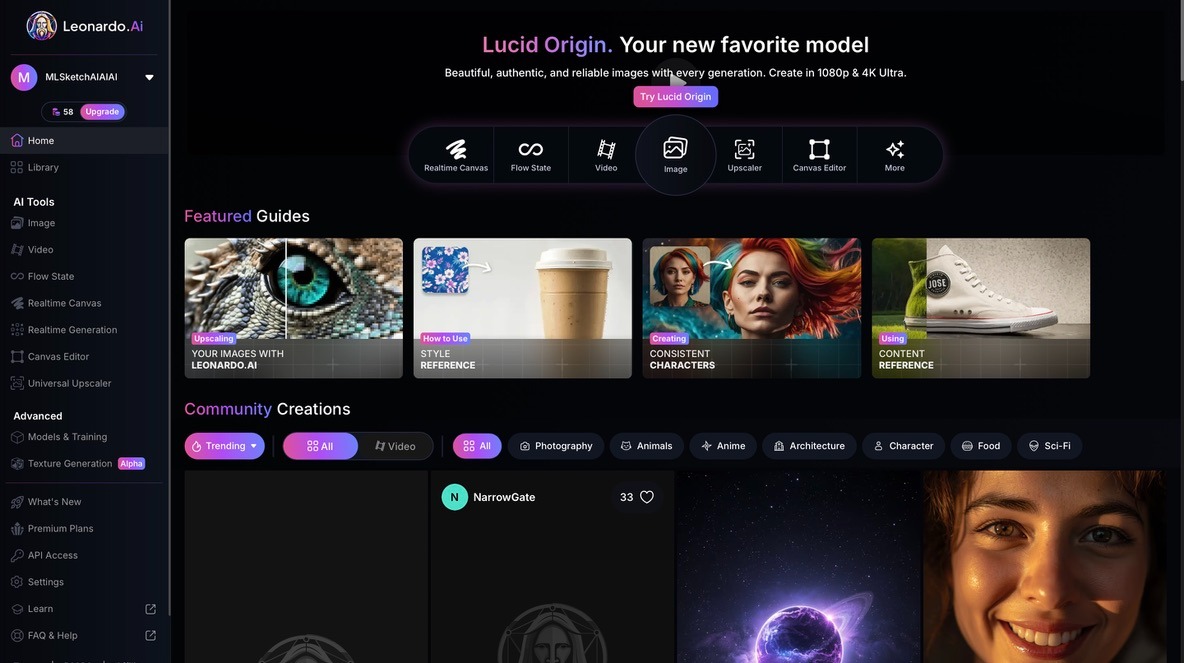
You could do the design by yourself with Canva or Adobe Illustrator. If you have the initial capital to pay for their services, you could also hire someone on Fiverr.
The next thing is to pick a platform that can print and ship your items automatically when a customer puts in an order.
A few of them are Printful, Redbubble, Gelato, and Printify..
The last step is to set up an online store to sell and market your POD products.
How much can you make per month?
You can make as low as $100/month when you're starting out. If you keep going, you could start bringing in $1,000 to $3,000 monthly.
TrueProfit found that top stores can make $20,000 to $80,000 per month.

The trick, as always, is to niche down and provide high-quality designs. Platforms and transaction fees can also eat into your profits.
So consider using platforms that don’t charge so much for transaction fees.
[fs-toc-omit]What I loved vs. What I didn’t like
What I loved 👍
✅ You can work from anywhere and test many niches or products
✅ You don’t pay for inventory, shipping, or packaging, so costs of doing business are low
What I didn’t like 👎
❌ Your suppliers already have an asking price, so profit margins can be low unless you have a lot of orders
❌ POD success depends on promotion and traffic, so you may have to pay for ads or marketing campaigns
7. Launch an online course
An online course is a structured video lesson you create and share online. You can then allow people to access it for free or at a fee.
Most creators who sell online courses add slides, PDFs, quizzes, and assignments.
Online courses can be self-paced, cohort-based, live, or pre-recorded.
When self-paced, you can start and finish anytime. I have seen this type of course in Semrush Academy.
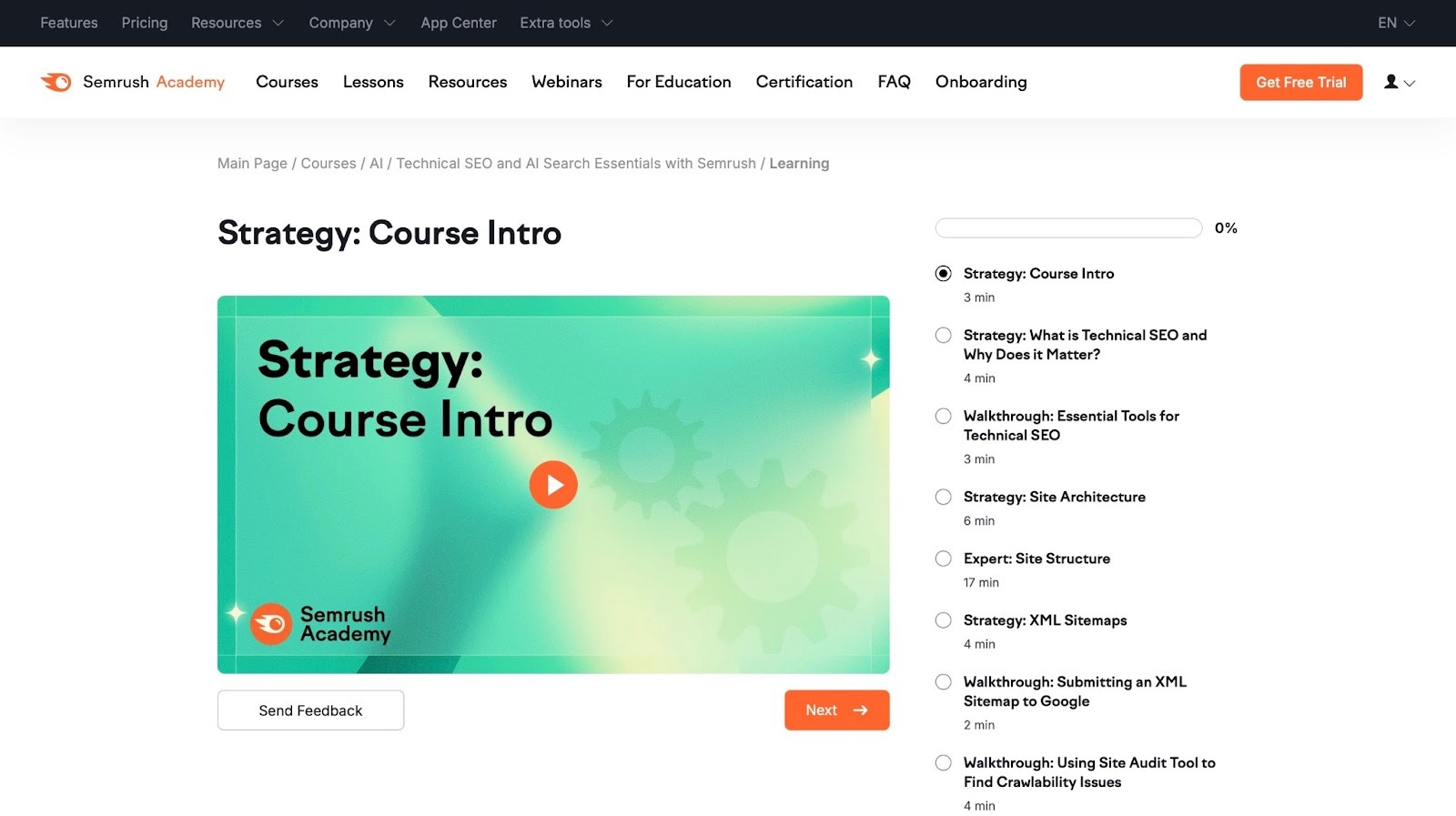
With cohort-based online courses, learners start together and follow a fixed schedule. So I’d say this is like the opposite of self-paced online courses.
Platforms like FutureLearn come to mind when I think about cohort-based online courses.
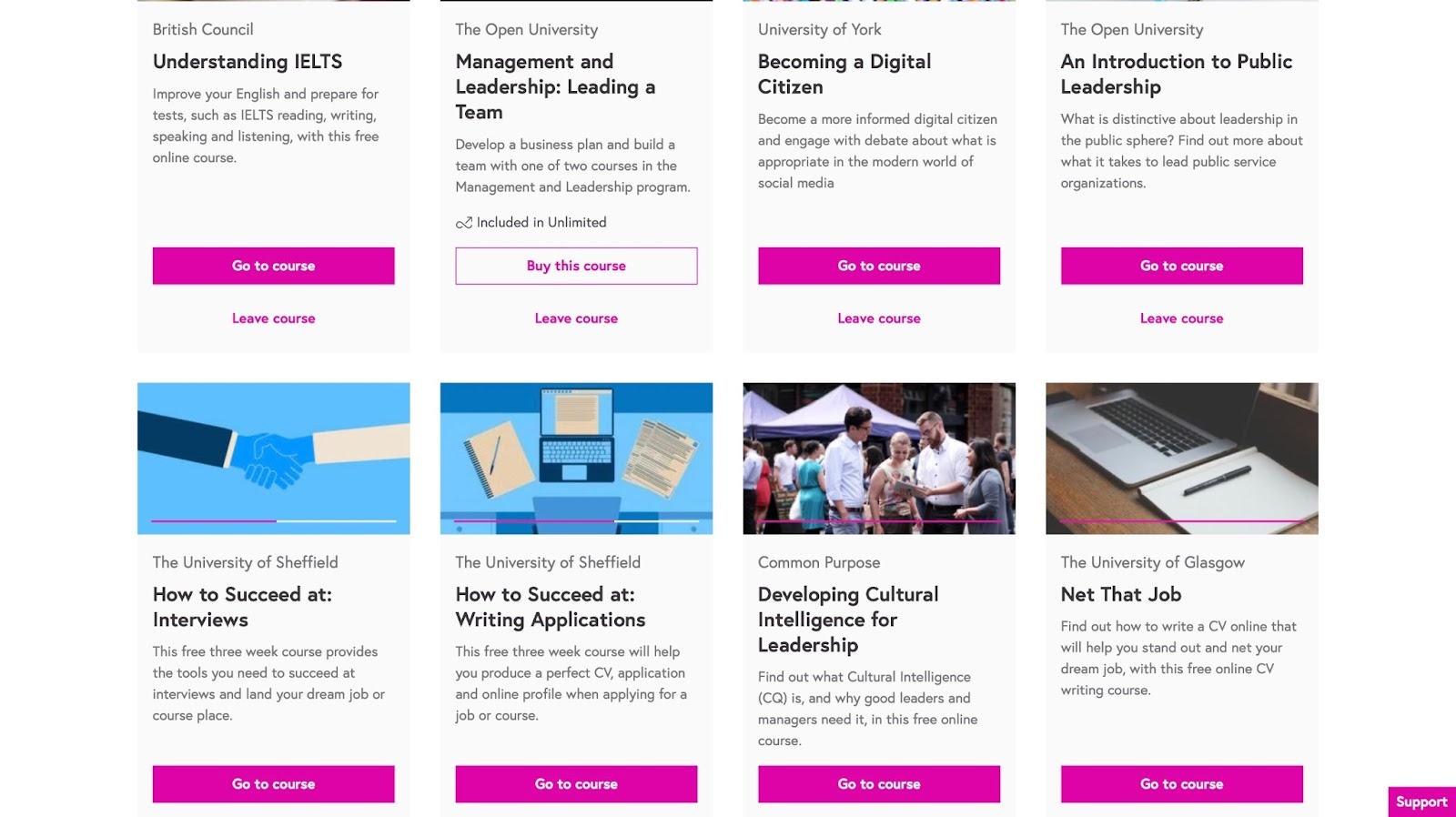
Pre-recorded courses are already recorded, so learners don’t get real-time interaction with the creator or instructor.
The good news is that they can either be self-paced or cohort-based.
On the other hand, live online courses are offered through live video sessions. So, there’s a lot of interaction with the instructor.
You have the luxury of launching the type that fits your schedule and teaching style. But to earn passively, you should go with prerecorded online courses.
As an entrepreneur, online courses are a great way to build a personal brand, share expertise, and earn passive income.
How do you start?
You can start with just your smartphone and good working knowledge of a skill or subject.
Then get Loom or OBS Studio for screen recording. There may be lessons where you’d want to show your screen.
You will also need Canva Video, Descript, and more for video editing. That’s if you intend to do it yourself. Which is absolutely possible.
Finally, you need a good mic for clear audio.
You also have to decide when you’d host your courses so students may sign up.
We created Easytools to handle course hosting for you. It can even suggest topics that you can use to build your course.
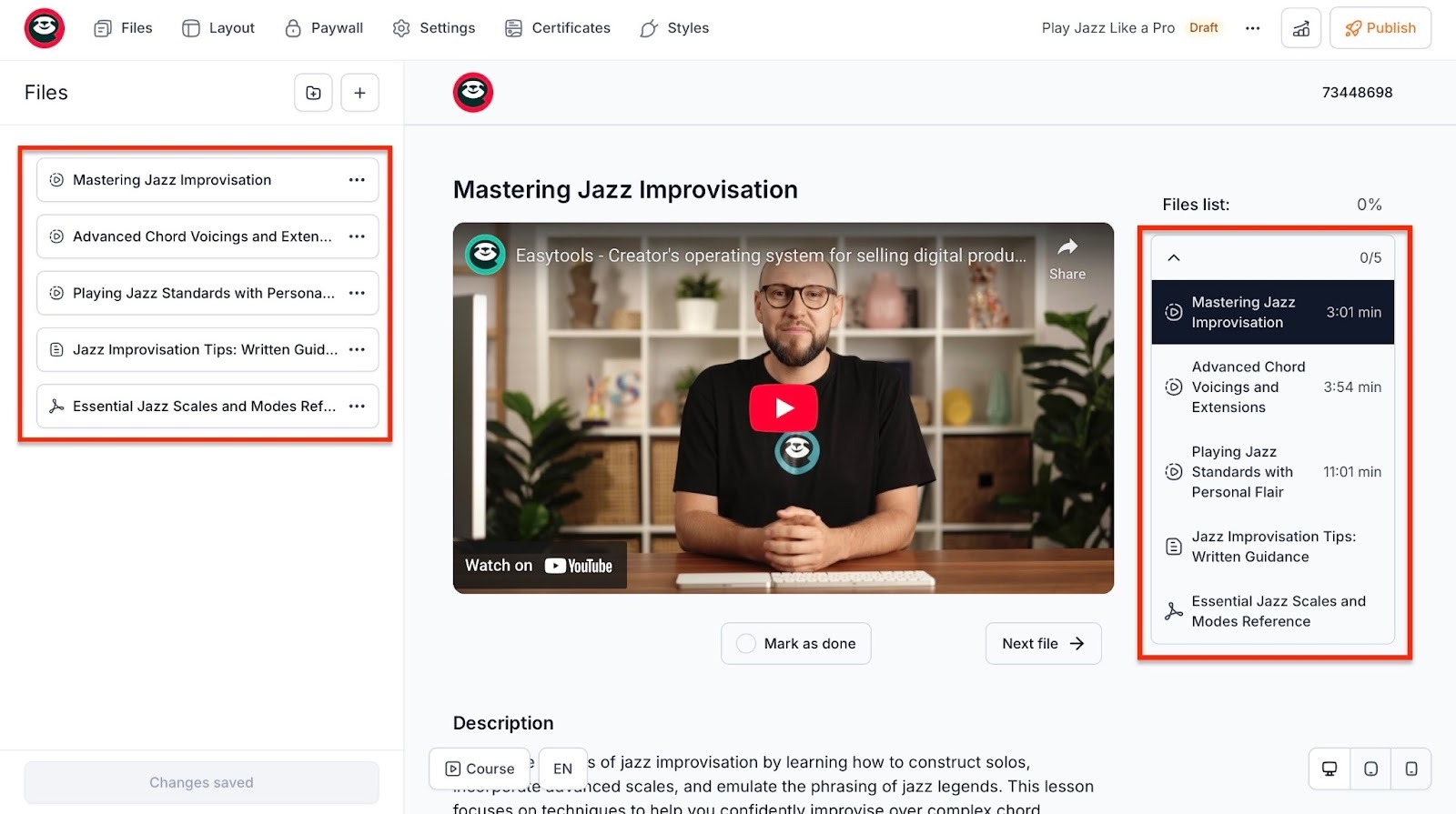
You can also set the course up in a way that students are issued certificates upon completion.
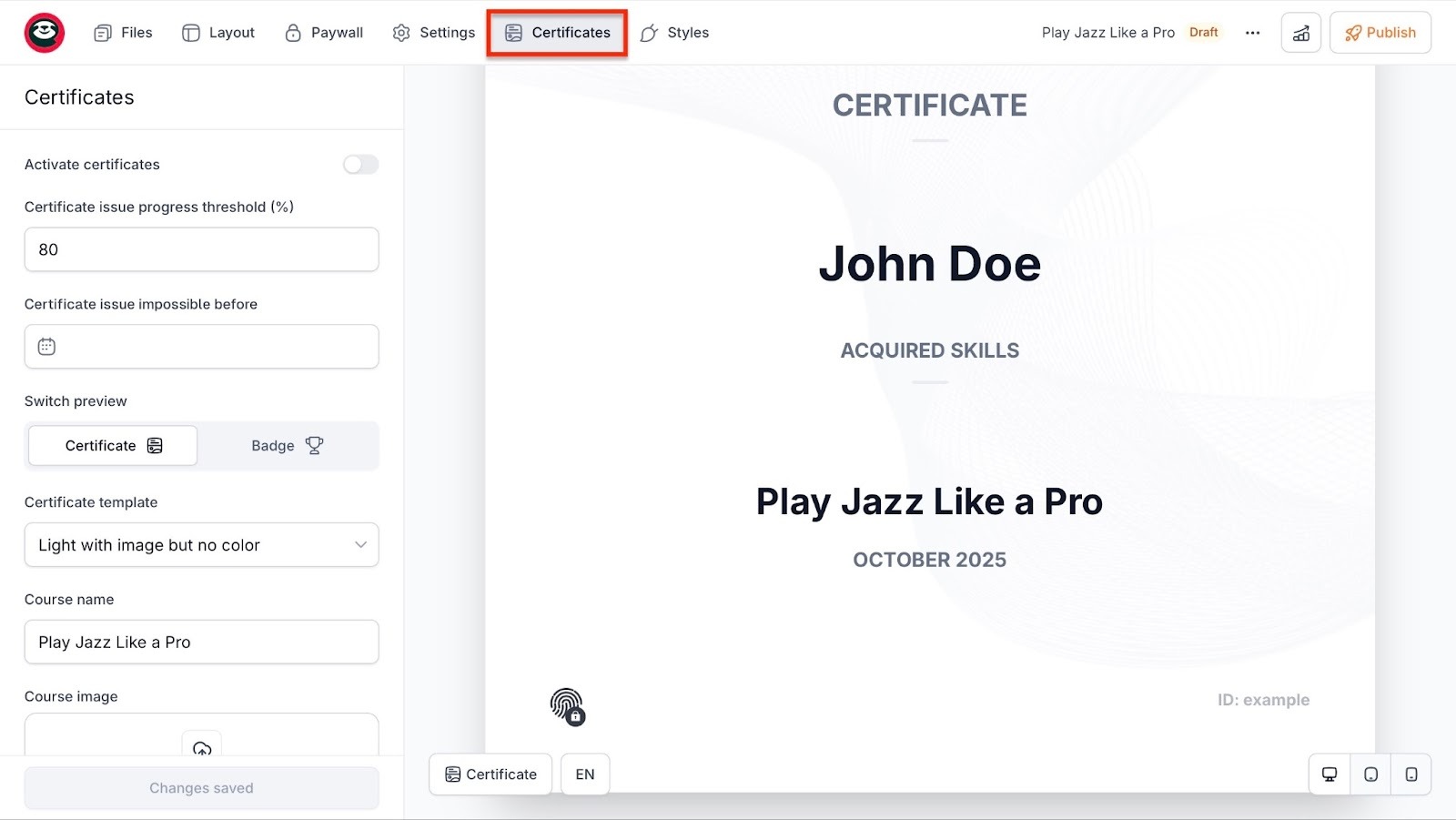
How much can you make per month?
You can make $200 to $1,000 per month as a beginner.
As you get more steady traffic, that could easily go up to $1,000 to $5,000 per month. Established creators can earn $10,000+ per month.
Again, your earnings depend on niche, audience size, pricing, platform, transaction fees, and marketing.
Our customers, Aga and Paulina, made $240,000+ in total revenue hosting the first-ever edition of the first-ever edition of their cohort-based online course on Easytools.

[fs-toc-omit]What I loved vs. What I didn’t like
What I loved 👍
✅ Online courses are one of the best ways for you to build your brand and show expertise
✅ You can reach a global audience easily because it’s online, and that increases your earning ability
✅ An earning potential of $1,000 to $200,000+ is high compared to other passive income ideas
What I didn’t like 👎
❌ Marketing your online courses can cost between $500 to $2,000+, which can be very expensive when you're starting out
❌ High platform and transaction fees can eat into your income
8. Sell subscription-based services
Subscription-based services are digital products that customers pay for on a recurring basis. So yes, a membership community you host probably offers this.
Other examples are your Netflix, Spotify, and Apple Music subscriptions.
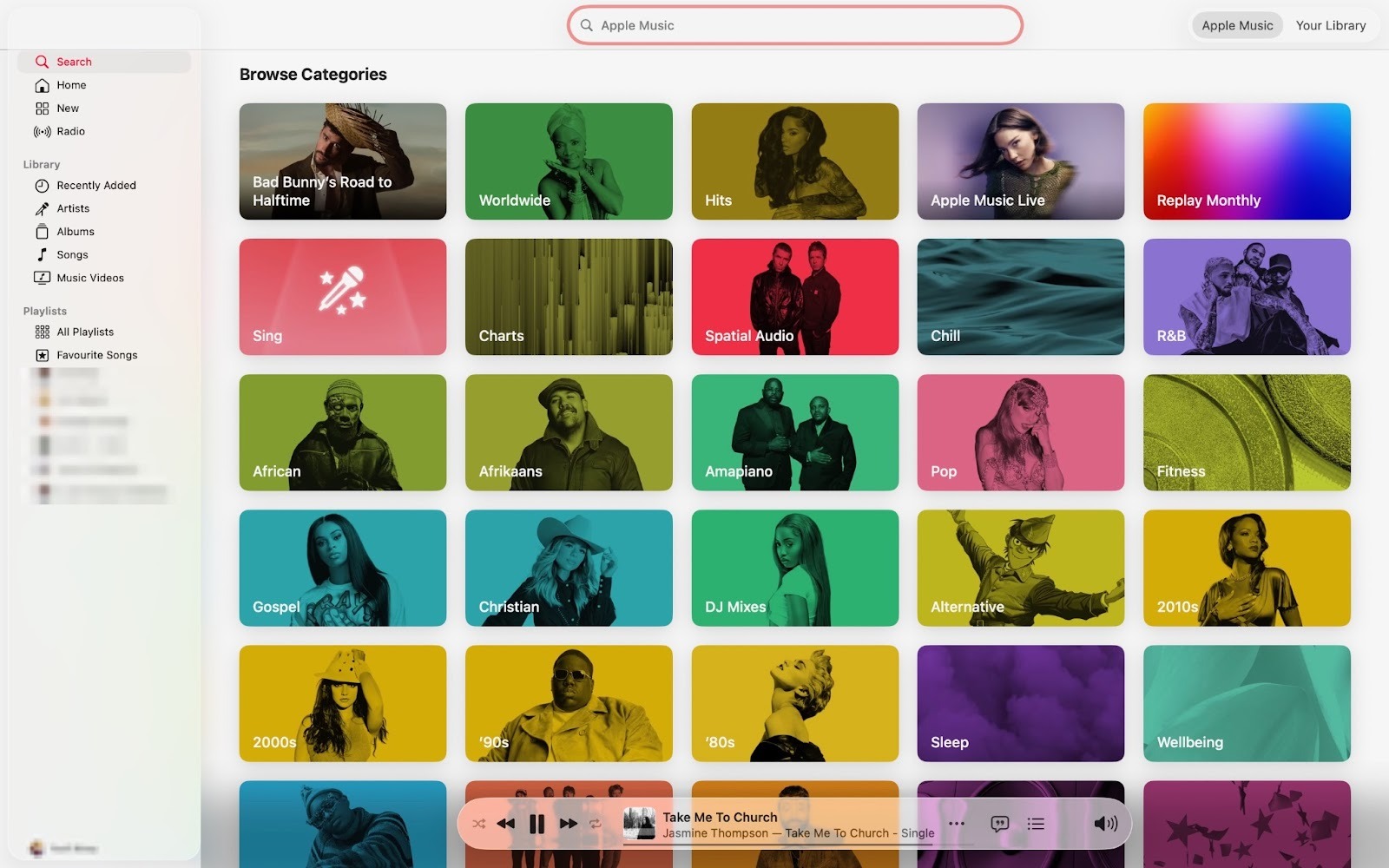
Think about Adobe Creative Cloud, Notion, and HubSpot subscriptions, too.
If big companies are in on the action, it shows how much of a good passive income idea subscription-based services are.
Apart from that reason, passive income from subscription-based services is predictable. After all, you know your customers are loyal to your brand.
As long as you keep delivering value, they aren’t going anywhere.
How do you start?
Start selling subscription-based services by first deciding on what value you’ll provide.
For example, Apple Music and Netflix provide entertainment. Notion and HubSpot provide cloud-based tools.
So you have to give something people wouldn't mind paying for now and then.
You don’t have to reinvent the wheel. You can just do something simple very well. It could be video sessions where you teach people simple DIY car repairs.
Next, make sure you have different price types, so customers can choose the one that works for them.
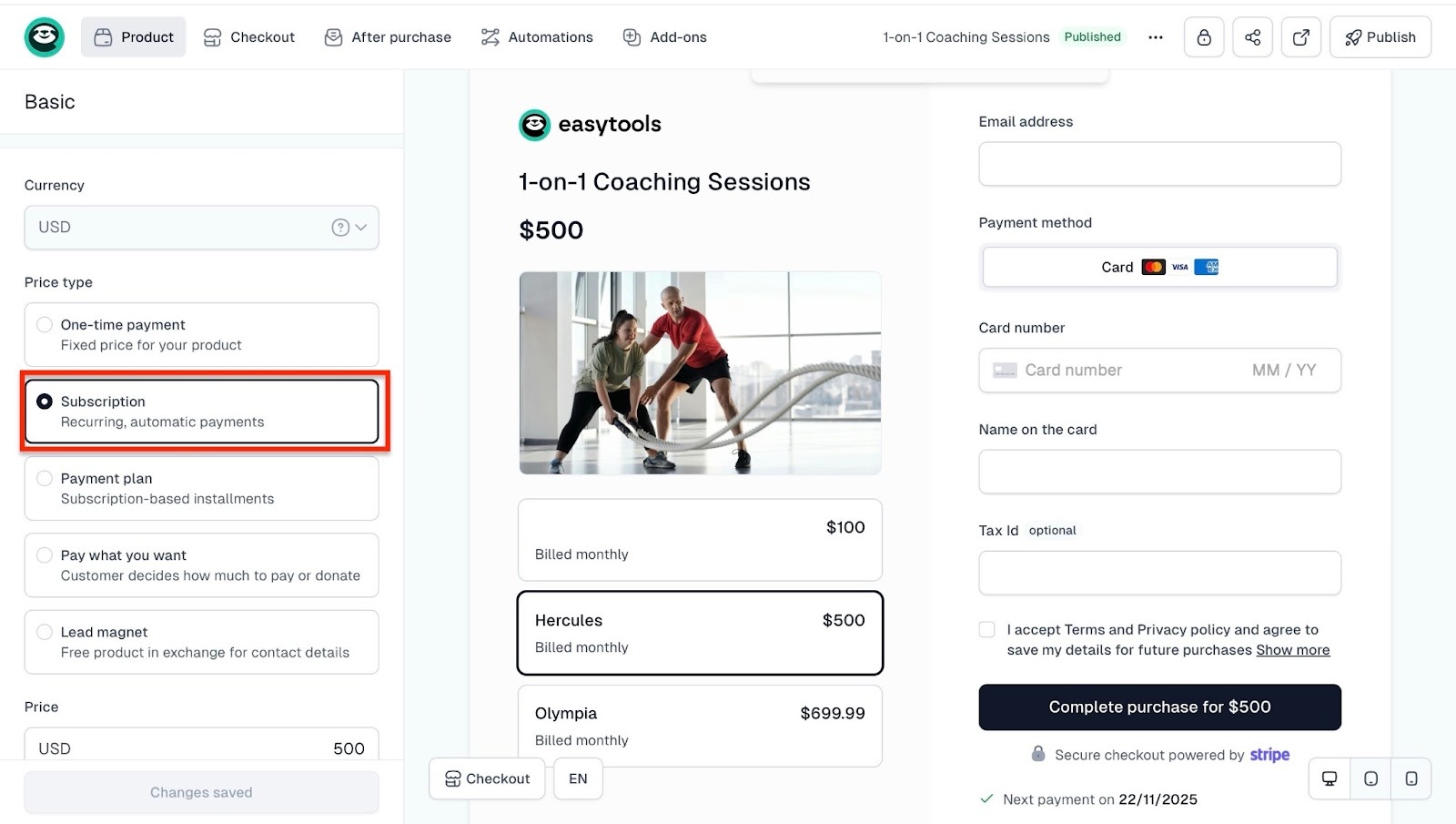
Customer retention is so important when it comes to subscription-based services. So you may have to:
- Continuously update and improve your product and services
- Offer exclusive content, features, or tools to only paying members
- Send newsletters and reports to give your customers more value
- Create polls, discussions, and forms to get members’ feedback
- Occasionally, send personalized “thank you” messages to customers
- Reward loyalty with discounts or referral bonuses
- Use analytics to track when and why people cancel their subscriptions
The list can be huge, but these should get you started.
How much can you make per month?
As an entrepreneur, you can make between $200 and $1,000 per month in your first six to 12 months selling subscription-based services. That’s assuming you start with very few subscribers.
If you keep going at it, that could become $1,000 to $5,000 per month. In 12 to 24 months, it’s possible to increase your subscribers by 200 to 500.
Well-established subscription-based services with good customer retention make about $10,000+ per month.
[fs-toc-omit]What I loved vs. What I didn’t like
What I loved 👍
✅ Your passive income is predictable especially if you continuously provide value
✅ You can start selling other services and products as your customers become loyal to your brand
✅ If you provide value, you can add more subscribers without extra work
What I didn’t like 👎
❌ It can take months to attract enough subscribers
❌ Some subscribers may cancel which will reduce your income
9. Invest in dividend stocks or ETFs
Stocks are units of ownership in a company. In other words, when you buy a stock, you’re essentially buying a piece of that company.
You are even invited to vote at the company’s meetings.
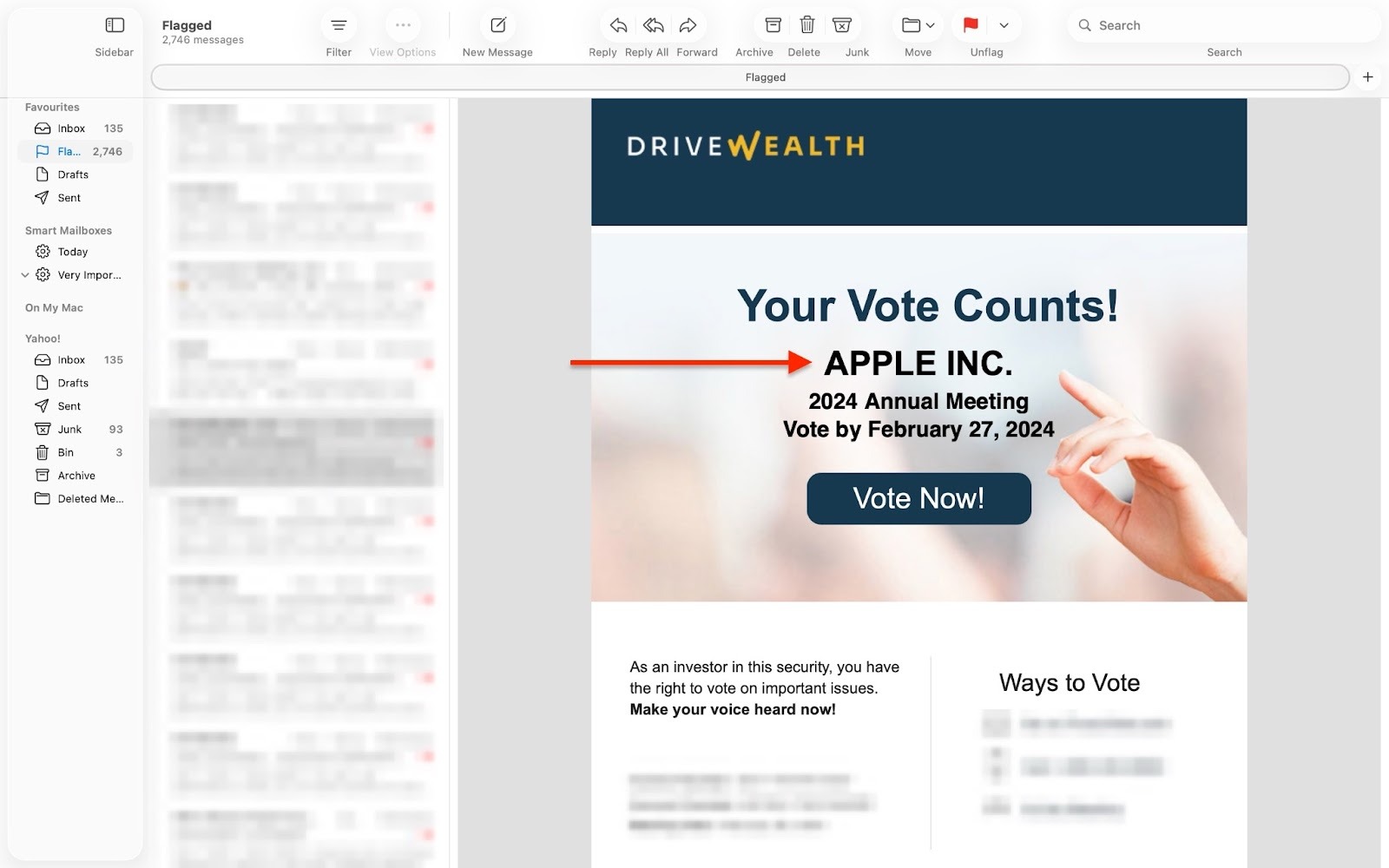
For example, Apple Inc. (AAPL) stocks currently sell at $263.70 (though this changes by the minute).
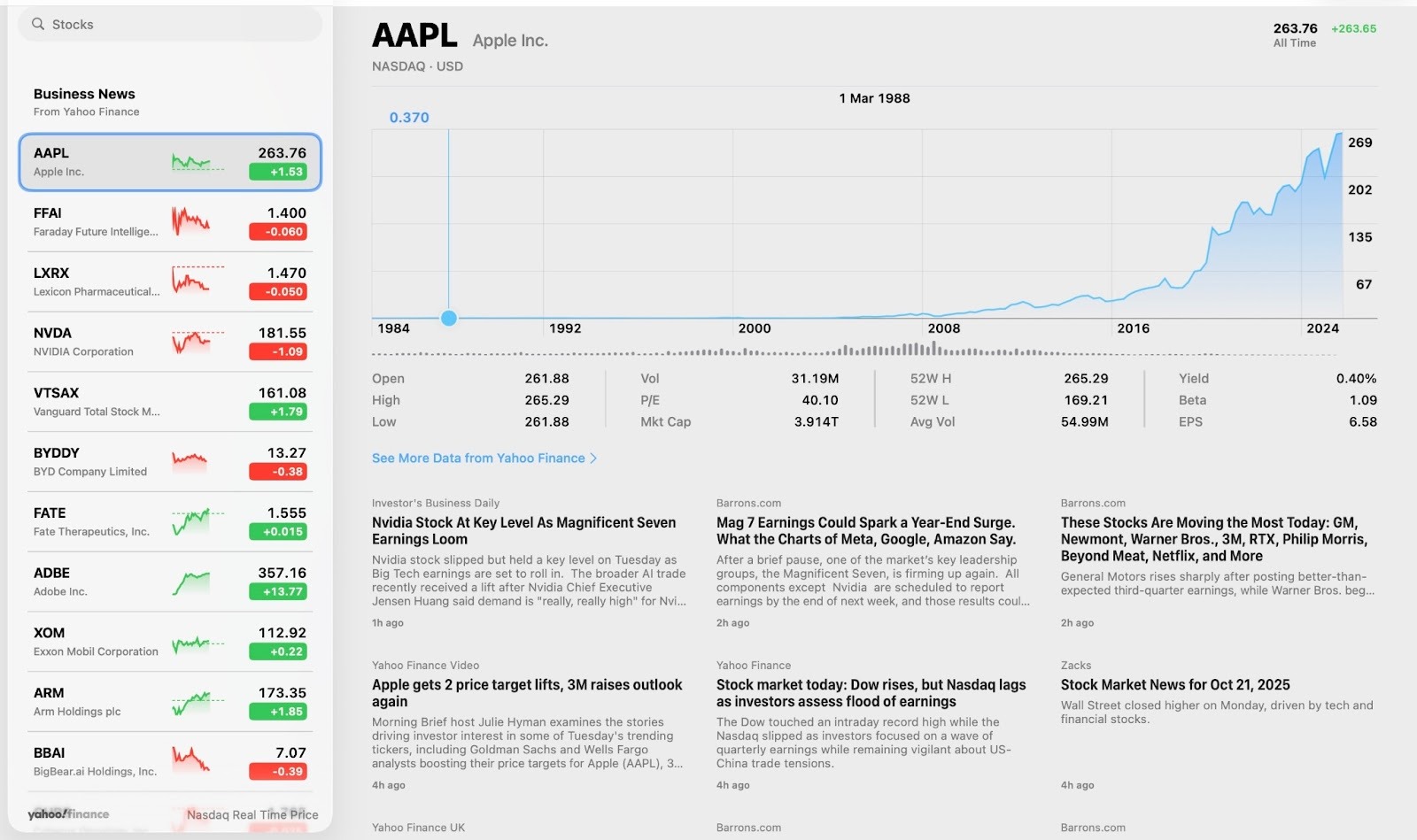
When you buy about $100,000 worth of Apple stock, you'll have about 379.2 units (100,000 ÷ 263.70). That represents your stake in Apple.
When Apple makes a profit, it will share it with its shareholders. Since you own Apple stock, that makes you a shareholder.
If Apple pays $0.25 per share in dividends, that payment is your share of the company's profit (379.2 x $0.25 = $94.80).
If you bought the stocks at $263.42 and later sold them at $270, then you’ve made capital gains. That’s a profit from the stock’s price increase.
To earn steady passive income from stocks, it’s best to invest in companies that pay regular dividends. Most certified financial instructors also advise investors to diversify. This means to buy dividend stocks from companies in different sectors.
ETFs are already diversified, low-cost, flexible, and great for beginning investors. Some of the popular ETFs are SPDR S&P 500 ETF (SPY), Vanguard S&P 500 ETF (VOO), and iShares Core S&P 500 ETF (IVV).
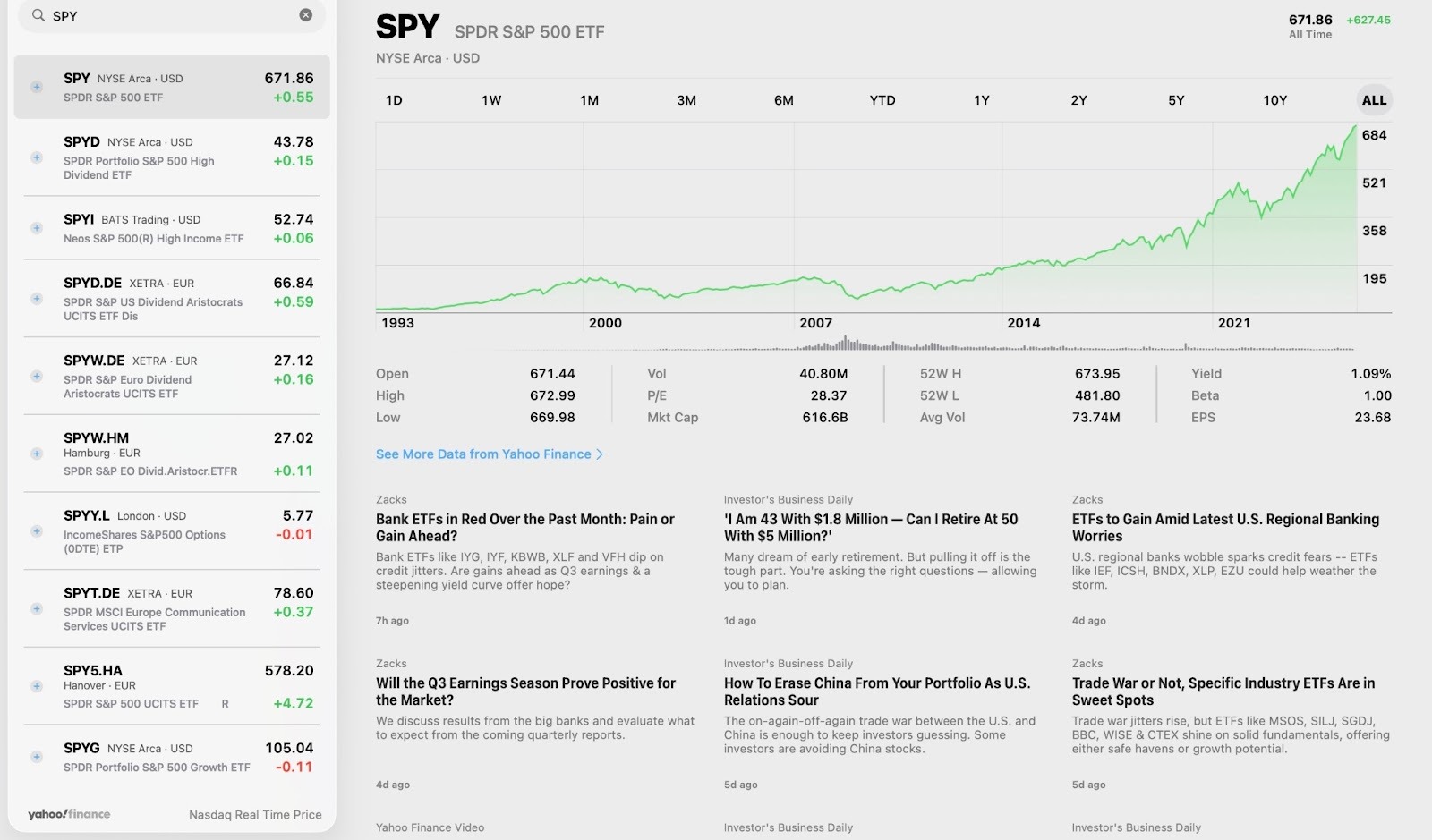
How do you start?
Start by learning the basics. A good starting point will be to take a course on investing. You can also read some books on investing.
You also need to learn about dividend stocks and companies that share profits with investors, like The Coca-Cola Company (KO), PepsiCo Inc. (PEP), and more.
How much can you make per month?
You can earn $42 from a modest investment of $5,000. An investment size of about $50,000 can earn you about $417 per month.
With about $200,000, you’re looking at $1,667 per month in passive income. Now you know why dividend stocks and ETFs are on my list of passive income ideas.
[fs-toc-omit]What I loved vs. What I didn’t like
What I loved 👍
✅ You can start earning quickly and growing your investment if the market is bullish
✅ It's possible to use your investment portfolio as collateral for a loan
What I didn’t like 👎
❌ It can be very unpredictable and risky
❌ It takes skill, patience and confidence to sit through a market downturn or a bear market
10. Rent out a room or apartment
You can rent out a room or apartment to start earning passive income. Let's assume you already have a spare room or apartment.
Every month, rent payments could cover mortgage, maintenance, and utilities. And there could be extra leftover cash as profit.
If you have an apartment and not just a room, you could bring in a decent amount of passive income.
I read this success story of Julio and Alison Sanchez on Starter Story.
After they inherited properties from Alison’s parents, they turned them into a rental business. They invested an initial amount of $30,000, and now they make $150,000 per year.

How do you start?
You must first decide whether you want to rent out a spare room or an apartment. If it's your first time, I’d recommend you start small to see how things work out.
The next thing is to clean up the room or apartment. You want it to look like a place you’ll pay top dollar to stay. You could then add basic furniture and some essentials like fresh towels and soap.
You can throw in some free Wi-Fi and some artwork to decorate your walls.
After that, choose a hosting platform. You can go for:
- Airbnb is best for short-term guests
- Vrbo is for vacation rentals
- Zillow for long-term tenants
Platforms like Airbnb will handle bookings, payments, and messaging.
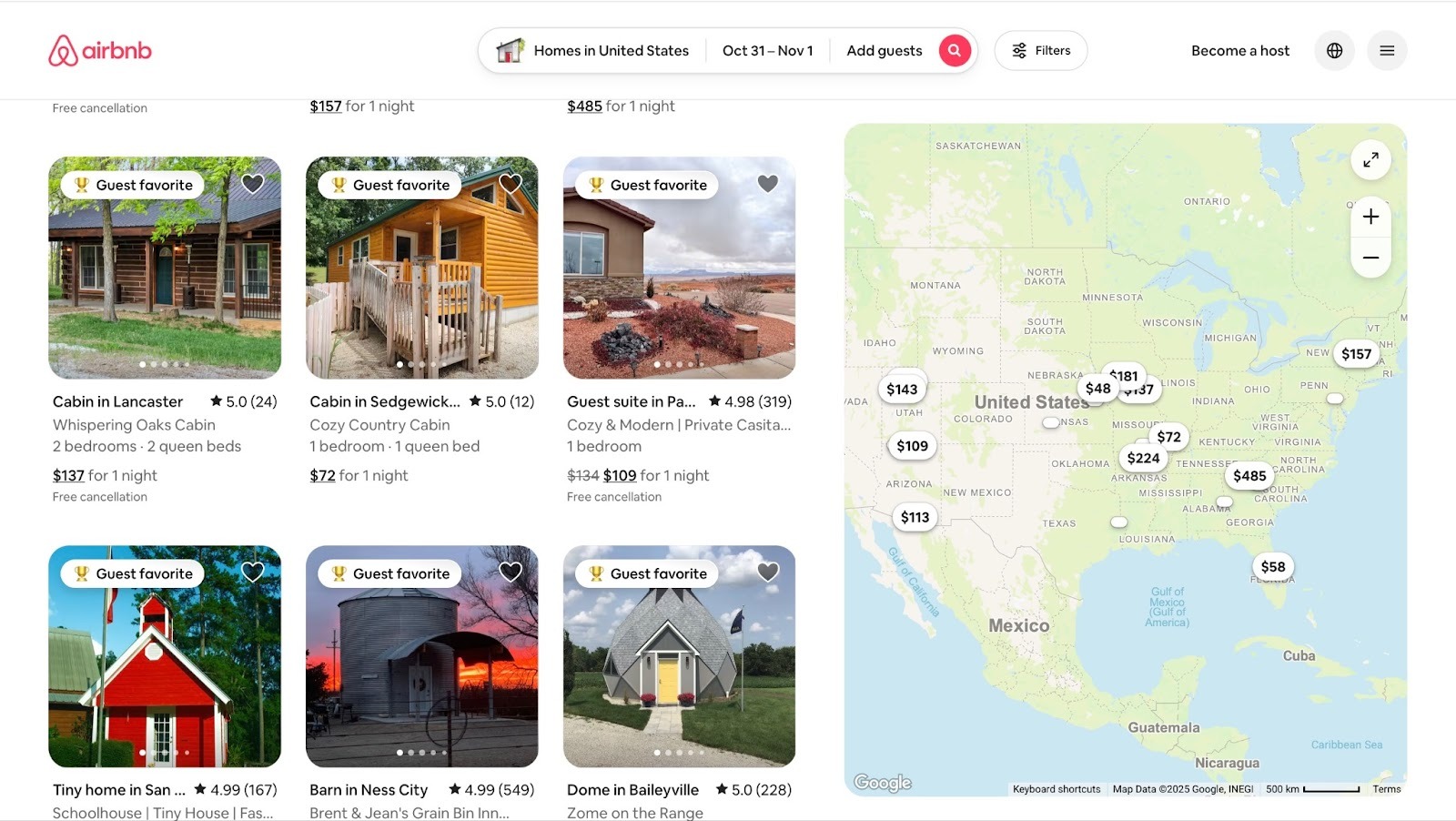
Once you’ve chosen the platform, you can create a listing. Now, go ahead and set your nightly and monthly prices by comparing the listings in your area.
You can also install smart locks to let guests self-check in. You can hire a cleaning company to keep the place tidy.
If it’s an apartment, you'll probably be managing more than a room. So, you’ll need tools like Hostaway or Guesty to manage all your listings.
The moment you have all this ticked, you’ll be ready to receive the first tenant or guest.
How much can you make per month?
You can make about $300 to $1,500 per month for a single room if you have a long-term tenant. If it's a single room but for a short-term stay, that’s about $800 to $3,000 per month.
Your earnings can also go up if it’s an entire apartment. For example, an apartment listed on Airbnb for short-term can make you $1,500 to $7,000+ per month.
While you can make $800 to $3,000 per month for a long-term lease (for an apartment).
[fs-toc-omit]What I loved vs. What I didn’t like
What I loved 👍
✅ You can earn consistent monthly income, especially in areas with high rental demand
✅ You can employ others to manage your tenants and your properties, which will make it more passive
What I didn’t like 👎
❌ Initial investment can be as high as $10,000 to $100,000+
❌ It’s possible to face issues like late payments and property damage, which can affect your income flow
11. Peer-to-peer lending
Very few people consider peer-to-peer lending (P2P lending) as an effective source of passive income. But this may be because they don’t really understand it.
What happens is, you lend your money directly to individuals or small businesses who pay you higher interest, usually between 7% and 12%, through an online platform.
It’s better than putting money in a traditional savings account, which might only earn about 2 to 3% interest per year.
For example, Bernhard Hummel, an investor in Austria, invested over €150,000 across several P2P lending platforms.
And he reported earning about €1,500/month in passive income from his portfolio at one point.
€150K P2P Lending Portfolio - 1.500€ Monthly Passive Income | Bernhard Hummel
How do you start?
First, you need to find a platform you can trust. In the U.S., leading names include Prosper, and Upstart.
To give you an idea of what that means, if you had invested $1,000 in Prosper at the beginning of 2025 and achieved the average return of 7%, you’d have about $1,070 by the end of the year.
Be sure to diversify your loan portfolio. That means, spread your money across many loans instead of lending it all to one borrower.
Most of these platforms allow you to reinvest your profits automatically, which is a great way to build on your returns.
It’s a good idea to create a simple earnings dashboard to track:
- How much you’ve lent out
- Monthly interest earned
- Reinvested amount
- Estimated yearly growth
How much can you make per month?
Your monthly earnings from P2P lending depend on two things: how much you invest and the average interest rate offered by your platform.
Most P2P investors earn between 7% and 10% per year.
To put that into perspective:
- $500 invested → earns around $4–$5/month
- $1,000 invested → earns around $8–$12/month
- $5,000 invested → earns around $40–$60/month
It might not sound like a fortune at first, but when you reinvest your earnings, the interest grows.
Each month’s profit adds to your total investment.
As shown here by Lendermarket, if you want to grow a fortune with P2P lending, you need to be patient.

Over time, compounding can turn small, consistent investments into a steady passive income stream.
[fs-toc-omit]What I loved vs What I didn’t like
What I loved 👍
✅ Once you set it up, the platform handles everything
✅ You get to diversify beyond traditional savings or stocks
✅ You can start small and scale with time
What I didn’t like 👎
❌ There’s always a small risk of borrowers defaulting
❌ Some P2P platforms only work in certain countries and that may delay your withdrawals
12. Offering paid webinars and recorded sessions
If you enjoy teaching or sharing ideas, paid webinars are one of the easiest passive income ideas you can start.
A webinar is a live online class or presentation you host for an audience.
The “paid” part means participants buy a ticket to attend or access your recording later.
The model is simple:
- You teach a topic your audience cares about
- You record the session
- You sell the replay for months or years after the live event
So you earn during the event and after.
Jon Schumacher, for example, ran a webinar and generated a total $98,290 in sales.

How do you start?
First, focus on a topic people already want to learn.
- If you’re into business, it could be “How to Get Your First 5 Freelance Clients.”
- If you’re into tech, try “How to Use AI Tools to Automate Your Work.”
- If you’re into creative work, “Design Your First Digital Product in One Hour.”
Then break your session into key sections:
- Introduction (maybe 10 or 15 minutes)
- Main Lesson ( about 45 minutes to an hour)
- Q&A section (for about 15 minutes)
Your video will have more structure and be interactive.
Next, choose your platform.
You can use tools like Zoom, Riverside, or StreamYard to host your live webinar. Most of these tools have free trials.

If you are just starting and can’t afford many tools, you can record the video using a webcam or your phone.
Good lighting and clear audio matter more than expensive gear at this point.
After you’ve sorted that out, the next thing would be to find a platform to sell your paid webinar.
Let’s say you create a webinar to teach tech entrepreneurs how to build and sell AI tools. Your webinar may offer real value, but selling it successfully means using the right platform.
A platform that helps you attract the right audience, deliver your content smoothly, and turn viewers into paying customers.
Finally, promote your webinar across your social media pages, email list, and online communities.
How much can you make per month?
The amount you can make from webinars ranges from $500 to $10,000+ per month.
However, your income depends on three main factors: your topic, ticket price, and audience size.
According to a 2025 webinar report, the average paid webinar conversion rate (people who buy a ticket after seeing your promo) is 5–20%, while the average webinar attendee count rose to 216 in 2024.

Let’s say you have 1,000 followers on social media or your email list.
If just 10% of them (100 people) buy a $25 ticket, that’s $2,500 from one live webinar.
Then, if 40 more people buy the $15 replay, that’s another $600. That’s a total of $3,100 from a single session.
Now imagine running two webinars per month, that’s roughly $6,000/month, or $72,000 per year in potential income.
And it gets better: If you have built a library of past webinars (available via Easyplayer) you can keep earning from replays for months.
Your replay link keeps selling on autopilot through your Easytools store.
[fs-toc-omit]What I loved vs What I didn’t like
What I loved 👍
✅ You can begin with just your laptop
✅ You can reuse your content as an evergreen product
✅ It’s great for audience building and lead generation
What I didn’t like 👎
❌ You need to actively promote paid webinars to fill seats
❌ Time zones can make global scheduling tricky
13. Sharing creative work for royalties
Another passive income idea is to share your work for royalties.
Royalties are payments you earn when people use, stream, or buy your creative work.
For example, if you upload a song to Spotify or Apple Music, you earn a few cents every time it’s streamed.
If you license your stock photos, videos, or digital art, you keep getting paid as long as someone downloads them for commercial use.
The family of George Harrison, lead guitarist in the Beatles, for instance, is still receiving millions of dollars in royalties from music George created while he was alive.

And he’s not the only one, countless more artists and creators haven’t created anything new in years but are living comfortably on royalty earnings.
While you may not have that kind of popularity and reach, it is still possible to earn royalties from what you create.
How do you start?
You don’t need a big budget; just be creative and consistent.
Start by deciding the type of content you’ll share. It could be music, photos, digital art, short stories, or even YouTube videos.
Based on that, you can choose a platform. Musicians can use DistroKid, TuneCore, Spotify, Apple Music or SoundCloud.

Photographers can use Shutterstock, Adobe Stock, or Getty. Writers can publish on Amazon Kindle or earn through the Medium Partner Program.
Now follow each platform’s submission guidelines, upload, and publish your work. You’ll also need to use social media to share your work for a wider reach.
The more popular your work becomes, the more you earn off royalty payments. Most platforms will pay you monthly or quarterly based on streams, sales, or downloads.
How much can you make per month?
Your monthly royalty income depends on what kind of content you create, how often people use it, and the platform you’re using.
For stock photographers, the earnings can start small but grow when you post more high quality photos.
According to Xpiks, many contributors earn around $0.02 per image per month, which means a small portfolio of 100 photos might make about $2 monthly.
However, standout images can earn much more. In one example, a single best-selling photo generated $87.70 per month on its own.

Some streaming platforms (like Apple Music and Spotify) pay between $0.001 and $0.003 per stream. That means for 100,000 streams, you could earn $100 or $300.

Writers and self-publishers also enjoy returns from royalties. Platforms like Amazon Kindle Direct Publishing (KDP) offer 35–70% royalties per sale, so a $10 e-book can earn you up to $7 each time it sells.

Video creators on platforms like YouTube, TikTok, Instagram, Facebook, and Twitch can also earn royalty-style revenue.
According to Social Blade, a YouTube video with a daily average of about 2000 views can earn you about $4.
This means a video with 100,000 views could earn $100–$500 a month, depending on the niche, country, and levels of engagement.

[fs-toc-omit]What I loved vs What I didn’t like
What I loved 👍
✅ You earn while doing what you love: music, writing, or design
✅ You create once and earn multiple times
✅ You can earn from many different sources at once
What I didn’t like 👎
❌ You need to promote your work actively to get traction
❌ It can take months before your creative work starts generating royalties
14. Sell handmade goods
Fast fashion brands like SHEIN and Zara release new designs almost every week. It’s quick, affordable, and everywhere.
But they’re mass-produced, and many shoppers are tired of the same designs. They want something that feels personal.
That’s where handmade products come in. They’re unique, and often made with care.
Whether it’s handcrafted jewelry, candles, crochet bags and clothes, natural skincare, or painted home décor, handmade goods have found a loyal audience online. And they can be an awesome source of passive income for you.
How do you start?
Start by choosing your product, something creative and easy to ship. Handmade jewelry, candles, art prints, soaps, or tote bags.
Pick something you actually enjoy making, because passion shows in your craft.
Next, gather your tools and materials. You can find affordable supplies at local markets or order them online in bulk to cut costs.
Once you have everything, create a few samples.
You can use your phone, natural light, and simple backgrounds to make your products pop. The better your pictures, the easier it is to sell.
When it’s time to sell, you can set up your product for sales with Easytools.
You can set your price, list variants and even add other items you have available.
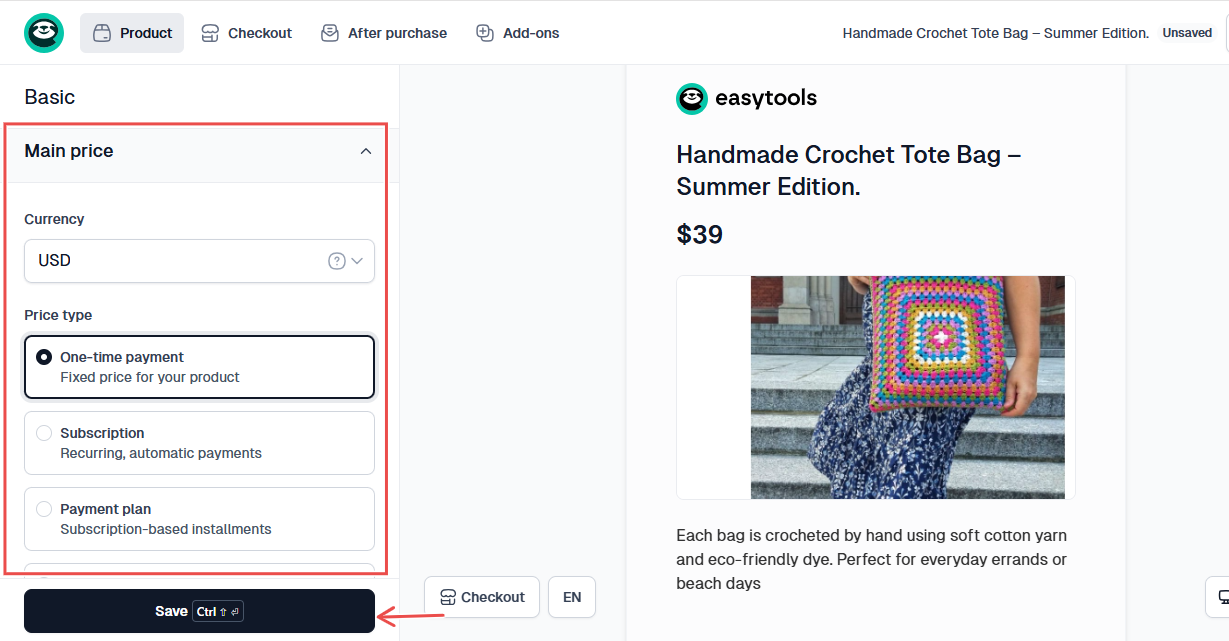
You have a storefront that displays your product and a shareable link. You’re officially in business.
How much can you make per month?
In the Real Numbers Project, a survey of handmade businesses, it was reported that 21% of these businesses earn between $1,000 and $10,000 per month in gross sales.
This proves that it is possible for you to make a similar amount.

The first few months may be slow, but once people start recognizing your style, repeat buyers and referrals kick in. Then income becomes more passive.
And if you upload tutorials or sell digital versions of your crafts, like printable art or templates on Easytools, you can double your revenue without extra effort.
[fs-toc-omit]What I loved vs What I didn’t like
What I loved 👍
✅ You can start small, from your bedroom or garage
✅ You have creative freedom because you control the design, pricing, and brand story
What I didn’t like 👎
❌ Shipping costs can eat into your profits
❌ Physical work means it’s not 100% passive unless you scale production
15. Vending machines
If you’ve ever grabbed a snack or a drink from a vending machine, you’ve already participated in one of the most underrated and overlooked passive income ideas in the world.
Vending machines are basically little businesses that work 24/7 with no employees, no rent except for a small location fee, and no fancy marketing.
Just place them in the right spot, stock them with what people want, and let them earn money for you.
In this interview, Jason details how he built a $5000/month vending machine business, starting with only 2 refurbished vending machines. Now he has vending machines in over 35 locations.

How do you start?
The vending machine business is surprisingly straightforward.
First, decide if you want snack vending, beverage vending, healthy vending (nuts, protein bars, smoothies), or even digital vending like phone chargers or beauty items.
Then find your location. Schools, offices, dorms, hospitals, gyms, and malls are top choices. Your location is 80% of your success.
Now buy your first machine. You can get one new for about $3,000–$5,000 or refurbished for $1,000–$2,000.
Next, stock your products. You can buy in bulk from wholesalers like Costco or Sam’s Club to save money.
Set your prices and see how your sales go.
You’ll need to pay careful attention to what sells quickly and restock as soon as you run out.
You can use Airtable to automatically track your vending machine’s inventory levels and set reminders for when it’s time to restock, all from your phone.
How much can you make per month?
According to the BICOM report on vending machine profits, small operators running just a few machines can earn between €300 and €1,000 per month per machine in net profit.

But once you scale up and place your machines in high-traffic areas like universities, hospitals, or train stations, monthly earnings can rise to €2,000–€8,000 or more after costs.
[fs-toc-omit]What I loved vs What I didn’t like
What I loved 👍
✅ After you stock and set prices, a vending machine runs itself
✅ You can start with one and then expand to different locations
✅ You can restock and collect your money on your own schedule
What I didn’t like 👎
❌ Vending machines can cost anywhere from $1,500 to $10,000 each, and that’s costly
❌ It’s not entirely passive because you need to restock, collect earnings, and manage your inventory
16. Make and sell stock photos
This is one of the simplest ways to turn your passion into passive income.
Stock photos are images that individuals, brands, and companies buy for use in marketing, websites, ads, or blog posts.
Every time someone downloads or licenses your photo, you get paid.
Jarmo Piironen earned $10,309 from stock photography in 2022, averaging about $859 per month with around 2,000 images in his portfolio, built slowly over six years.
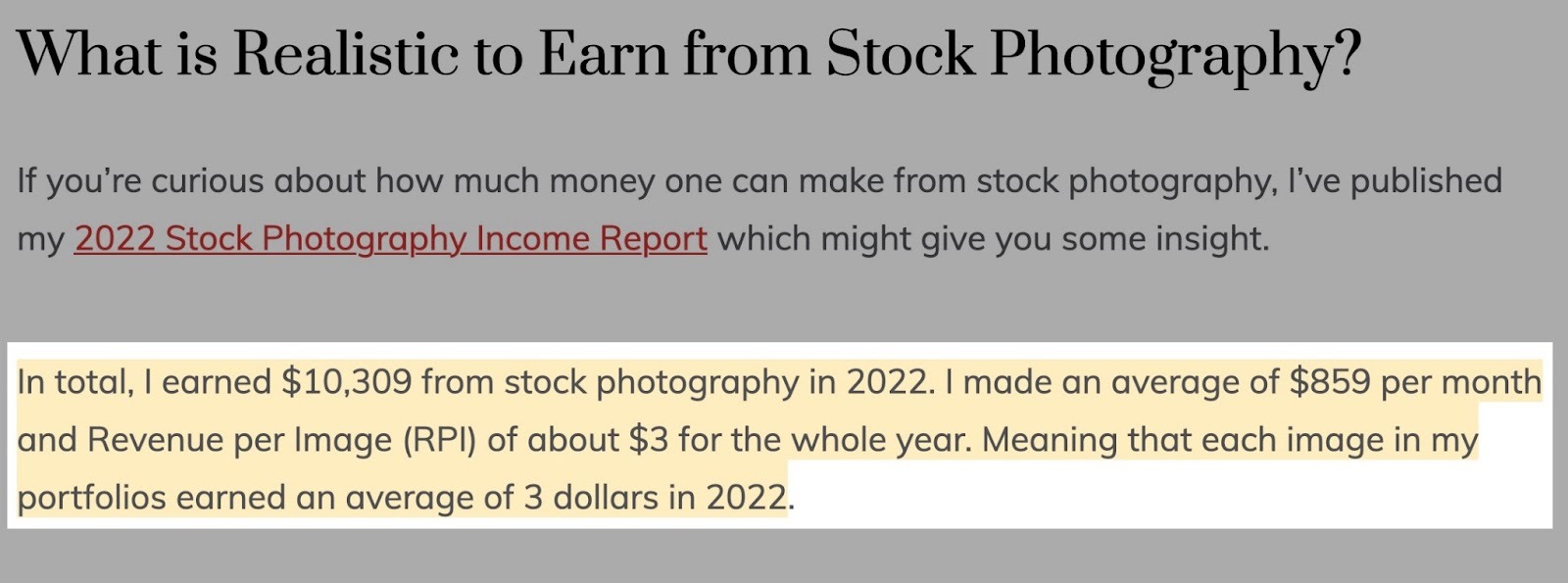
You can build that kind of passive income too.
How do you start?
First, choose your niche.
The most profitable stock photos are ones that fill specific needs. Like business, travel, lifestyle, food, or nature.
Look at what’s trending on sites like Shutterstock, Adobe Stock, or Pexels to get ideas.
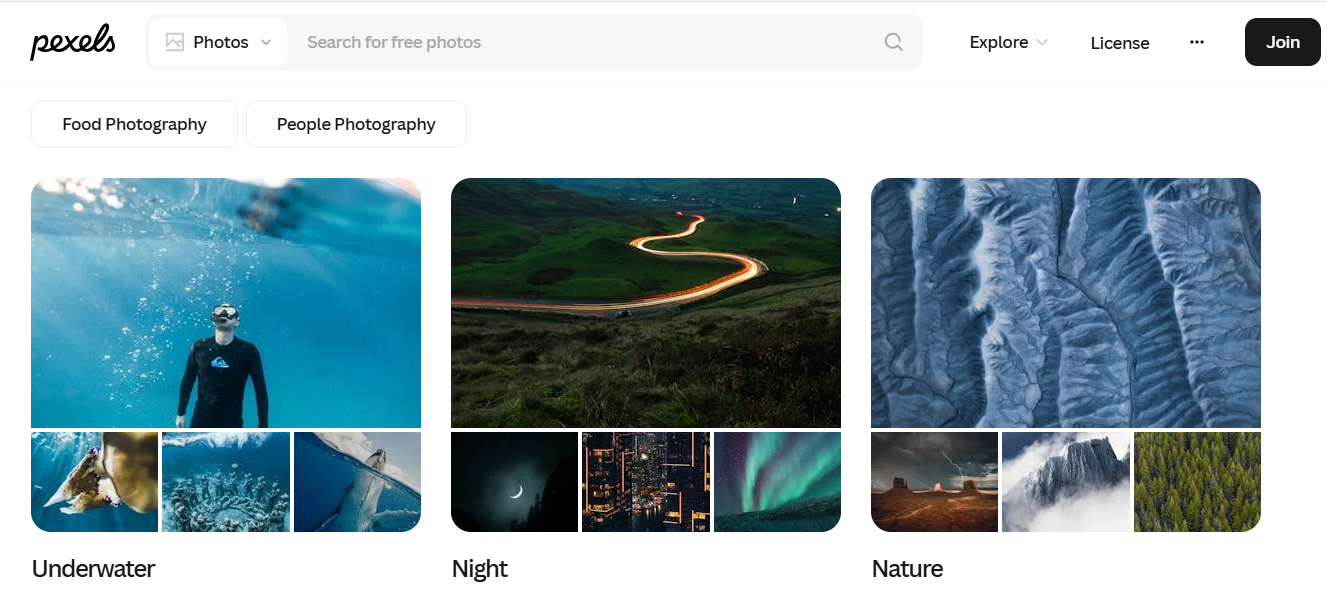
Next, start taking photos using your camera or even your smartphone. Make sure your pictures are well-lit, sharp, and tell a clear story.
You can use free editing tools like Canva or Pixlr. Or advanced ones like Lightroom, to improve brightness, contrast, and color.
You also need to tag your photos very carefully so that they can be easily found in searches.

Once your photos are ready, upload them to multiple stock photo platforms.
Create contributor accounts on Shutterstock, Adobe Stock, Alamy, or Freepik Contributor.
Now each time someone downloads or licenses your image, you’ll earn royalties.
How much can you make per month?
On average, stock photographers earn about $0.02 per image per month, meaning a portfolio of 1,000 images could bring in around $20 monthly.
More experienced photographers who produce high-quality, in-demand photos can earn between $0.05 and $0.25 per image per month, raising that same portfolio’s earnings to $50–$250.
Most stock photo agencies pay around $0.32 per royalty-free image sale, with each sale earning photographers anywhere from $0.10 to $99.50, depending on the platform.

If you join a platform like Stocksy, you can earn commissions of up to $200 per standard sale and as much as $8,100 for extended licenses.
[fs-toc-omit]What I loved vs What I didn’t like
What I loved 👍
✅ You can start with your smartphone
✅ It’s a great way to build a photography portfolio
What I didn’t like 👎
❌ Platforms can be competitive.
17. Blogging
Blogging is one of the most famous passive income ideas, and for good reason.
It’s simple: you write about what you know, share it online, and build an audience.
That audience can turn into income through ads, affiliate marketing, sponsored posts, digital products, and even online courses.
Your words then literally can pay your bills. In fact, the right words can make you a millionaire.
Look how it worked out for Michelle Schroeder-Gardner, founder of Making Sense of Cents.
She started her blog while paying off student loans and, within a few years, was earning over $100,000 per month from it.
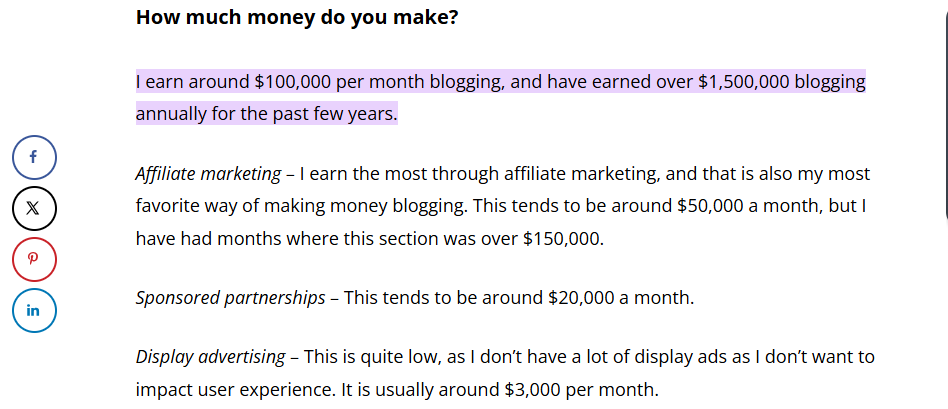
How do you start?
People have written entire books on how to get a blog going. But I’m going to try to help you out with 5 clear steps.
Step 1. Pick a niche that inspires you and pays.
Choose something you enjoy writing about, but that also has strong income potential.
For example, Michelle Schroeder-Gardner built her blog “Making Sense of Cents” around personal finance.
Similarly, Lindsay Ostrom of Pinch of Yum turned her food blog into a six-figure business by sharing easy recipes and photography tips.
Step 2. Choose a blogging platform and hosting service.
WordPress.org is the most popular, while Ghost and Wix are other alternatives.
Step 3. Create valuable, SEO friendly content.
Write posts that answer real questions people are Googling.
Tools like Google Trends and AnswerThePublic, can help you find trending topics and optimize headlines.
Step 4. Promote your blog.
Share your posts on Pinterest, Reddit, or LinkedIn.
Another tip you can try is to repurpose posts into YouTube videos or Instagram reels to drive more traffic.
Step 5. Diversify your monetization.
Once traffic starts building, do not focus on only one stream of income. The best bloggers make money from multiple sources.
Affiliate links from Amazon (Amazon Associates) or ShareASale can earn you a small commission when someone buys through your link.
So if you have a travel blog for instance, you can link to your favorite luggage or booking sites.

You can also earn money from sponsored posts, as brands can pay you to feature their products on your blog.
How much can you make per month?
Beginners who post consistently for 3–6 months can earn around $100–$300 per month
Bloggers who’ve built an audience and added a few income streams beyond affiliate links or ads can make between $1,000 and $5,000 per month, based on data from SurgeGraph.

But once your posts start ranking on Google or Pinterest, they can keep bringing in traffic and affiliate sales for years, even if you stop publishing for a while.
[fs-toc-omit]What I loved vs What I didn’t like
What I loved 👍
✅ You can earn through ads, affiliates, and sponsorships
✅ Your old posts will keep making you money
✅ It’s great for building a personal brand and audience.
What I didn’t like 👎
❌ It usually takes about 6 to 12 months or more to see results
❌ You need to consistently post and promote your blogs
18. Audiobook narration
Personal rating: ⭐ ⭐ ⭐ ⭐ (4/5) | Easy/Difficult to start: Moderate | Starting cost: $0 to $300 | Tools needed: Laptop, microphone, quiet room, editing software | Estimated monthly revenue: $500 to $5,000+
Audiobooks are booming. Millions of people now prefer listening to books while driving, cleaning, or working out.
And people are getting tired of hearing AI voices all the time. So if you have a clear voice and enjoy reading, this may be a good source of passive income for you.
Once you record an audiobook, it can earn you royalties for years, every time someone buys or streams it, you’ll get money.
Perhaps soon you could become like Sean Pratt, a professional actor who has narrated over 1000 audiobooks and raked in lots of cash from royalty payments.

How do you start?
What you need is a quiet space, a decent microphone, and some patience.
Join platforms like ACX (Amazon’s Audiobook Creation Exchange), Findaway Voices, or Voices.com.
Then, record a short 2–3 minute demo to demonstrate your tone and voice.
As a beginner, look for beginner-friendly projects from self-published authors (they’re almost always hiring).
When you land a gig, you can record and edit your work using a free tool like Audacity, or paid options such as Adobe Audition and GarageBand.
But if you want to earn real income though, it’s better to record your own ebooks and get money directly from them.
Easytools has a section in its product feature called ‘Audio’ where you can post your audiobooks and market them directly to customers. With that all the income comes directly to you, no royalties.
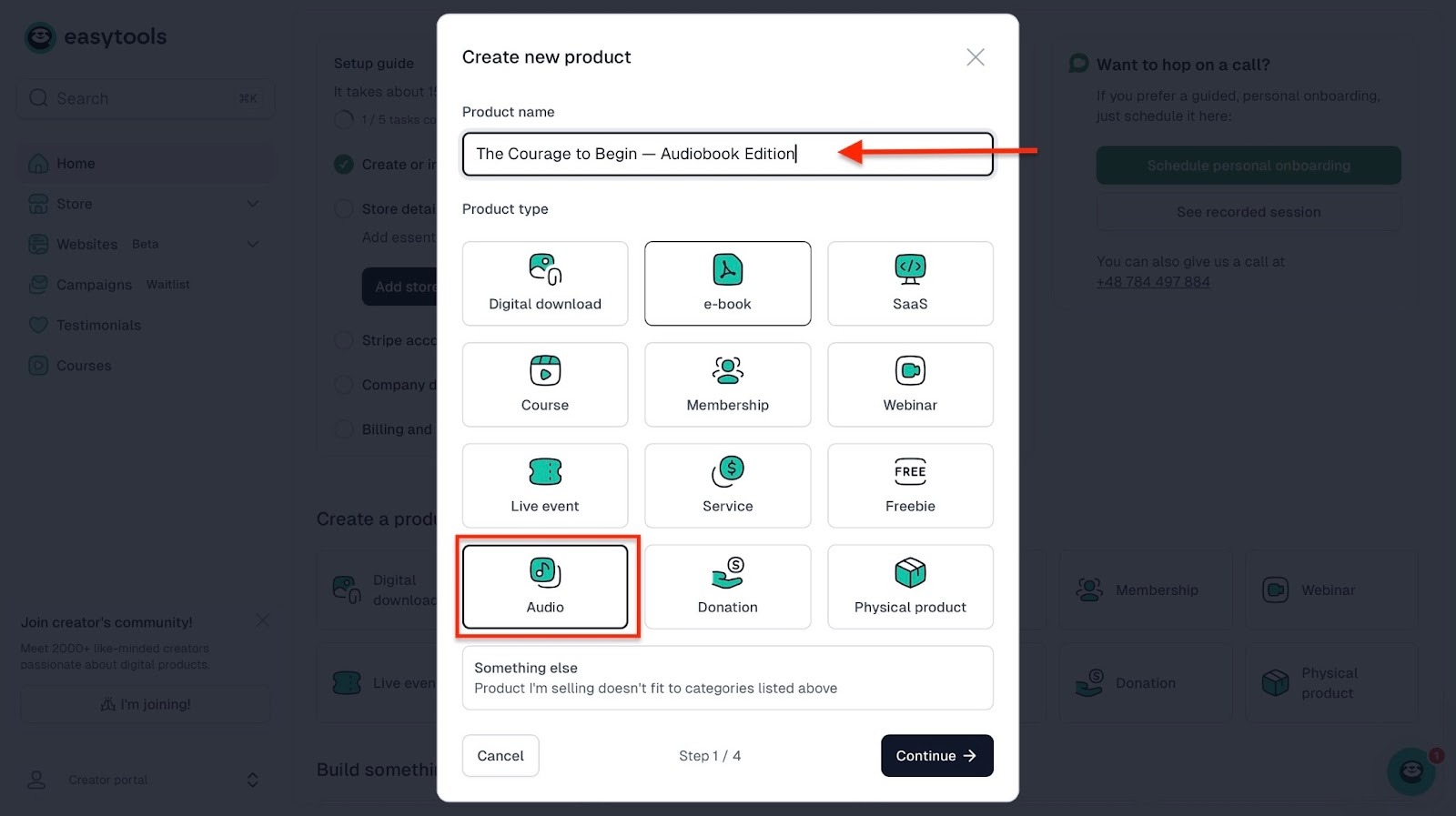
How much can you make per month?
First note that these platforms pay “Per finished hour(PFH).”
“Per finished hour” means you’re paid based on the final length of the audiobook.
If your audiobook is 5 hours long, you’re paid for 5 hours of completed audio, not for the total time spent recording and editing it.
So in reality, you may work for 20 or more hours just to get your required PFH to get paid.
Now let’s look at the earning potential.
According to Backstage, beginner audiobook narrators earn around $10 to $100 PFH, while more experienced professionals earn $100 to $500 PFH.
You may end up doing a lot of work for little returns.

That’s why recording and publishing your own audiobooks can be far more profitable.
Instead of taking royalties or one-time payments from other authors, you can now sell directly to listeners.
With Easytools’ audio product feature, you can upload, market, and sell your audiobooks straight to customers, keeping 100% of the profits.
[fs-toc-omit]What I loved vs What I didn’t like
What I loved 👍
✅ It’s a fun and creative way to earn money
✅ You can start with minimal equipment: a good USB microphone and free recording, or affordable software like Audacity
What I didn’t like 👎
❌ It requires time, focus, patience, and attention to detail because you must maintain a consistent tone, pacing, pronunciation, and emotional expression for hours
❌ Recording, editing, and mastering audio can be time-consuming
19. Create a mobile app
Personal rating: ⭐ ⭐ ⭐ ⭐ (4.5/5) | Easy/Difficult to start: Difficult | Starting cost: $0 to $1,000 | Tools needed: Glide, Adalo, or FlutterFlow | Estimated monthly revenue: $1,000 to $50,000+
Smartphones are everywhere. Because of that, apps are everywhere.
People have an app for everything. Fitness trackers, journaling tools, study planners, recipe collections, drinking reminders, you name it.
The good news is, you can also build an app and start earning from it.
That’s what Josh Mohrer of Wave AI Note Taker did, and within 8 months, the app had reached $ 4 million in recurring revenue.
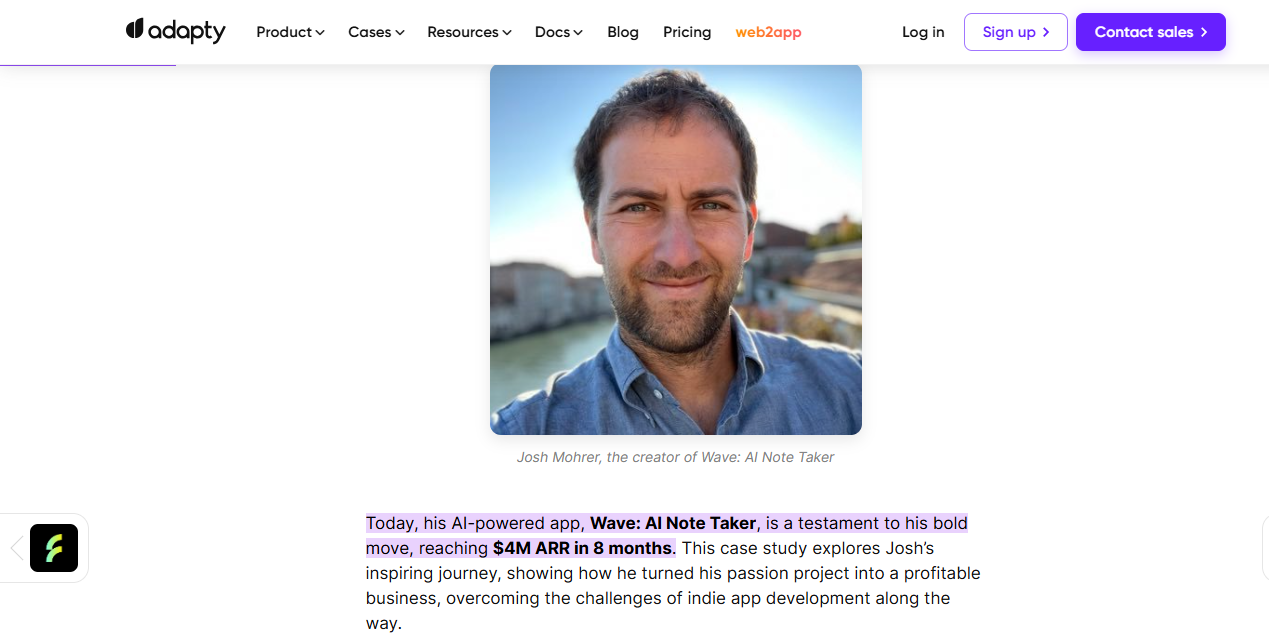
How do you start?
The best apps make people’s lives easier.
I have an app that reminds me to drink water because I tend to forget.
So think about what annoys you daily, or a weakness you may have, and that might just be your million-dollar idea.
Next, sketch a simple layout of your screens (home, profile, settings, etc.). Tools like Figma or even pen and paper will work fine.
Now if you know how to code, you can probably go about designing the app.
But if you don’t know how to code, tools like Adalo, Glide, Bubble, and Apphive are all no-code platforms you can use.
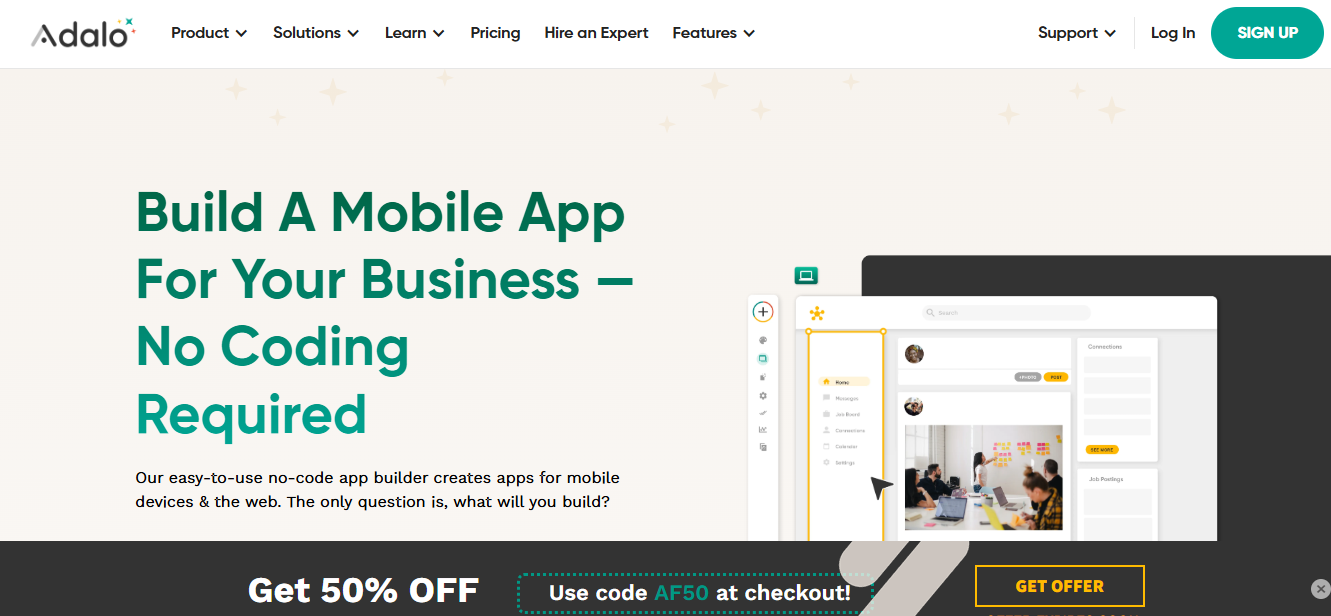
Go to the platform, create an app, drag and drop elements like buttons, images, and text fields and add payment/subscription options.
Then preview your app on your phone, fix any UI and flow issues you identify and publish to the Apple App Store or Google Play through your builder platform.
It’s that simple.
Now all you need to do is promote your app. You can do this with engaging social posts or short videos showing how your app works.
If you’re already using Bubble.io, here’s a quick guide on how to connect Easytoools to it.
How much can you make per month?
App income largely depends on your niche and how you monetize, ads, subscriptions, or one-time purchases.
Beginners who release simple apps that get fewer than 1,000 downloads may make about $100–$500 per month.
If you’re seriously considering building an app, this is the best time to do so.
According to Business of Apps, small developers are seeing strong performance in the mobile app industry with some earning up to $1 million per year in revenue.

So a $1,000 or more monthly income isn’t unrealistic if you focus on usefulness, marketing, and retaining customers.
[fs-toc-omit]What I loved vs What I didn’t like
What I loved 👍
✅You can build apps with zero coding experience thanks to no-code and low-code platforms like Bubble, Adalo, Glide, and more
✅ A successful mobile app can bring in money through ads, in-app purchases, and subscriptions
What I didn’t like 👎
❌ Apple App Store and Google Play take 15% to 30% of your earnings
❌ You have to market your mobile app and that can be costly
20. Sell photography online
Personal rating: ⭐ ⭐ ⭐ (3/5) | Easy/Difficult to start: Easy | Starting cost: $300 to $1,000 | Tools needed: Camera or smartphone, editing software, online store platform | Estimated monthly revenue: $500 to $8,000+
Selling photography online goes a step beyond uploading stock photos.
You don’t just earn small royalties per download, you own your brand, set your prices, and sell directly to customers.
You can sell digital prints, framed wall art, and exclusive photo collections.
A good example of someone who does this is Zach Nichols, who sells photographs of moody landscapes and other photos on instagram and on his website.

How do you start?
To begin, you need to have a collection of well-curated, high-quality photos. If you don’t have that, you have nothing to sell.
You want to have pictures people will want to display. Think of travel, nature, cityscapes, portraits, and minimalistic designs.
Then edit them with tools like Lightroom or Capture One for a professional look.
Now I can market my product on my website or on instagram with the shareable link.
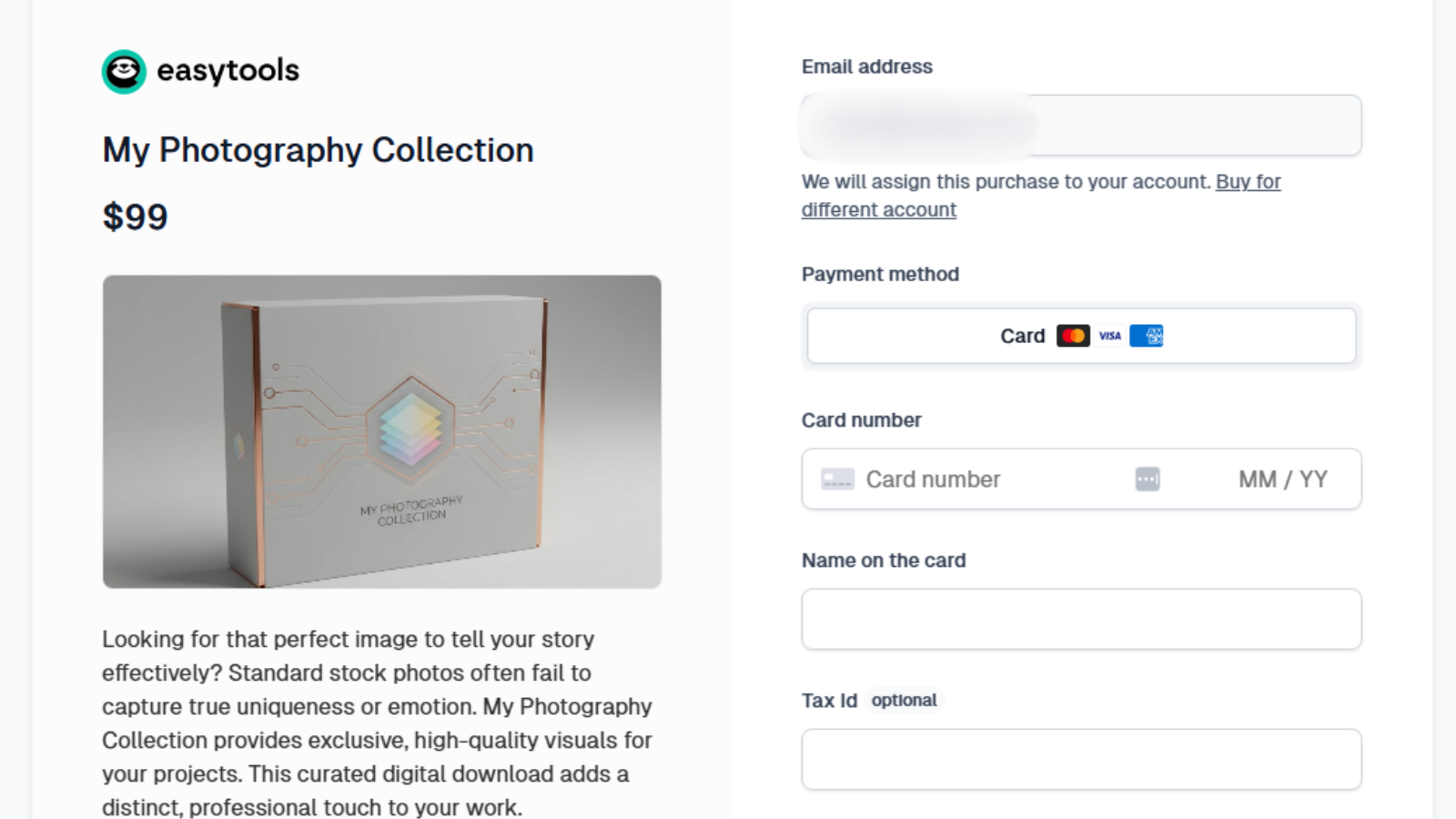
But what if you’re thinking, “I don’t have a website yet.” You have nothing to worry about. You can use Easytools to create your own landing page.
In their annual State of the Photography Industry report, Zenfolio reported an increase in client based photography and fewer businesses closing and an average earnings of $1800 a month from online sales alone.
This is important because it was feared that AI images would take over and the photography industry would become unprofitable.
But the opposite may yet take place.
With the rise of AI images, the value of real photographs should increase.
As long as photographs keep selling, you can manage your shop through Easytools.
Track your best-selling photos, customer data, and earnings easily so you can focus on your art and not on mundane administrative tasks.
[fs-toc-omit]What I loved vs What I didn’t like
What I loved 👍
✅ You own 100% of your sales—no platform commissions
✅ It’s perfect for photographers who want control and brand recognition
✅ You can turn your art into products like prints, presets, calendars
What I didn’t like 👎
❌ Camera gear and editing tools can be expensive
❌ You must be careful not to include logos or brands in your pictures without permission
Choosing the right passive income idea
To choose the right passive income idea, you should:
- Match your skills and knowledge to the
- Research market demand and trends
- Access cost and income growth potential of the passive income idea
- Consider the time you need to invest in it
Now, let's look at each factor in detail.
1. Match to your skills and knowledge
You don’t have to be an expert investor to start earning dividends on the stock market. Or a professor to launch an online course.
Neither do you have to be a bestselling author like Stephen King to write an e-book. What’s important is that you match skills and knowledge.
That way, you can learn faster, and applying what the lessons teach won’t feel like another 9-to-5.
If you're already a photographer, you can take more pictures and start sharing on Shutterstock for passive income. You could then use that money to invest in an ETF.
If you're into tech, building a simple AI SaaS tool would be easy. Also, you would be the best person to know the kind of problems a tool like that can solve.
Take Melyssa Griffin, for example.
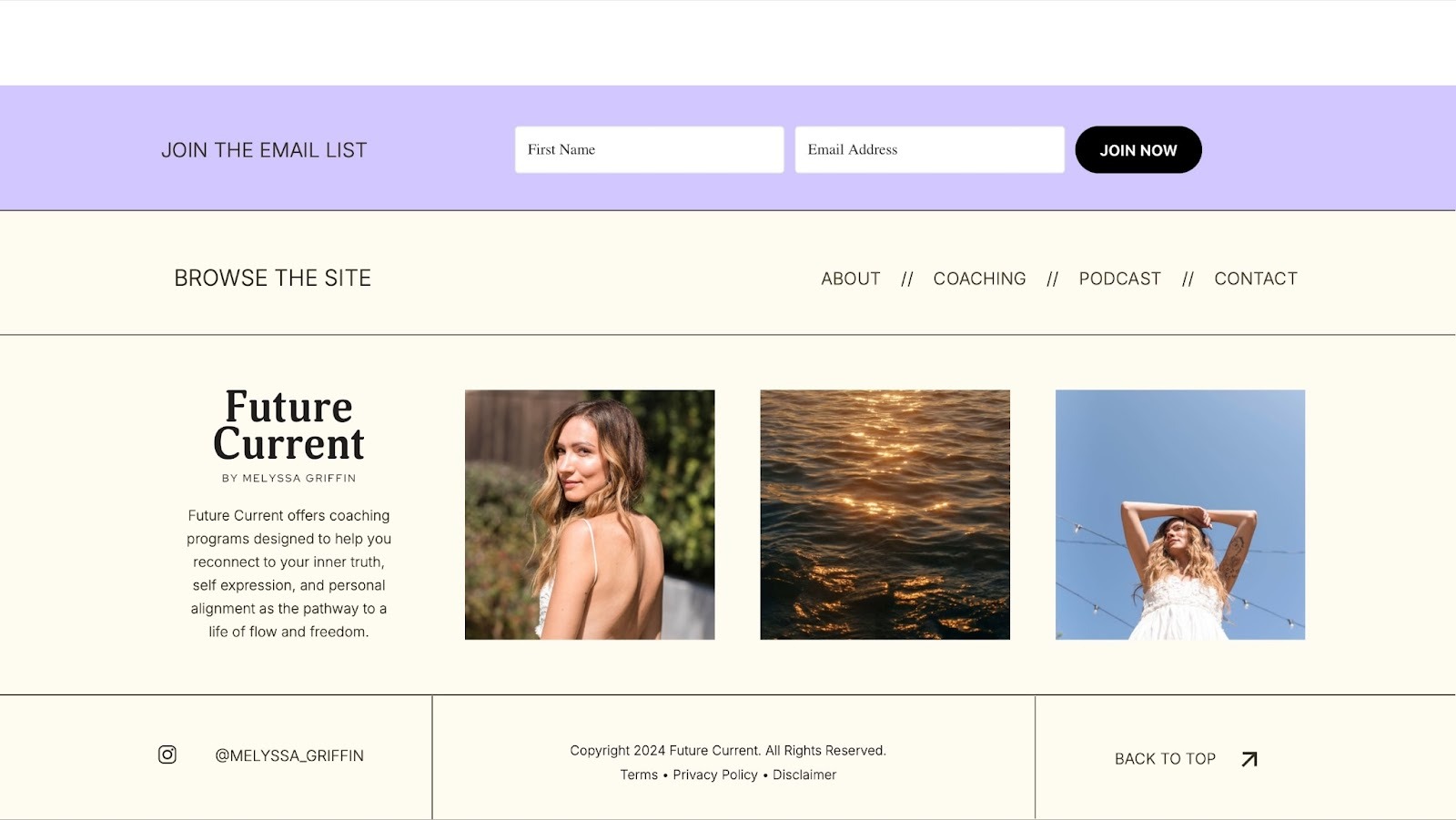
She’s a former high school teacher turned entrepreneur. She taught English in Japan, so she already had writing and communication skills.
So she used this knowledge to start blogs about personal development, which grew into many online courses and memberships.
Melyssa made $1.3 million with her online education company in her first year.
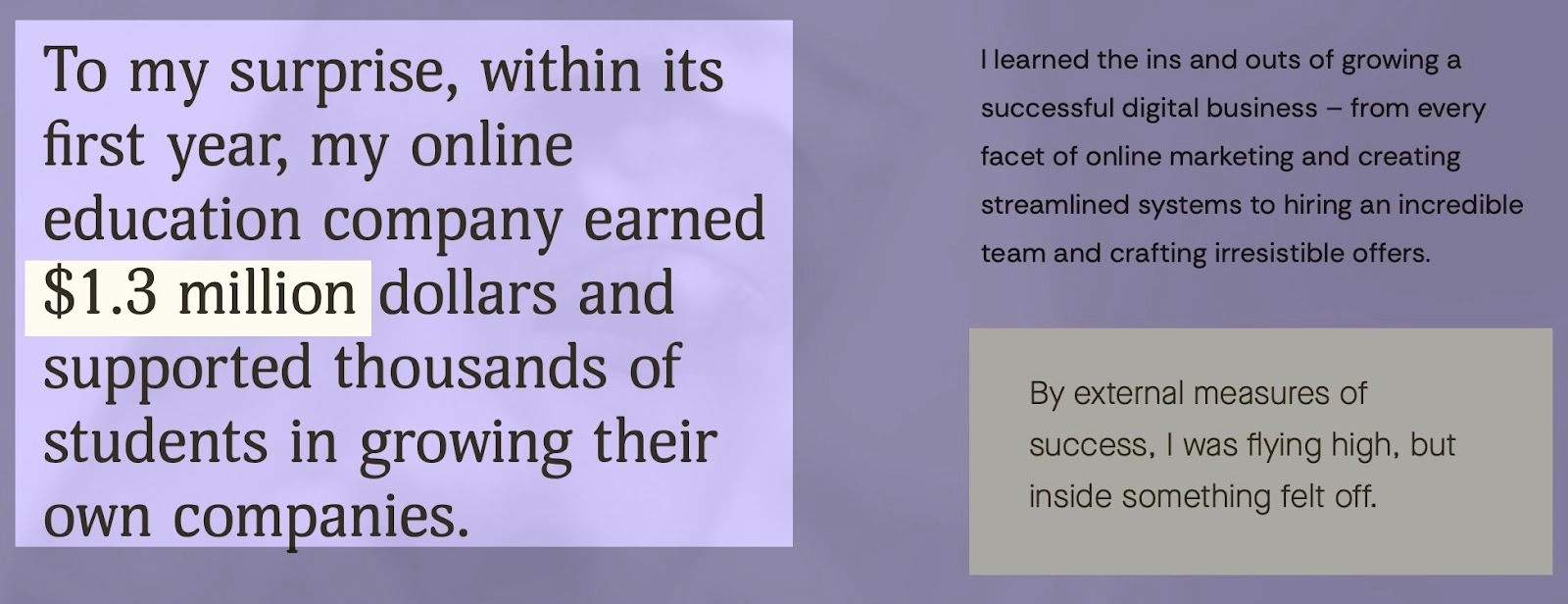
So what did she do right? She tapped into the very skill and knowledge she already had. She didn't try building a mobile app even though that’s also a passive income idea.
So don’t chase every new trend or idea because you feel it promises more passive income. Start with your skills, experiences, and knowledge. You can also learn more once you start.
2. Research market demand and trends
You should research market demand and trends when choosing the right passive income idea.
Basically, all I’m saying is find out what others are doing. Also, check to see if they’re getting the results you want.
For example, if you're a musician and you’d like to share your songs for royalties, you must do some research. You must find out:
- Which platforms (like Spotify, SoundCloud, or DistroKid) pay the best rates
- How much you can earn on a monthly or yearly basis
- What genre of music is trending now
- What other musicians are doing to diversify their income (selling merch or sheet music of their songs)
- Whether collaborating with other musicians will help you get exposure and earn more
I could go on and on, but the real question is, where should you start searching for these answers?
The answer is to start online.
First, go to Google Trends and type “print on demand” in the search bar.
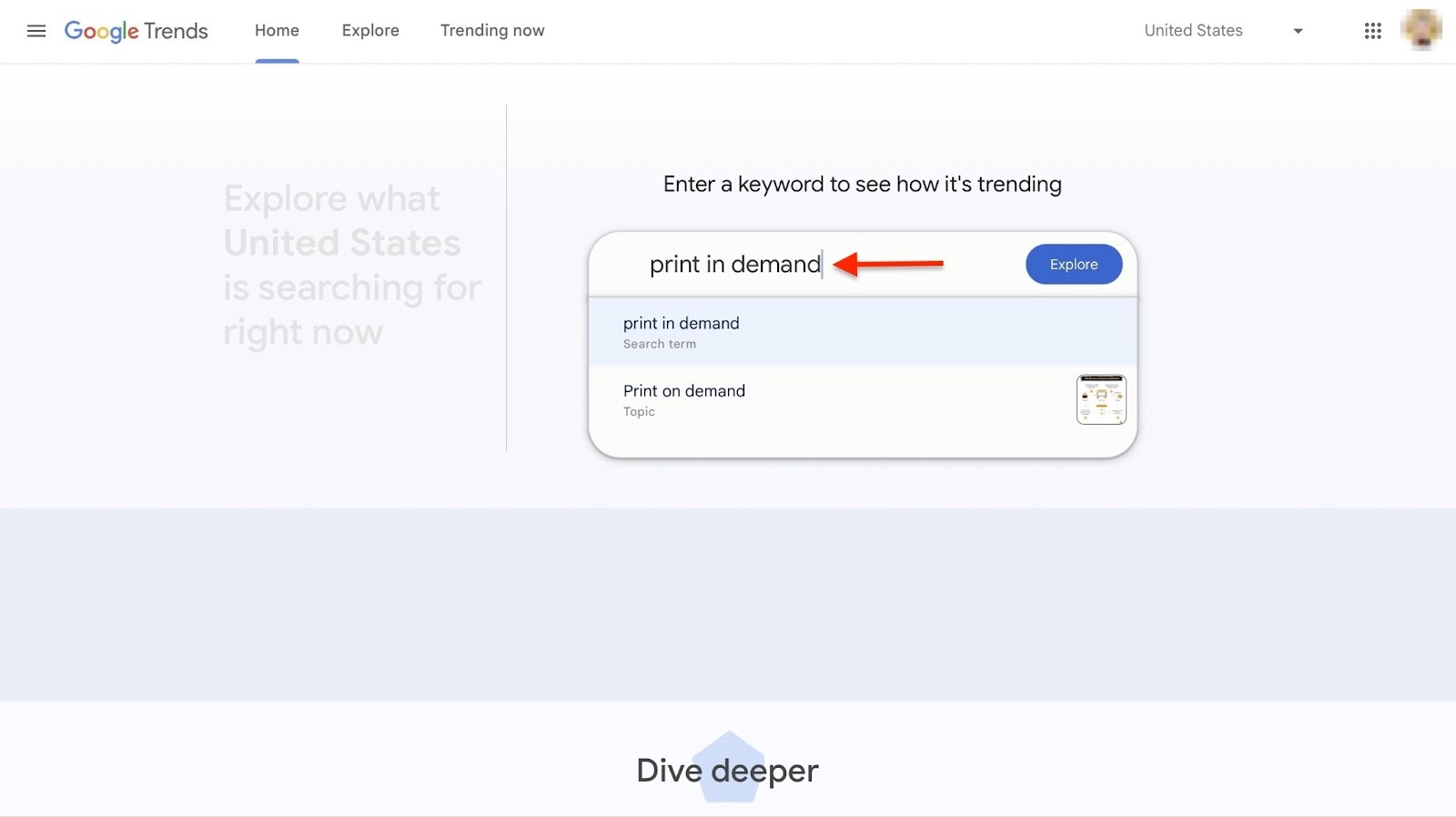
You can see how interest in that topic has changed over time. Or set the time to the past 12 months, the past 30 days, or to your own custom range.
It’s also possible to see the worldwide trend or set it to a specific location like the US.
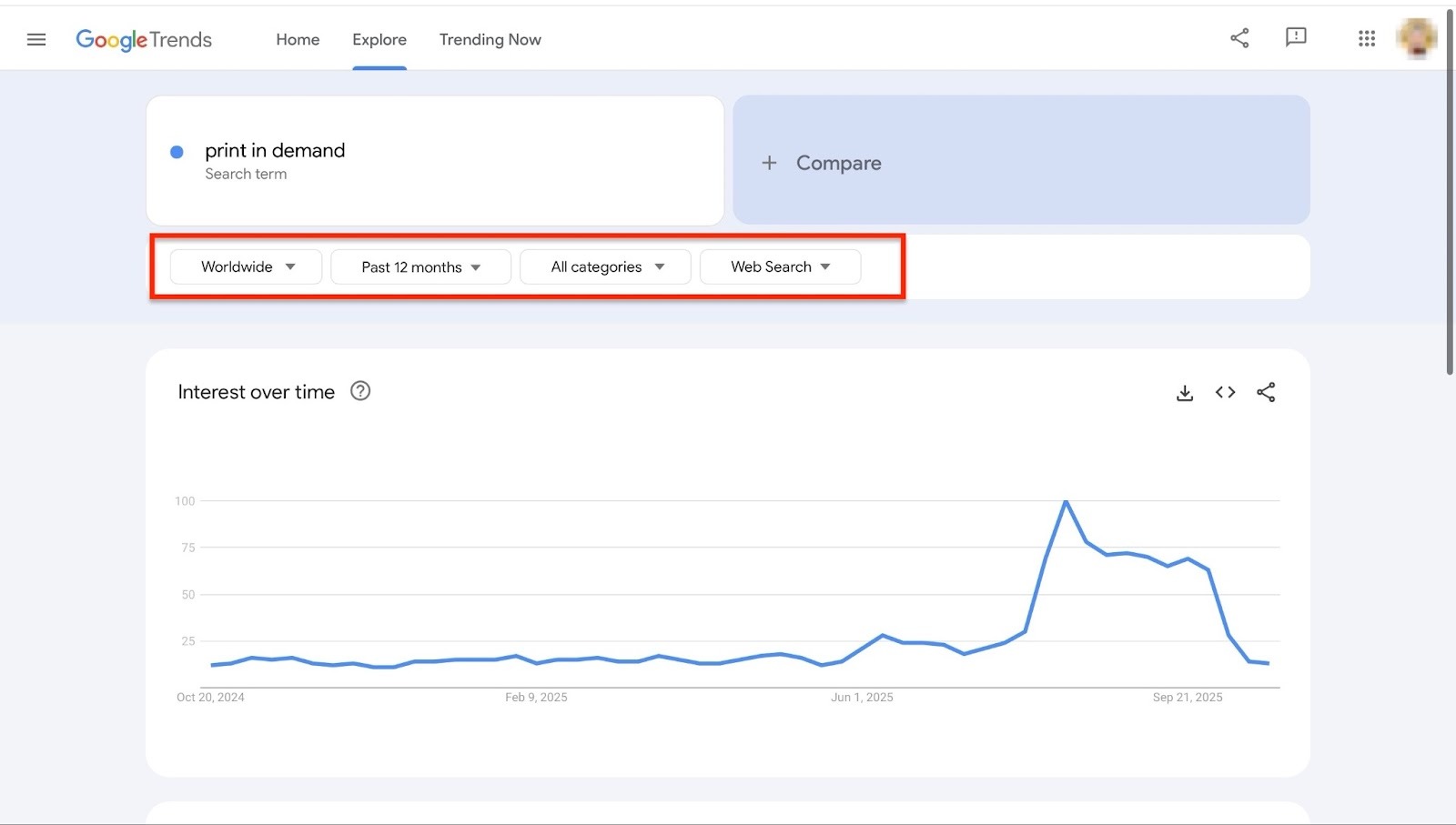
Scroll down to check interest by region.
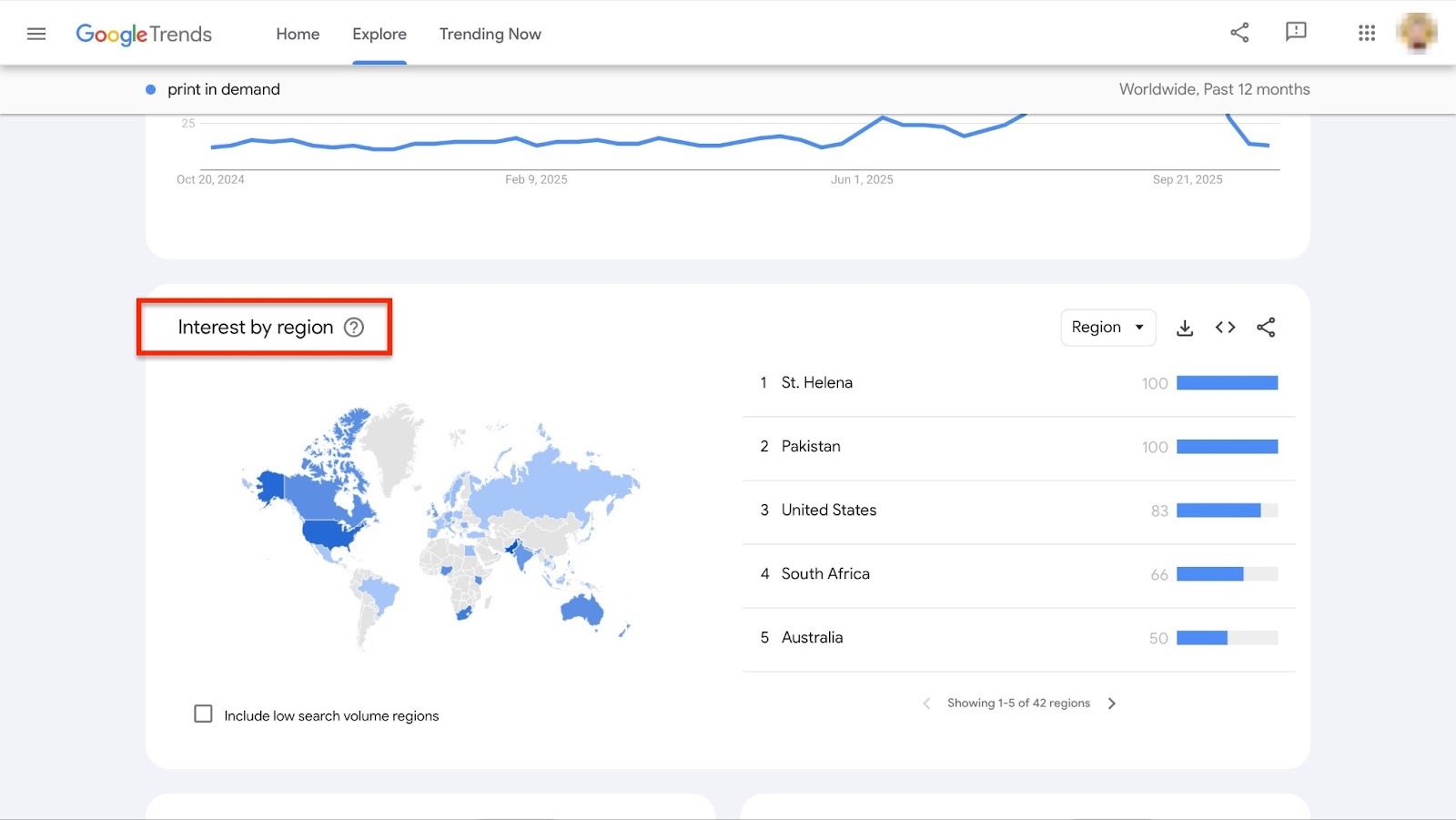
Let's say you typed “affiliate marketing.” Scroll further down to view related topics.

You can even click each term to check people's interest. You can do that for any of the passive income ideas.
Another thing you can do with Google Trends is to compare two passive income ideas. Let's say you’re torn between online courses and memberships.
Type “online course” in the first search bar and then click “+ Compare” to add the other search term.
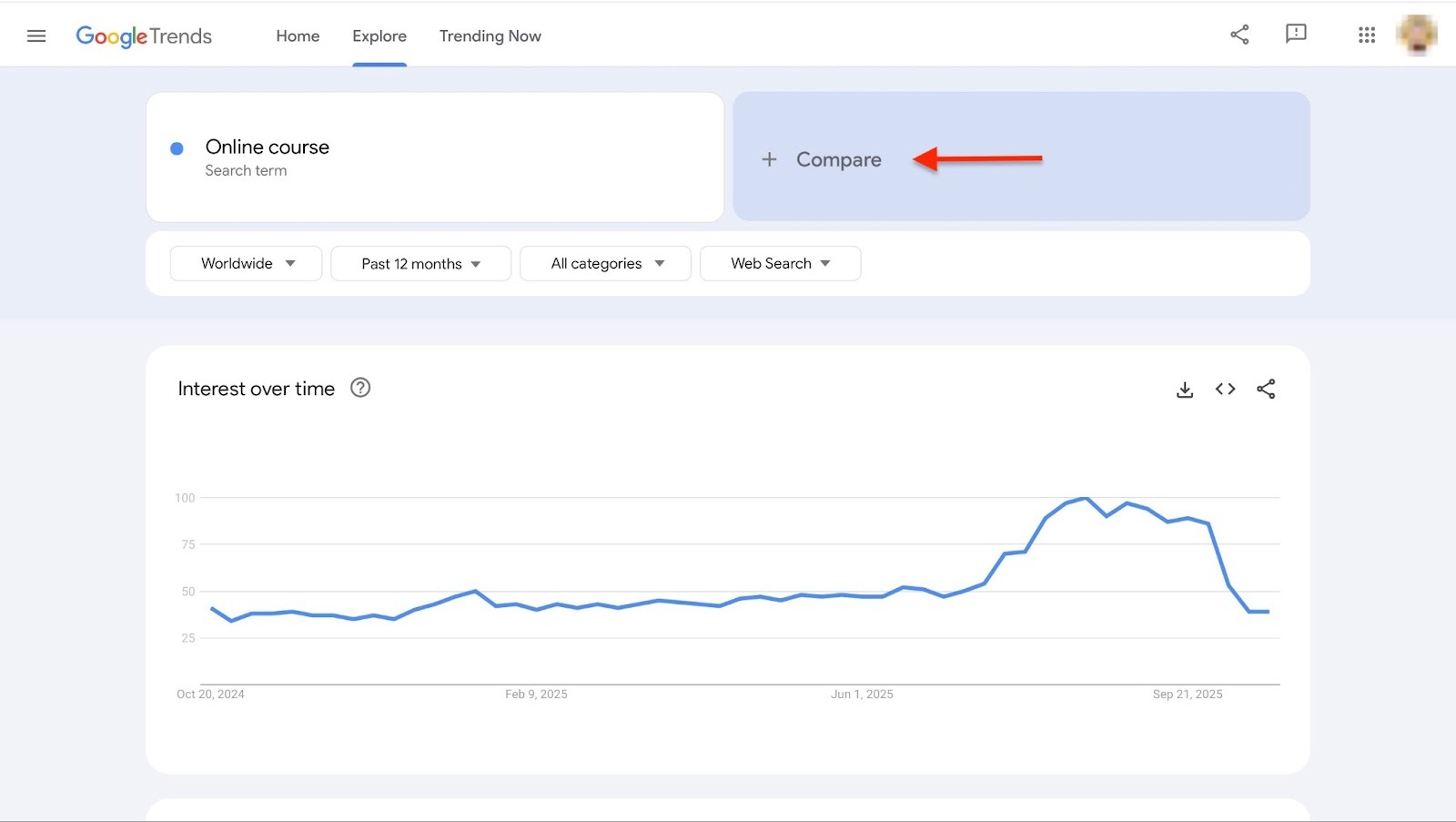
And then type “Memberships.”
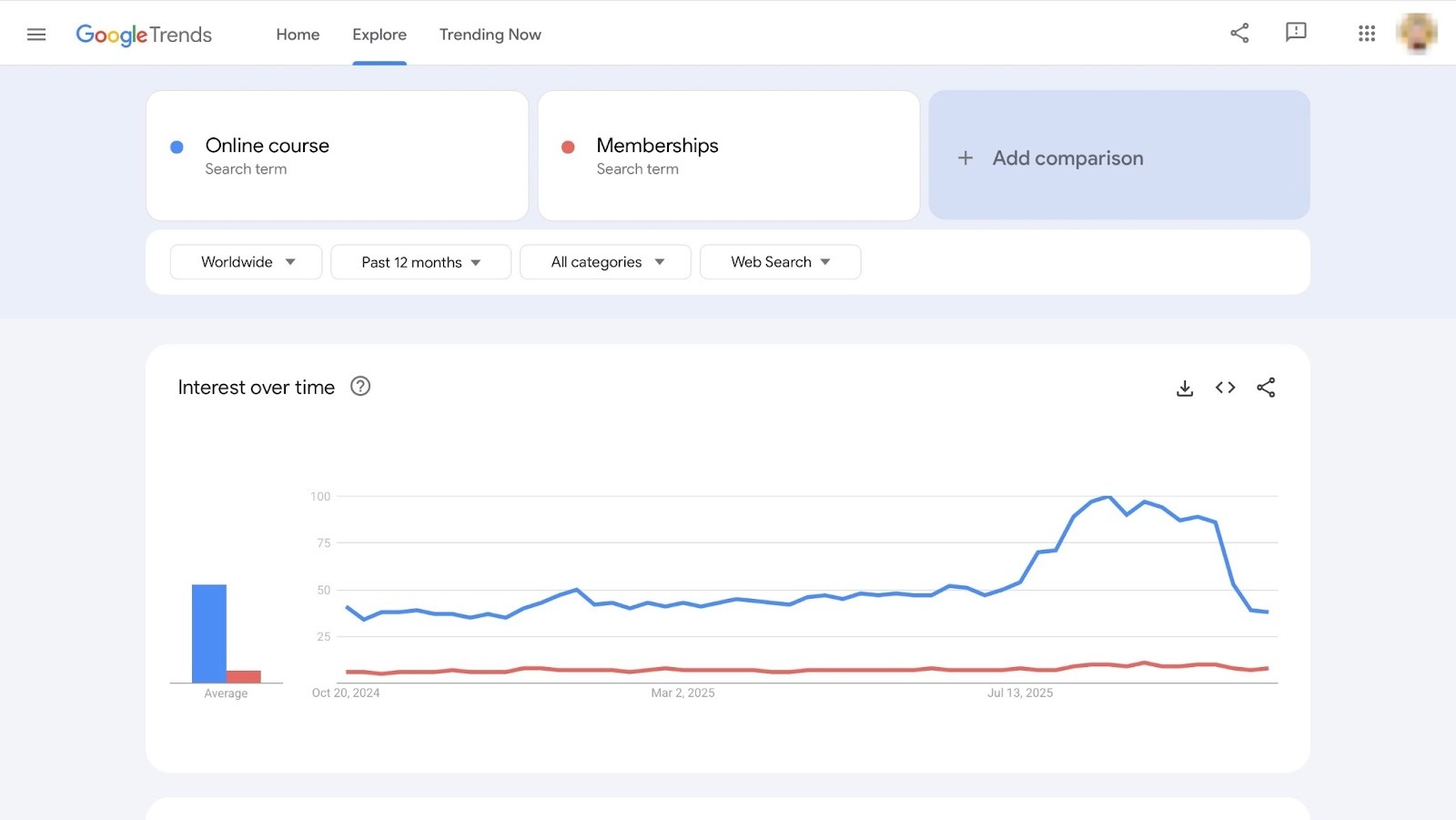
Only Google Trends isn’t enough for thorough research, though.
You have to type the search terms on Reddit communities, YouTube, and platforms like X or LinkedIn to see what people are saying.
Once you know what’s in demand, you can choose the right passive income idea that’ll give you the results you want.
3. Assess cost and income growth potential
The truth is, every passive income idea has a different price tag and growth curve.
So, when choosing your idea, you must consider the cost of getting started and how much money it could bring in over time.
For example, if you invest in real estate, you will need a lot of money to start. You’ll need cash for down payments, property taxes, and even maintenance.
It’s costly from the beginning but can generate a reliable source of income over the years.
On the other hand, if you start with online course creation or blogging, it can be very cost-effective at the beginning. You may spend between $0 and $50 and may only need basic equipment and probably a domain name. However, it could still take days, weeks, or months before you start earning.

So, this is how I see it:
- Lost cost but slow-growth ideas: I’m talking about creating an online course, writing an e-book, or even starting a small blog.
You will spend time and creativity more than money. But it may take time and a growing audience before you start generating income.
- High-cost, faster growth ideas: Here, I’m looking at vending machine businesses or real estate investments.
They require a lot of money when starting out but at the same time can generate faster profits, especially when set up correctly.
That's not all! You should also ask yourself how long it will take for your initial investment to start paying for itself.
That’ll help you choose the right passive income idea.
Let’s say you spend $50,000 on a rental property and it generates $800/month after expenses. You will need 62 months to first recover your initial investment. It’s only after that time that you can start talking about profits.
But as I discussed earlier, if you want to sell a profitable digital product like an e-book, you will only need a computer, and writing software.
The next expense is probably the platform you’ll sell your digital product. You can spend about $59/month, which means $708 for one full year.
Then that’s it. The beauty of it is you can sell your e-book over and over without any extra cost.
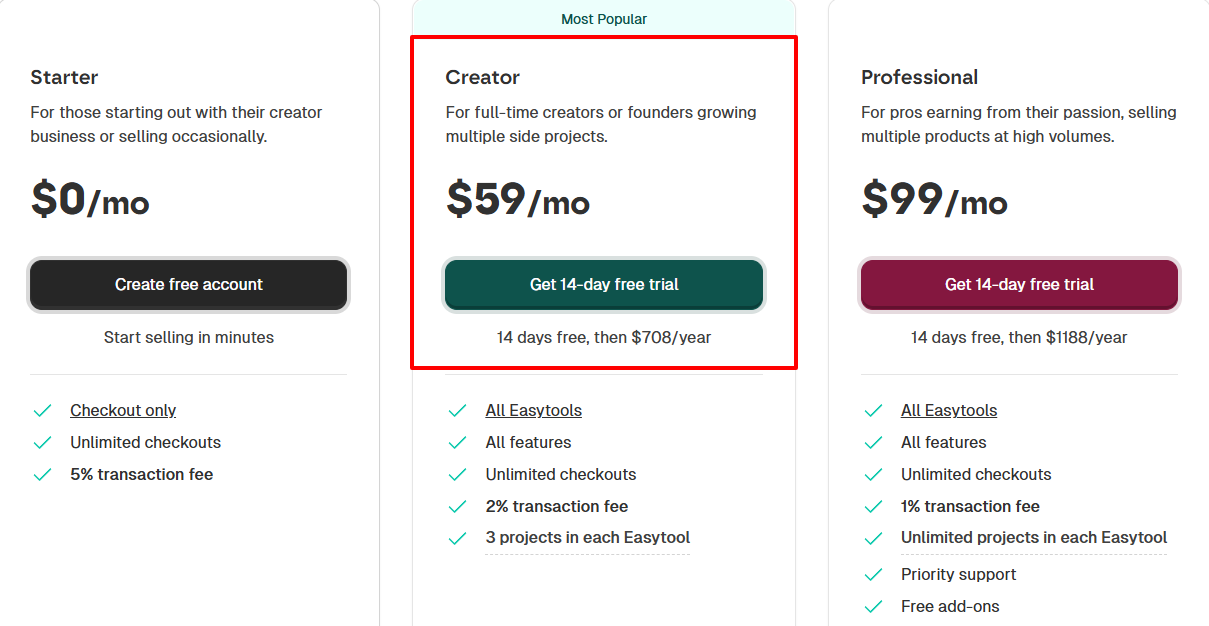
From these two examples, the first idea required a large sum of money to start while that latter was very cost-effective.
You really have to assess the cost of your passive income idea and its income growth potential.
4. Consider time investment
Here’s another thing I learned about passive income: some ideas take a lot more time than you’d expect.
You might have come across some creators on YouTube or TikTok saying, “I made about $15,000 from my ebook in just a month.” But they won't tell you how it took them months and late-night coffee to create and manage.
If you want to get into it, you should be honest with yourself about how much time you can give. The time you want to give should have:
- the upfront time
- the ongoing time
Let me explain.
The upfront time is what you dedicate to finding your niche and creating the product. This can be recording, developing, writing, and setting up.
The ongoing time is the time you dedicate to the product’s maintenance. You use this time to update prices, answer emails, promote the product, and much more.
For instance, I had to dedicate four months to reach half of my ebook on career coaching while working other jobs. When I finished, sales started coming in, and I had to dedicate fifteen minutes managing it, mostly after work.
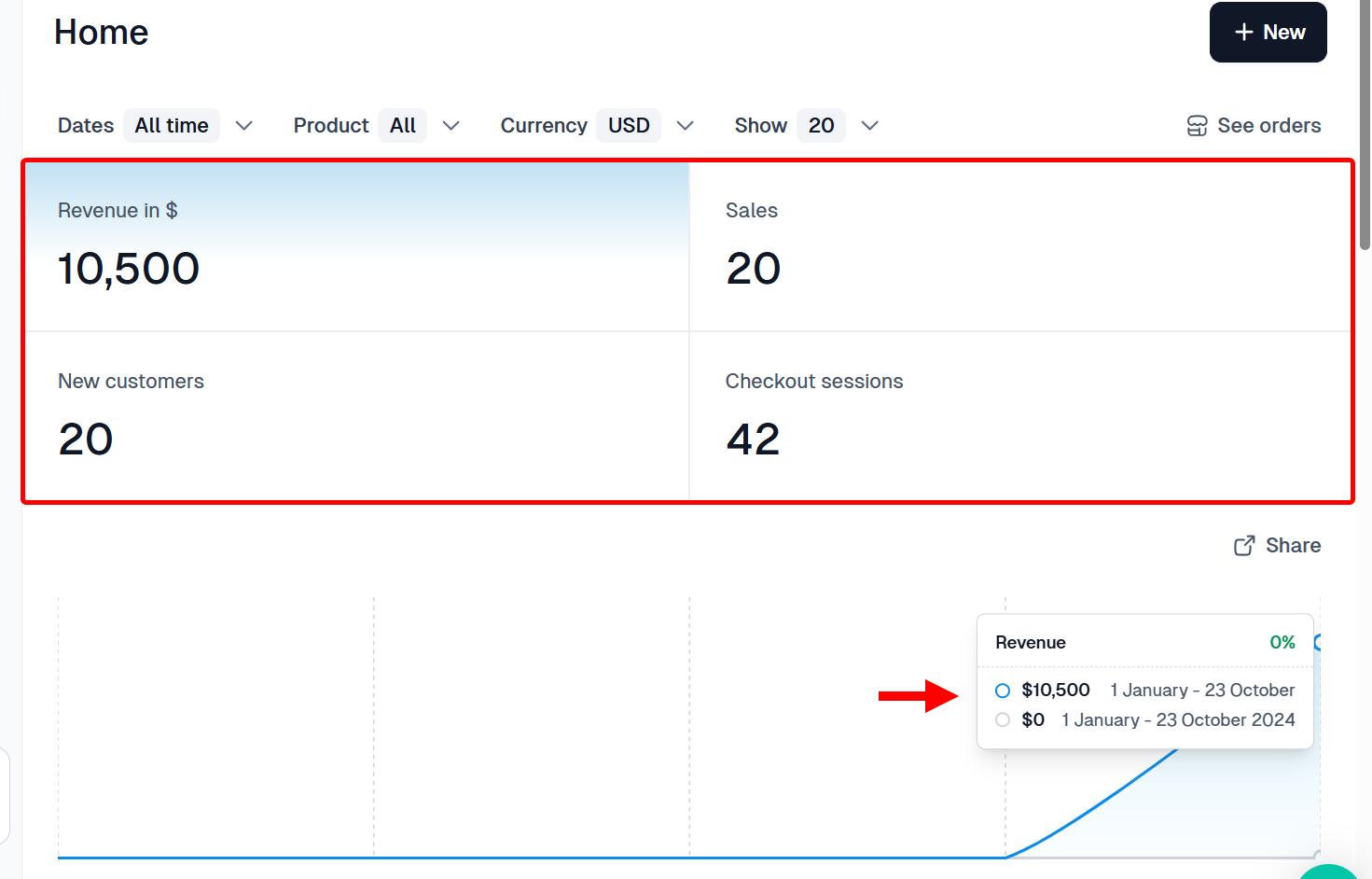
Also, I have planned on adding print-on-demand and templates like Notion, considering the time I can invest. I just have to design once and upload to keep selling.
Let's say you have a busy nine-to-five job like me. I’d recommend you start with products that do not require much maintenance, like an ebook, stock photos, and royalties.
But if you have enough time and patience, you may want to start creating a course, an AI tool, etc. You may need more time to maintain. It is easy to do all these on Easytools.
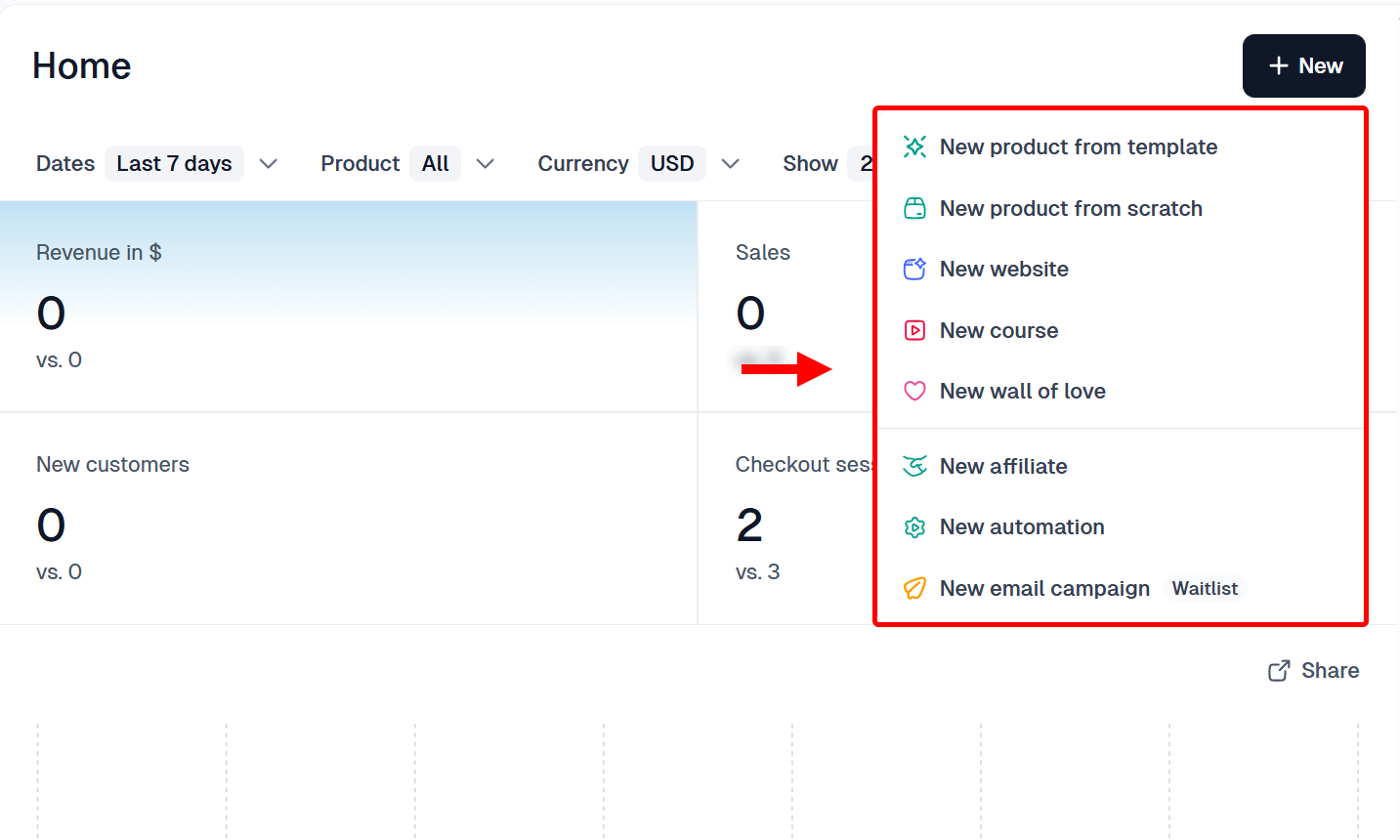
As a starter, your passive income may not be instant when you start. You may grind a bit before it starts to flow, based on my experience. But when it starts flowing, trust me, you will thank yourself for the effort and time you invested.
And if you really dream of selling your products even while you sleep, you can watch this Easytools’ masterclass video on how to sell digital products the Easy way.
Choose the right passive income idea
One thing I’ve learned is that there is no single way to earn passive income. What works for me may not work for you, and it's fine.
What really matters is to pick the idea you have skills and knowledge in, get the right market, make it fit your budget and consider what you will earn. You should not forget to look at the time you can dedicate.
If you are good at teaching, designing, and writing you can start there. Let's also say you spend hours on social media, you might want to turn that into affiliate marketing or blogging to earn. If you prefer something that does not require much effort, you can upload photos for royalties or invest in dividend stocks.
There is no need to overthink. You just have to select the idea, test it and see the results. If your first try does not earn you much, it is not an effort you wasted. You can always pivot.
I hope this comprehensive article helps you discover the passive income source that works for you.
Related articles
Ready for more? Check out these related articles that will keep your momentum going. They’re packed with easy-to-follow tips and tricks to help you supercharge your digital goods business.
Take it easy with Easytools
Focus on creating, and let Easytools handle the behind the scenes work.





